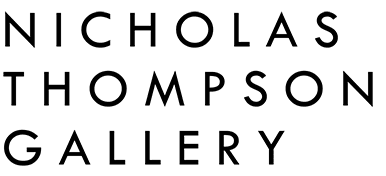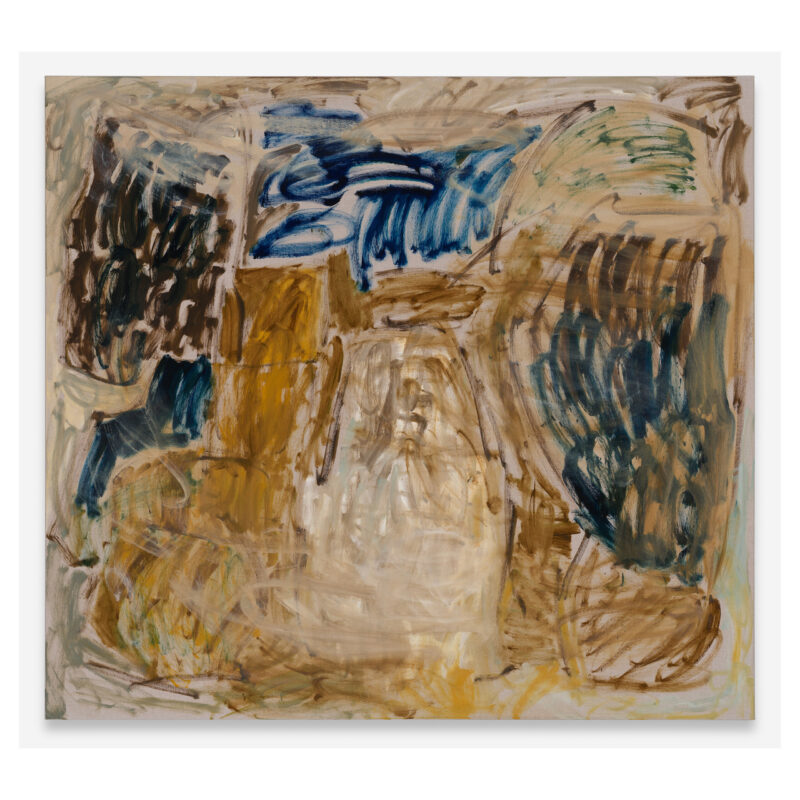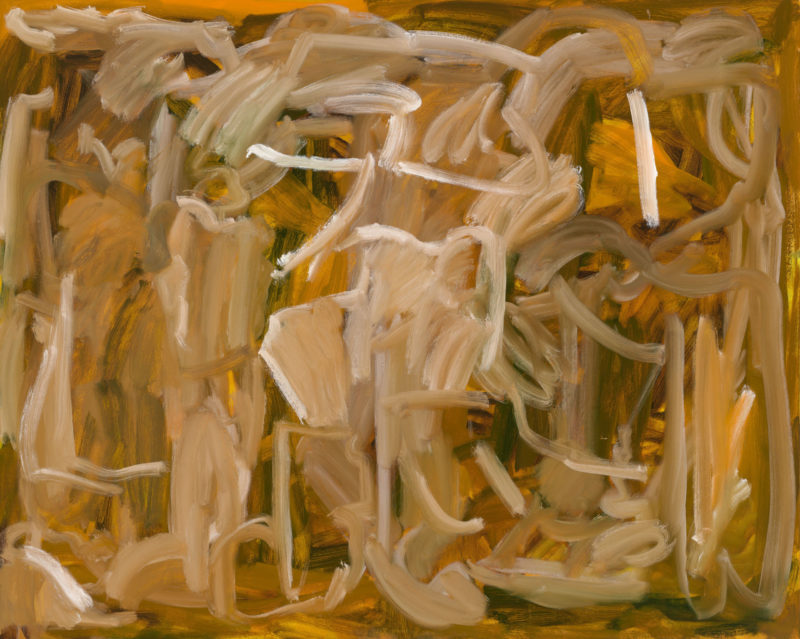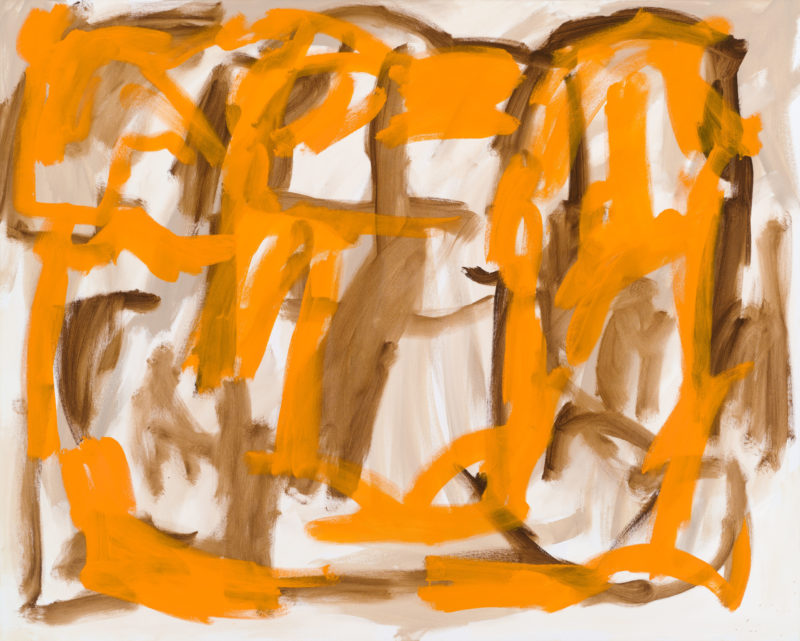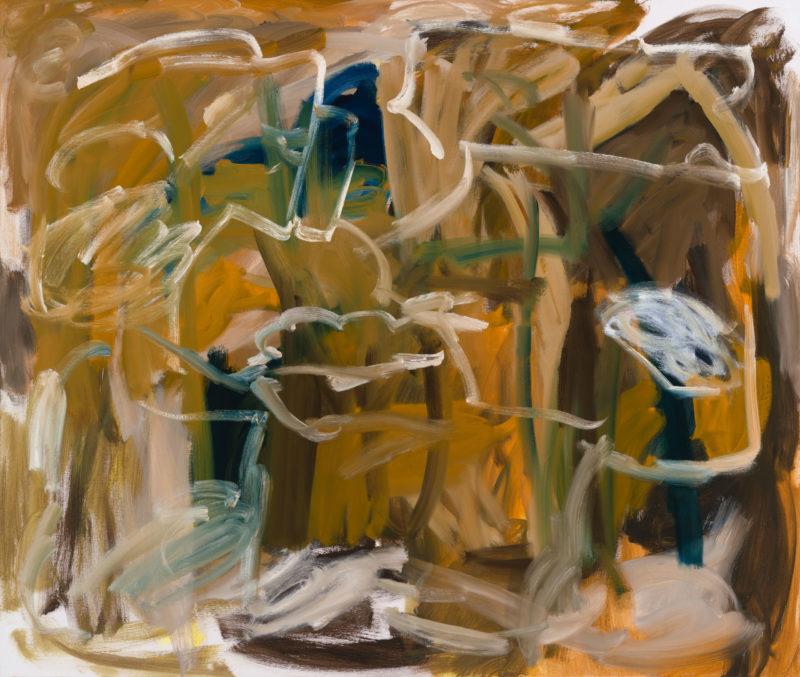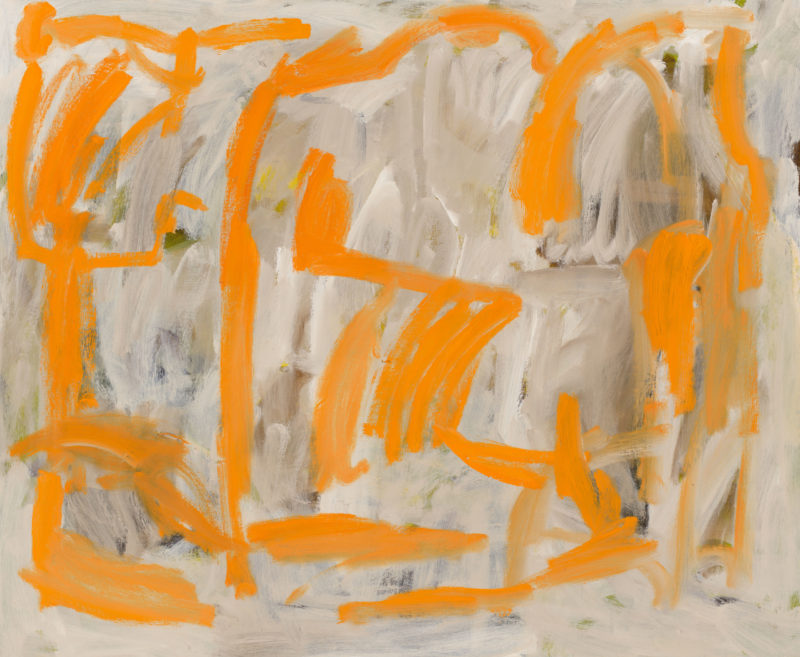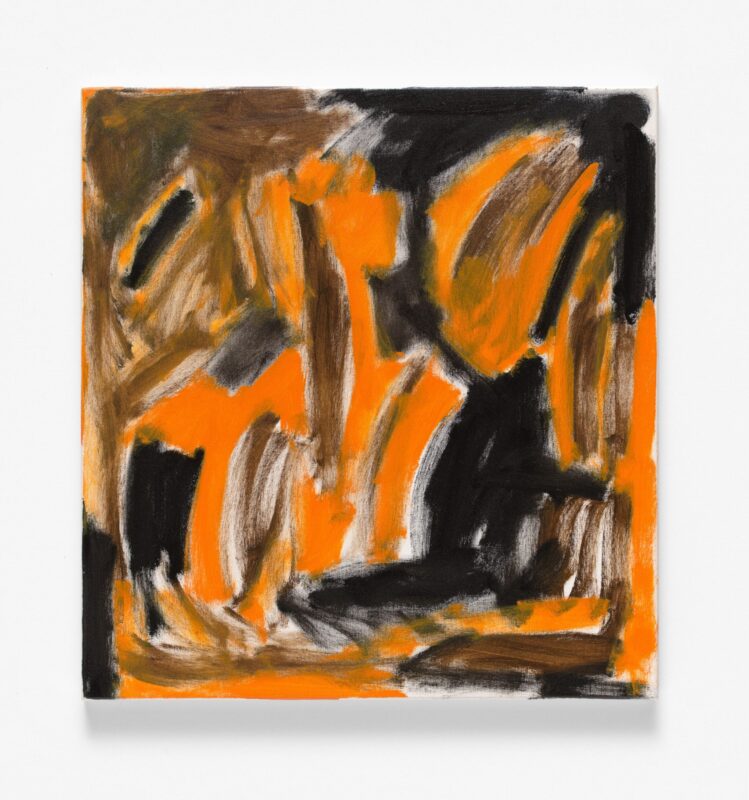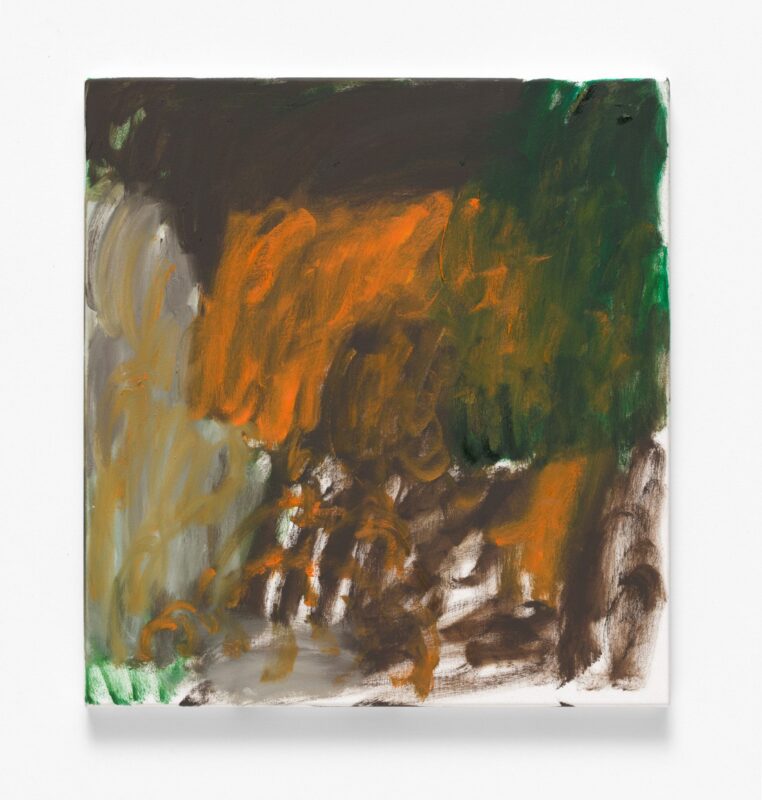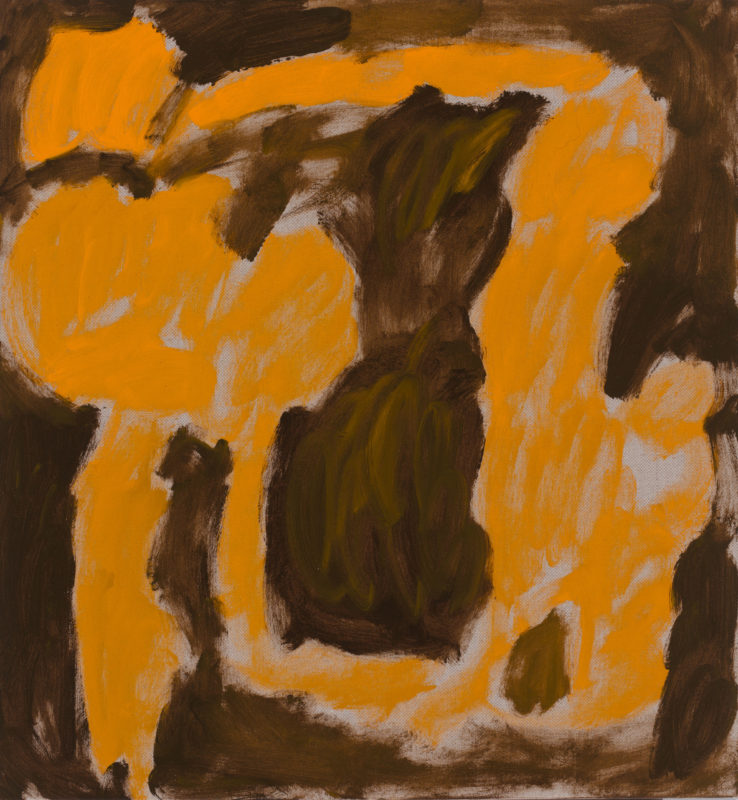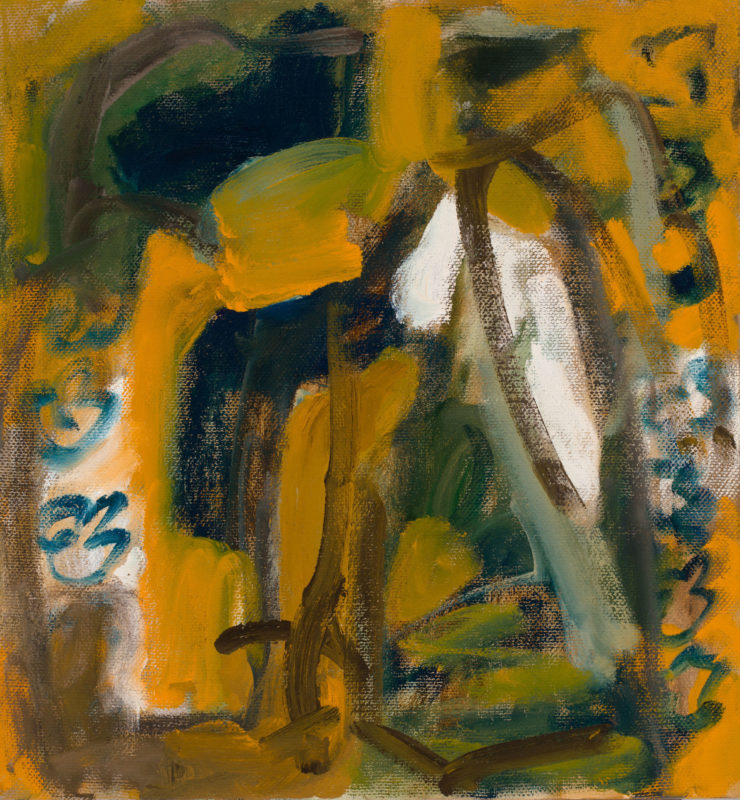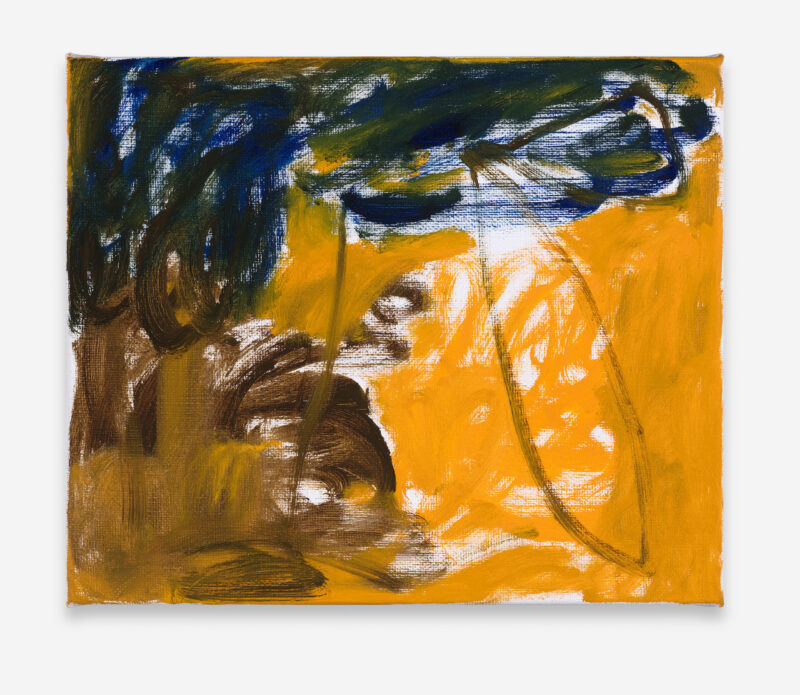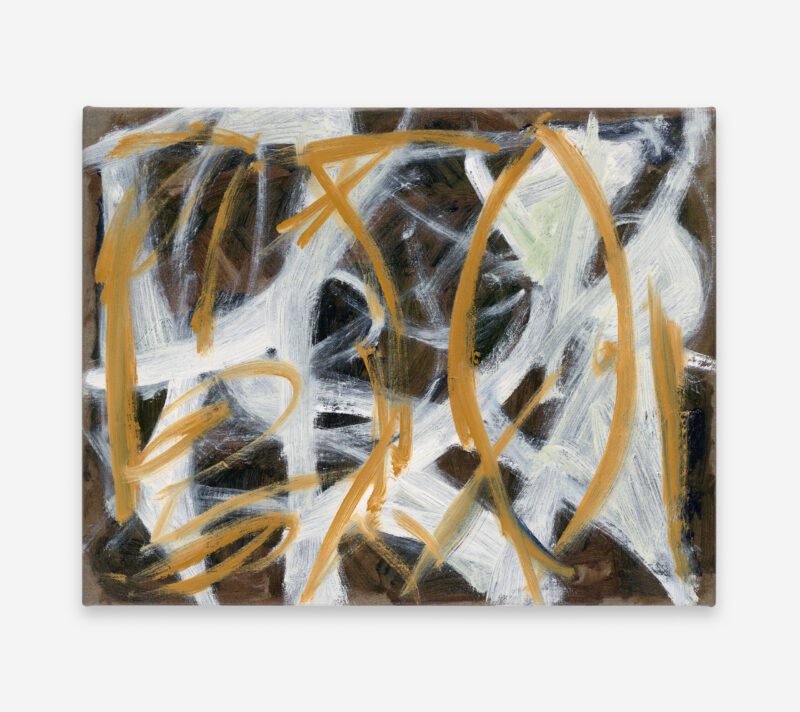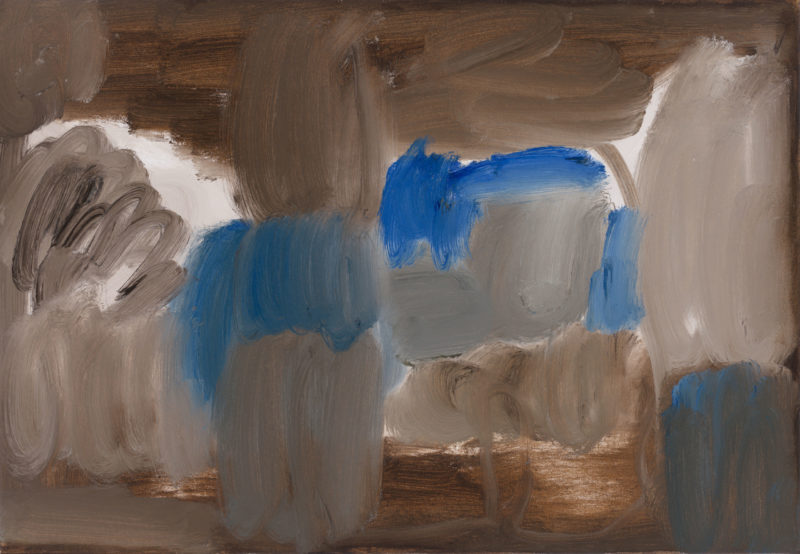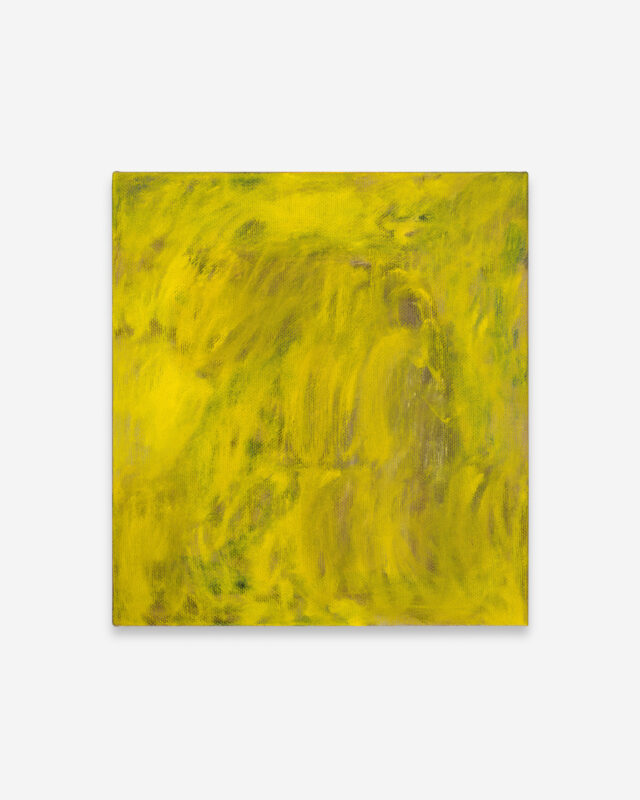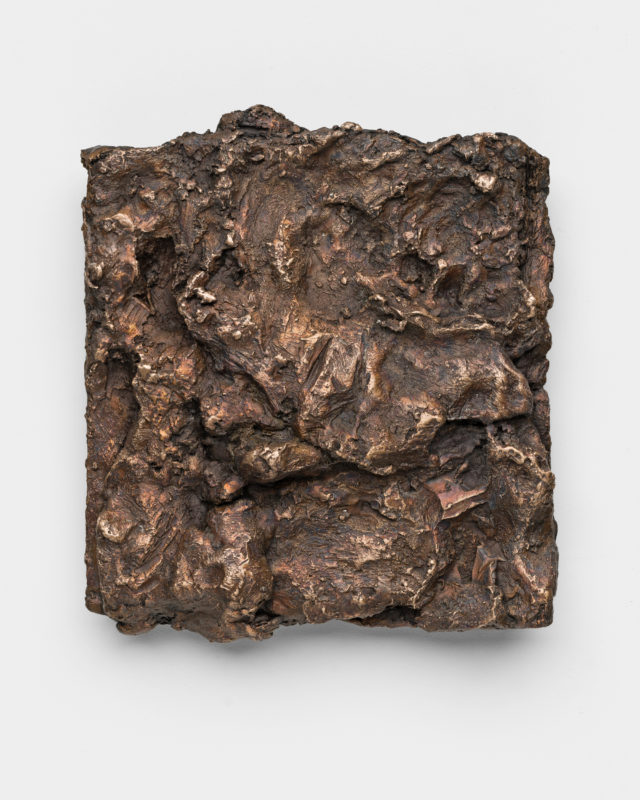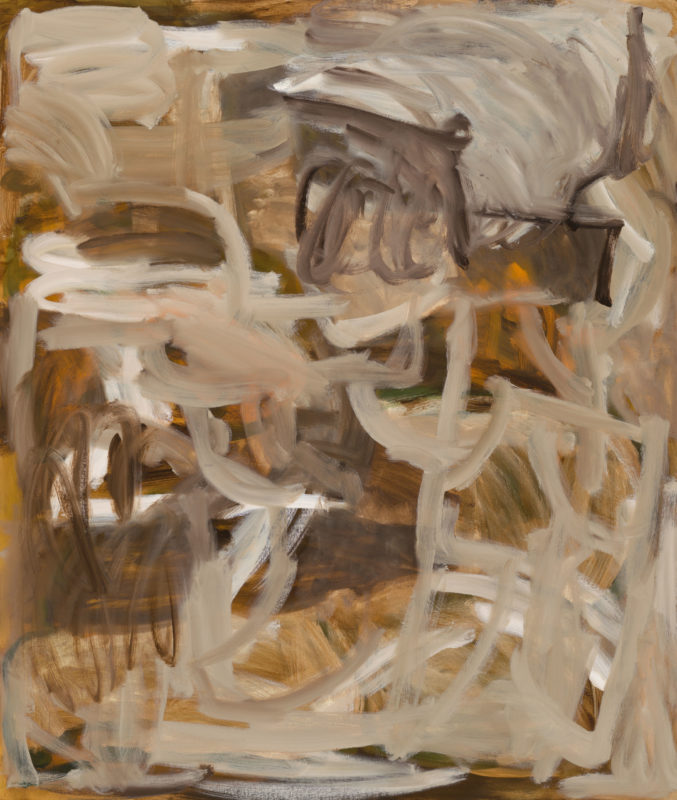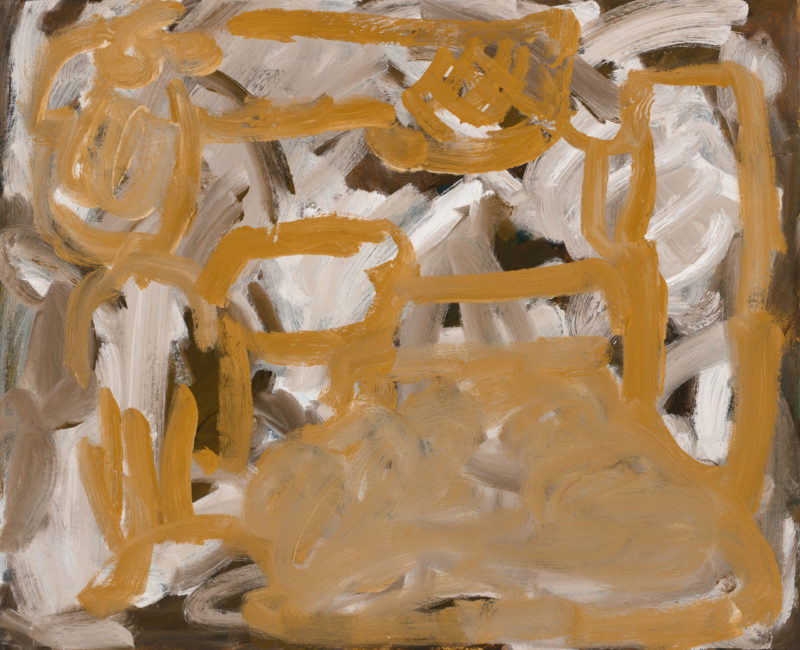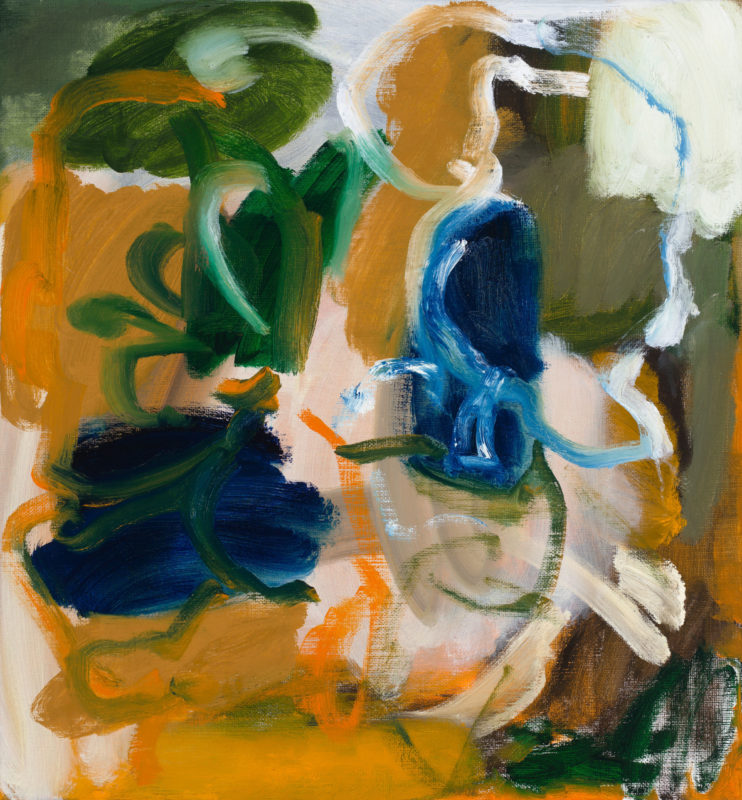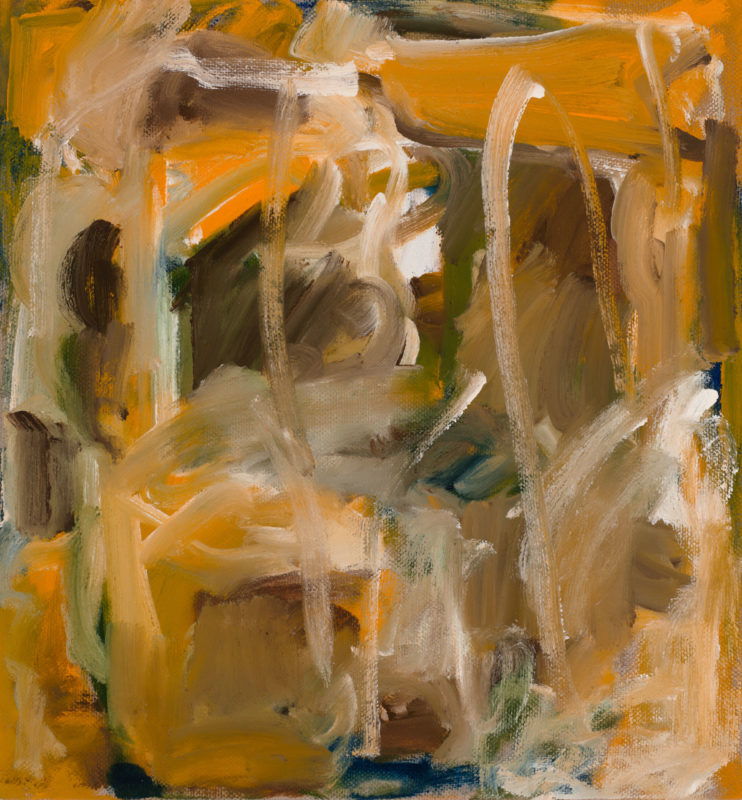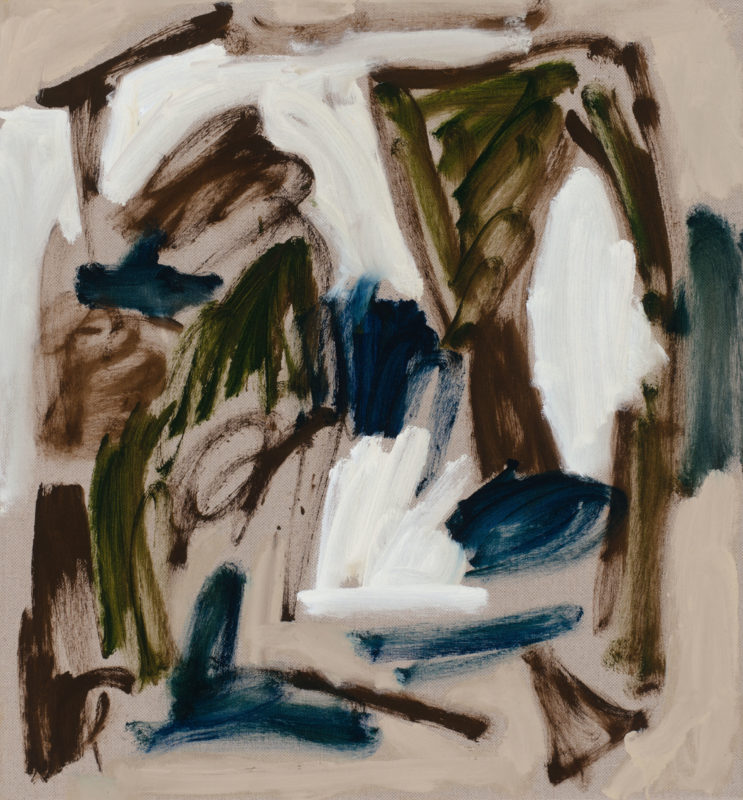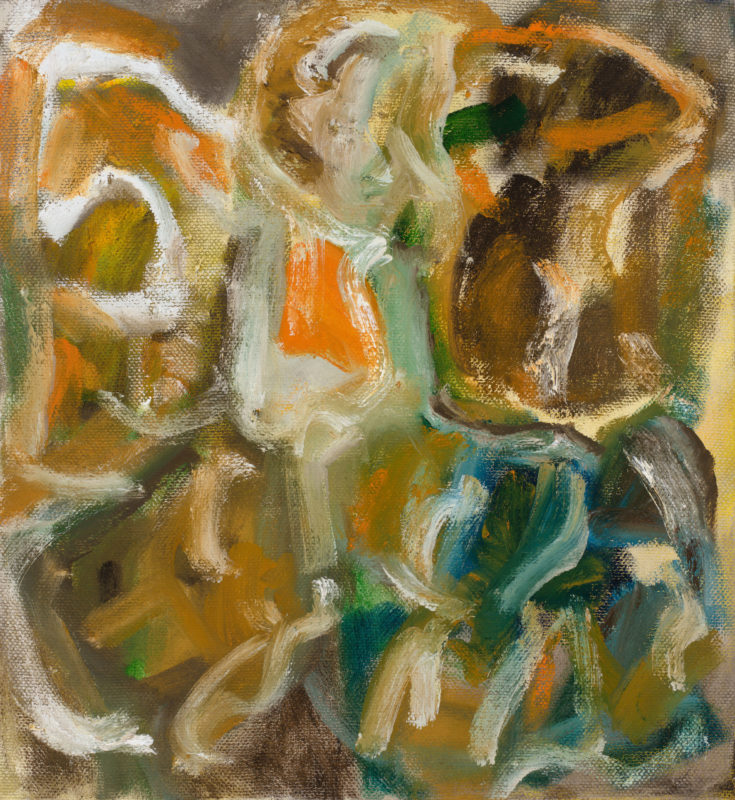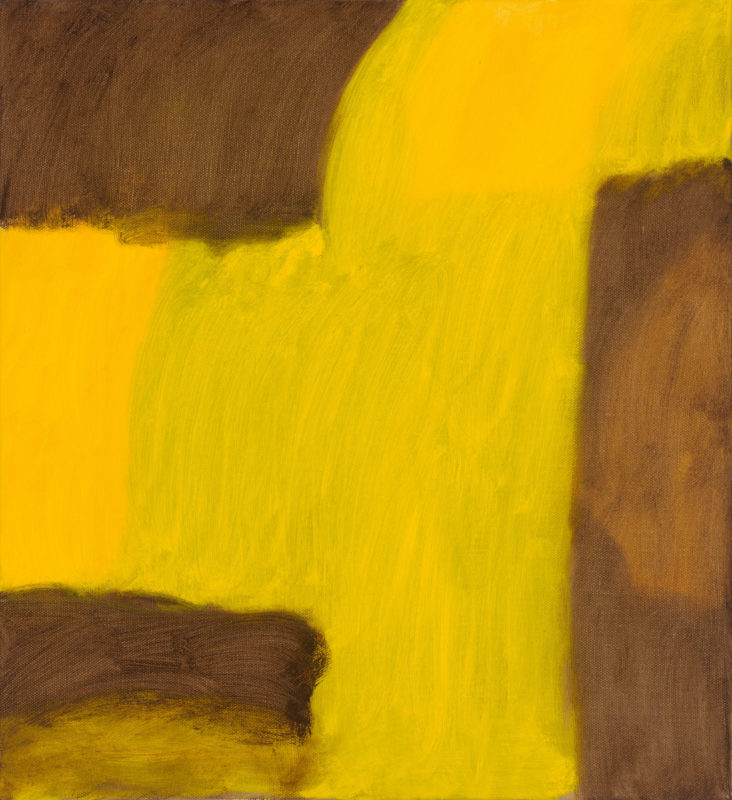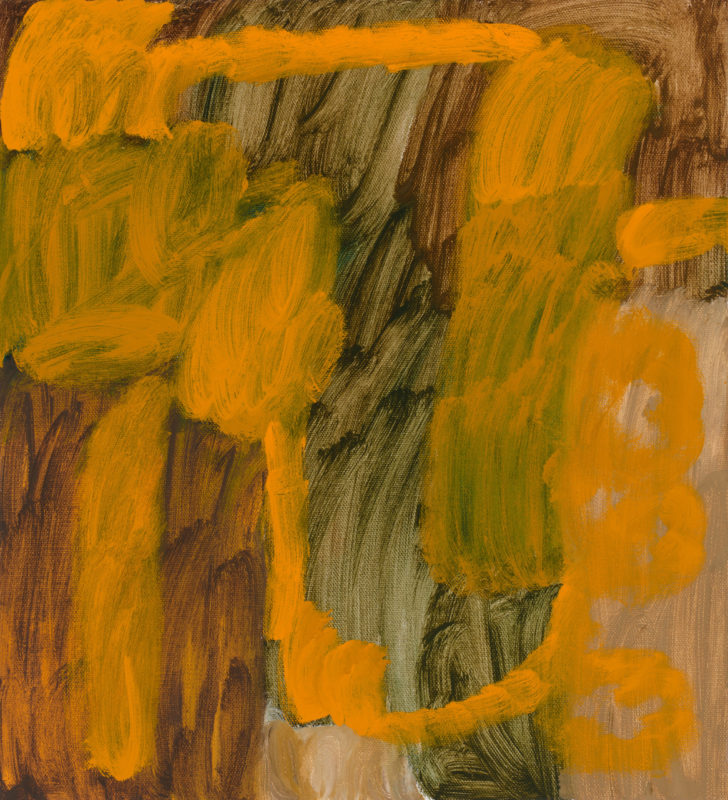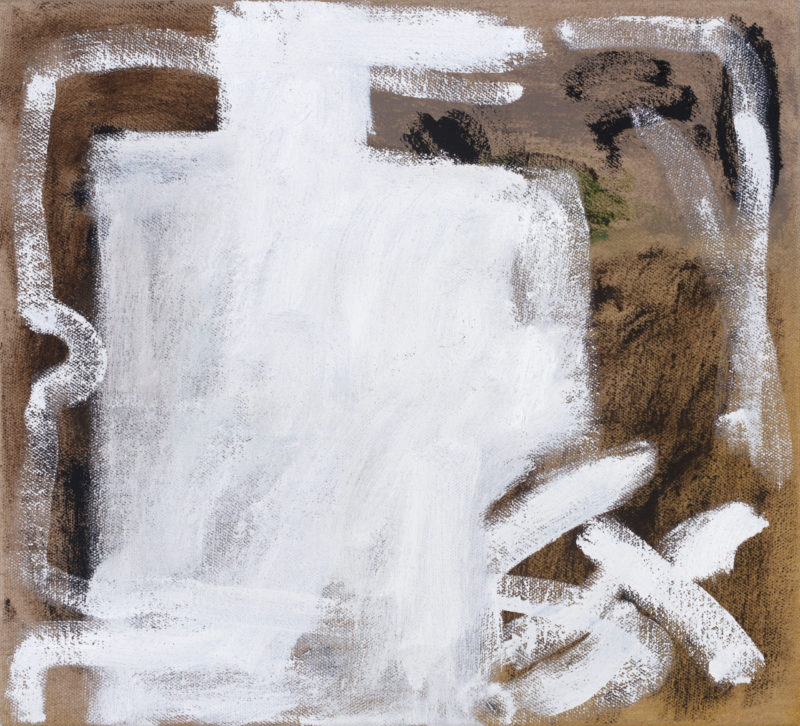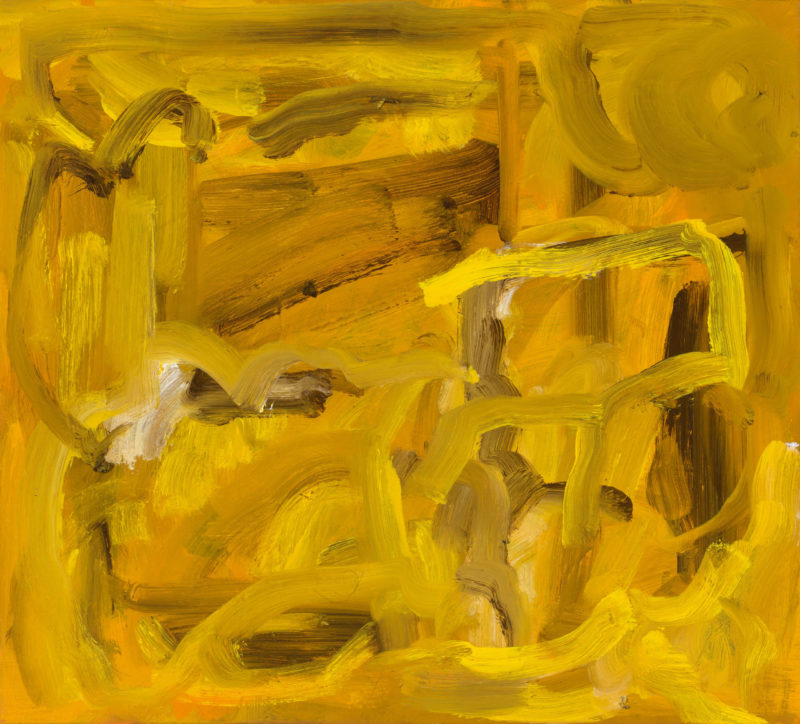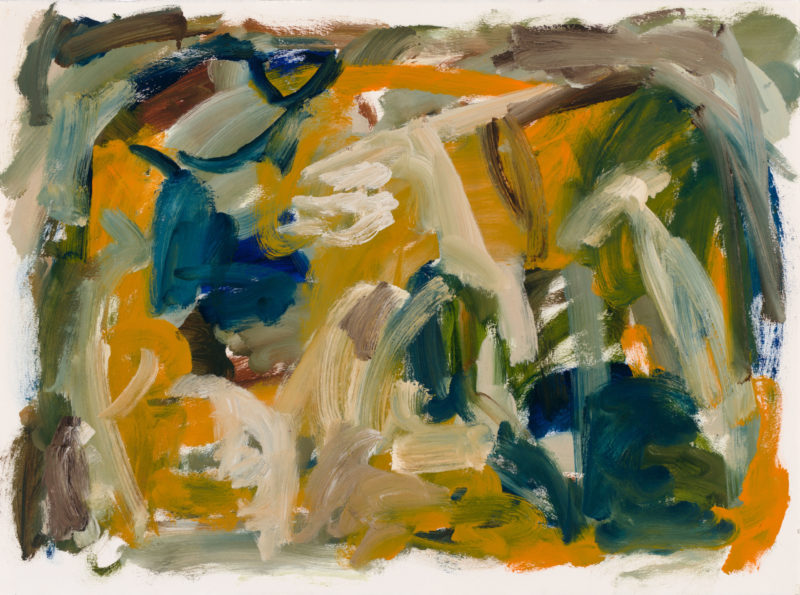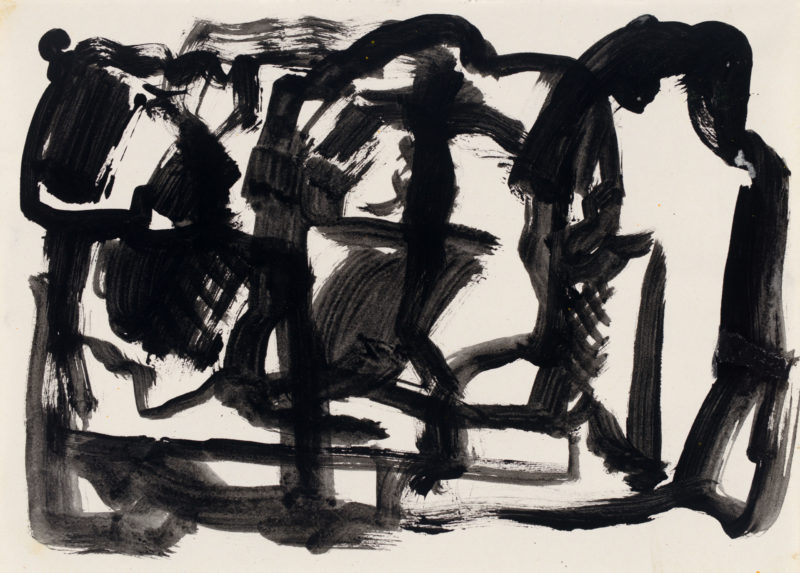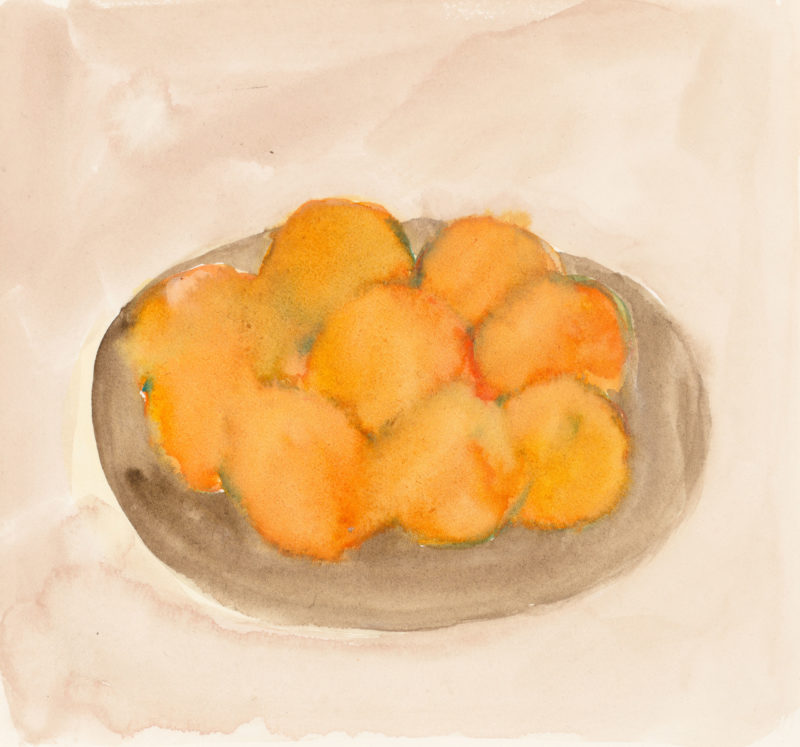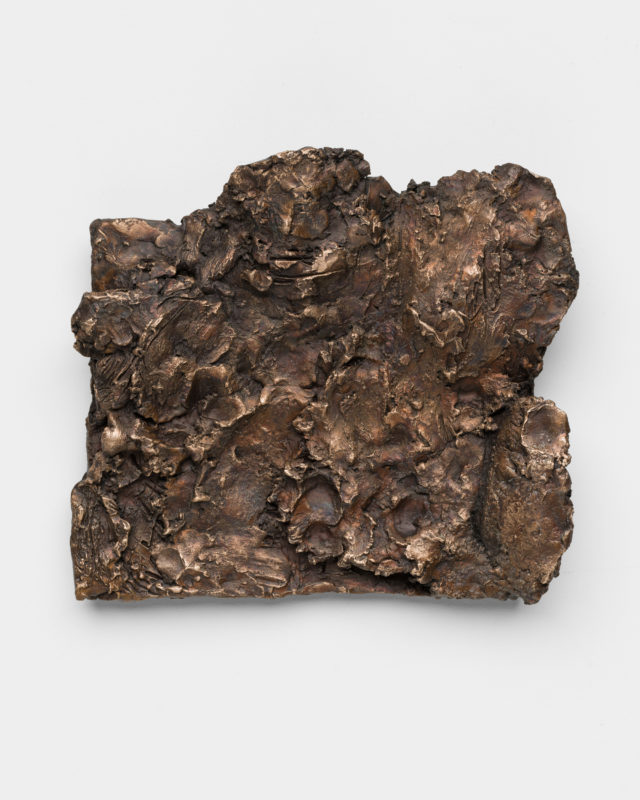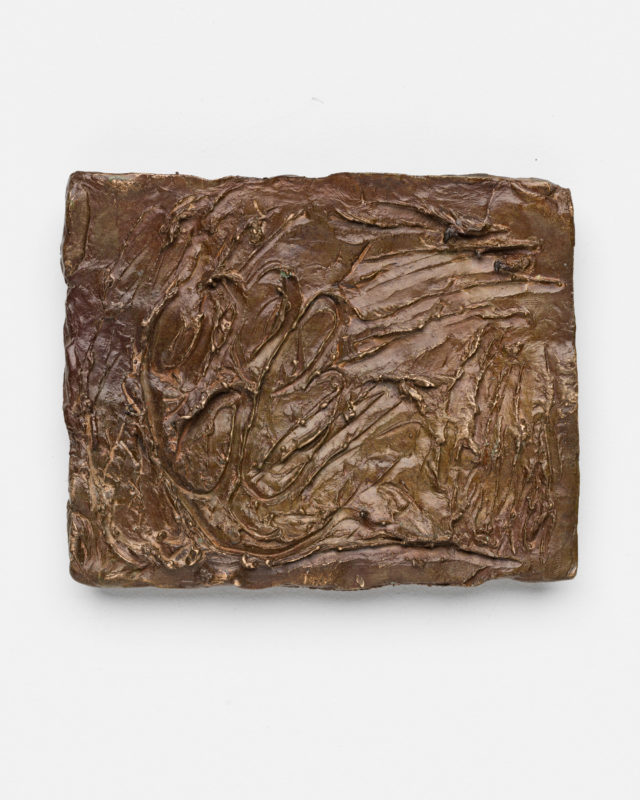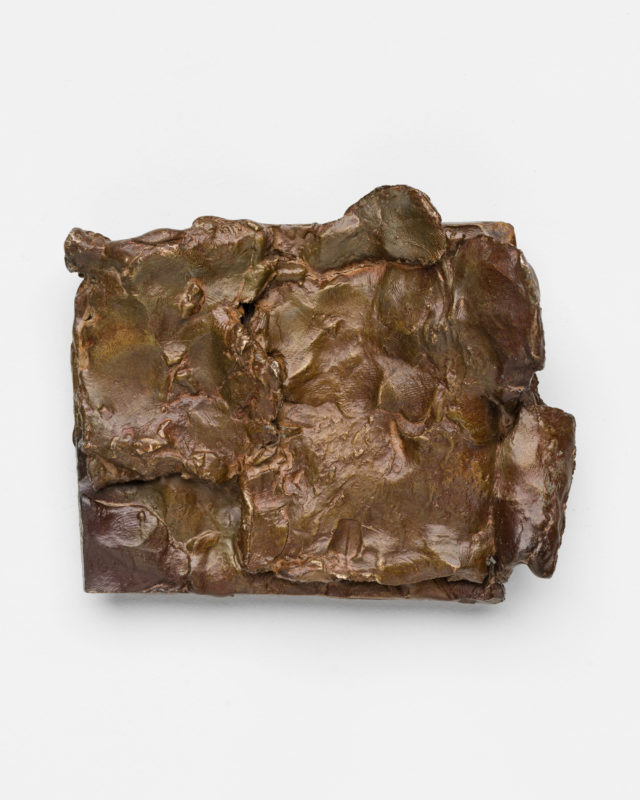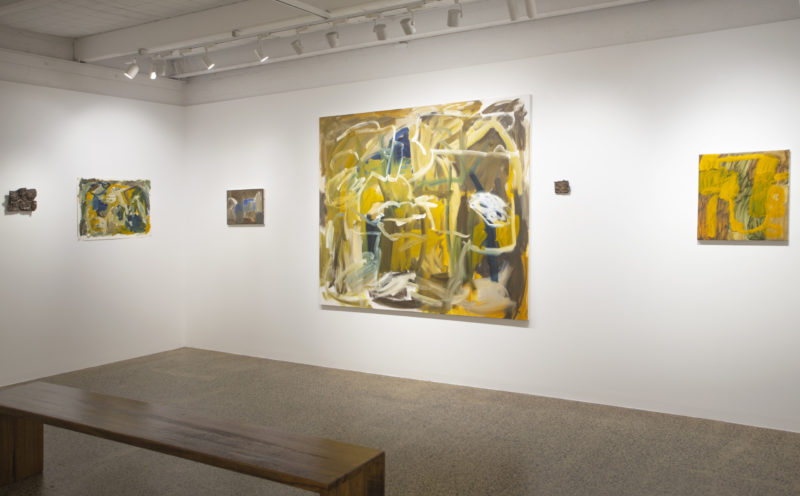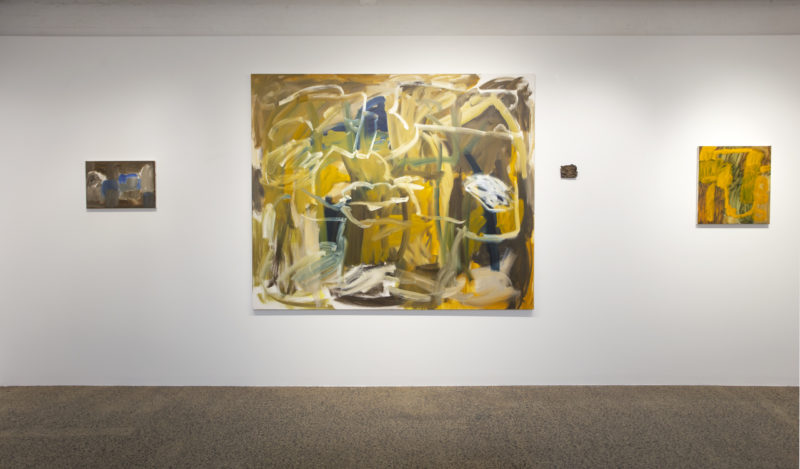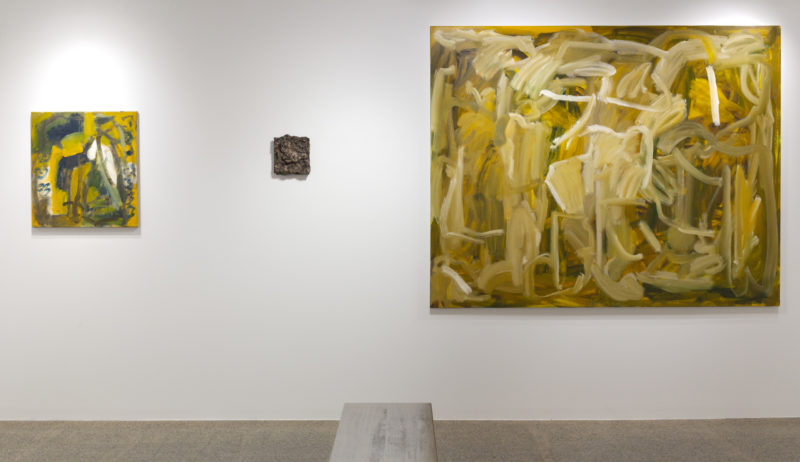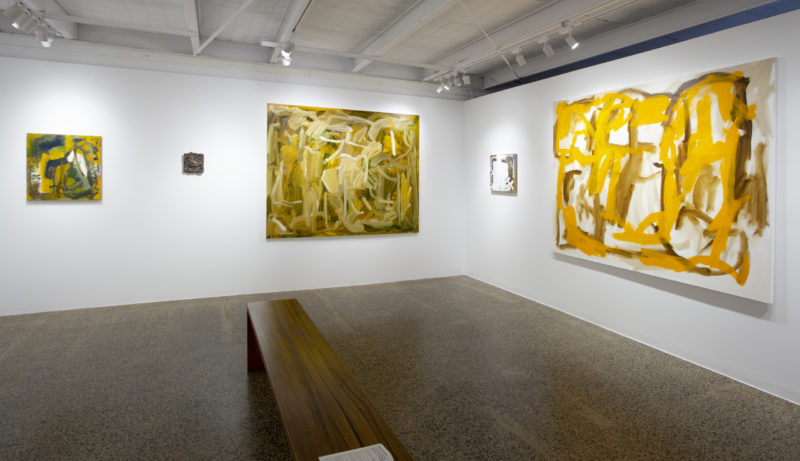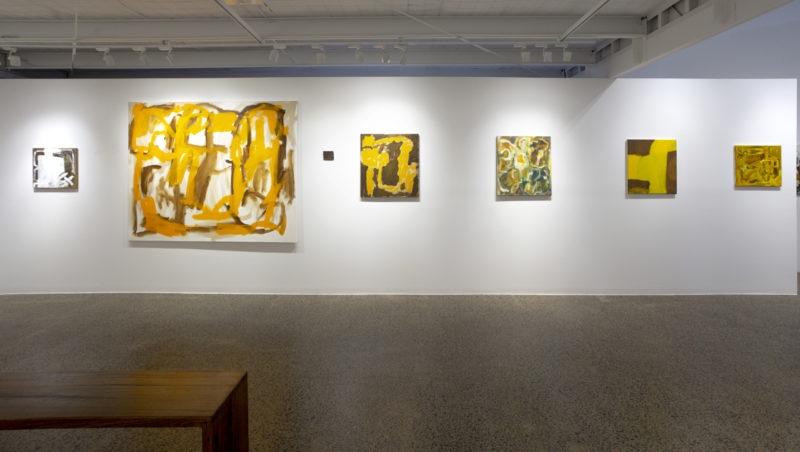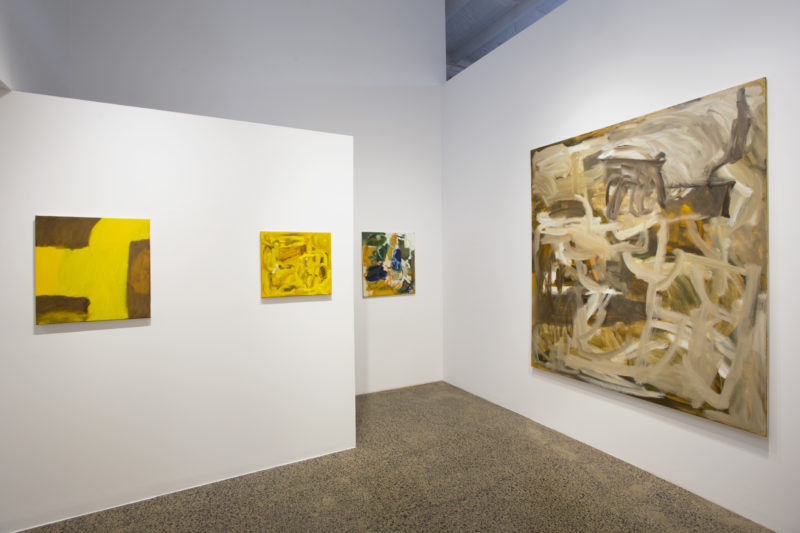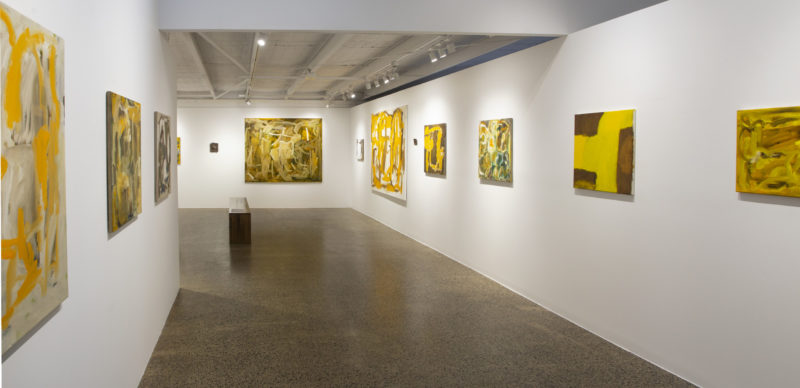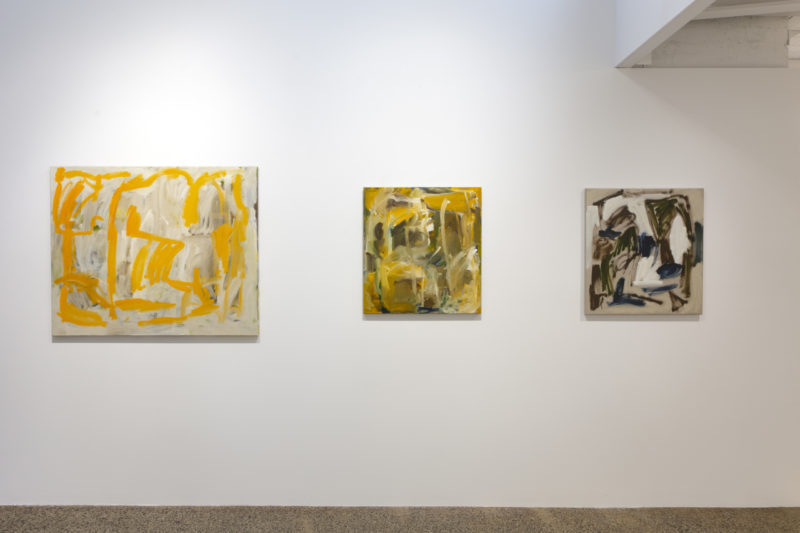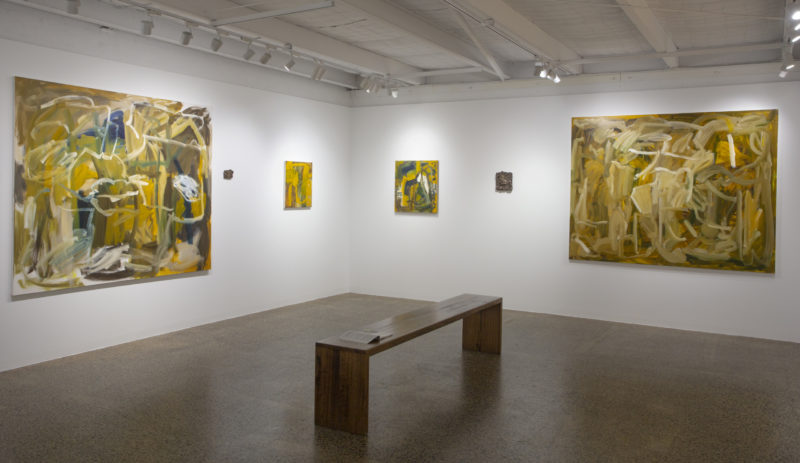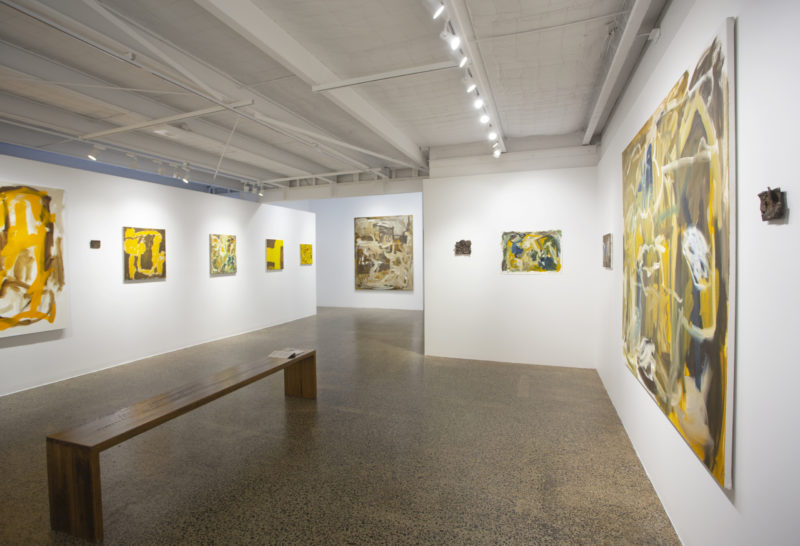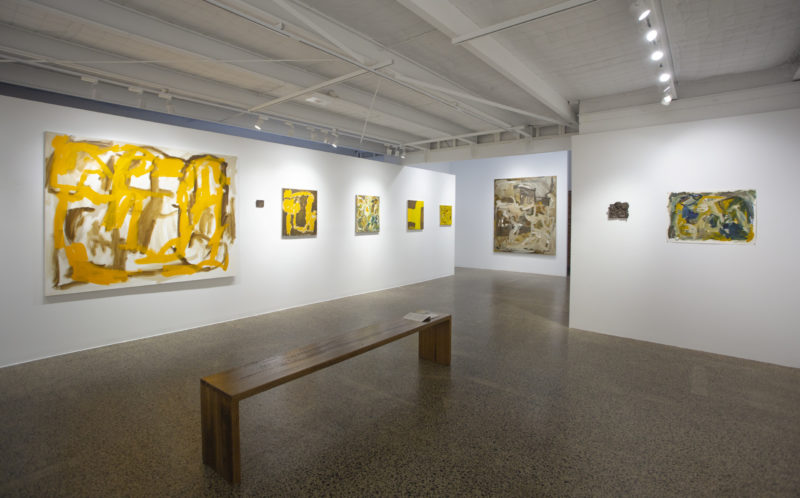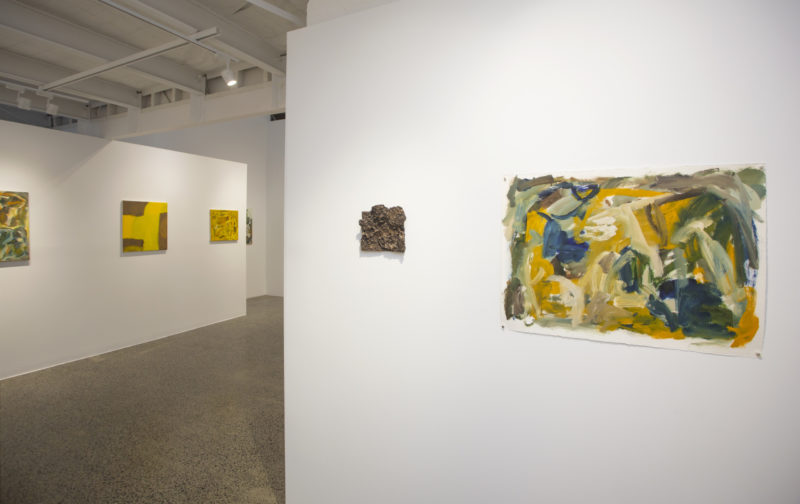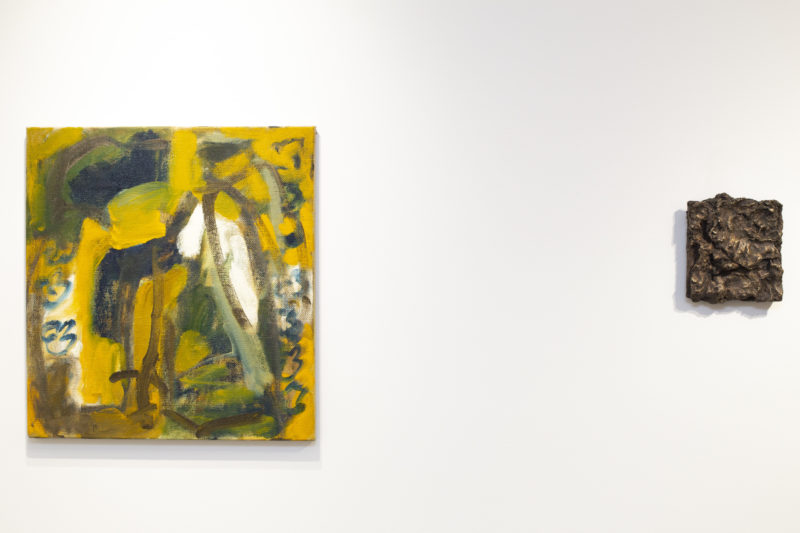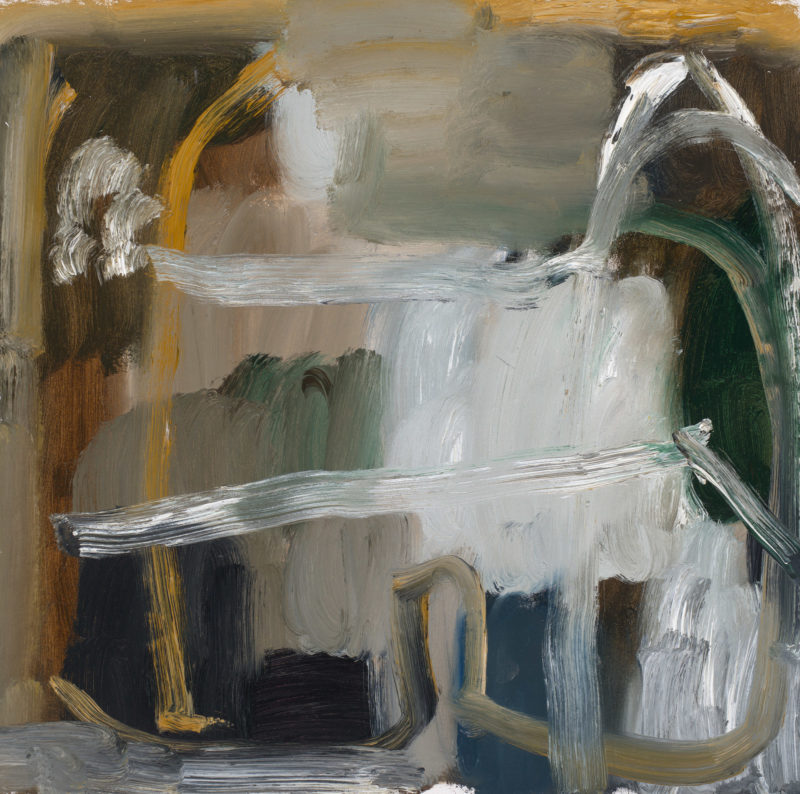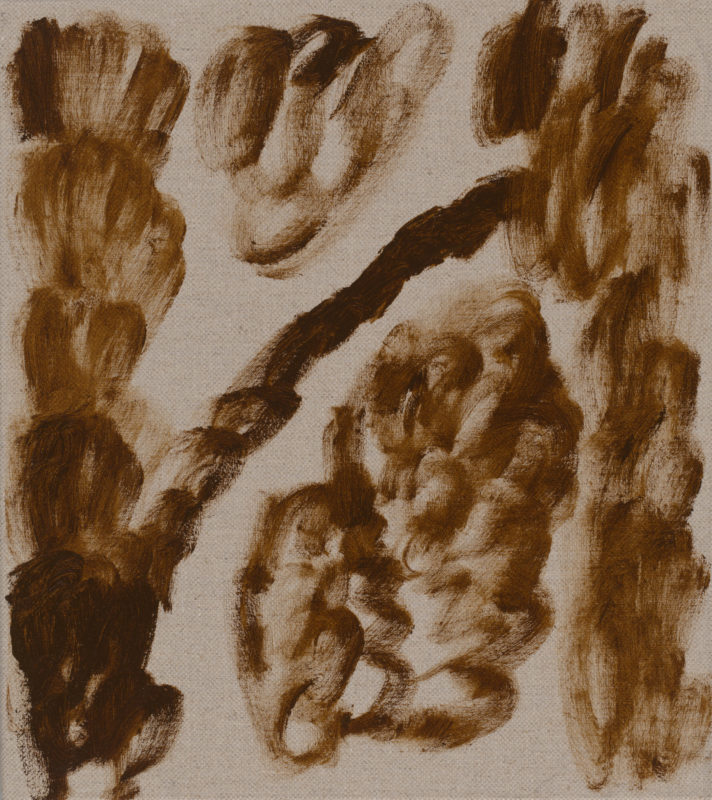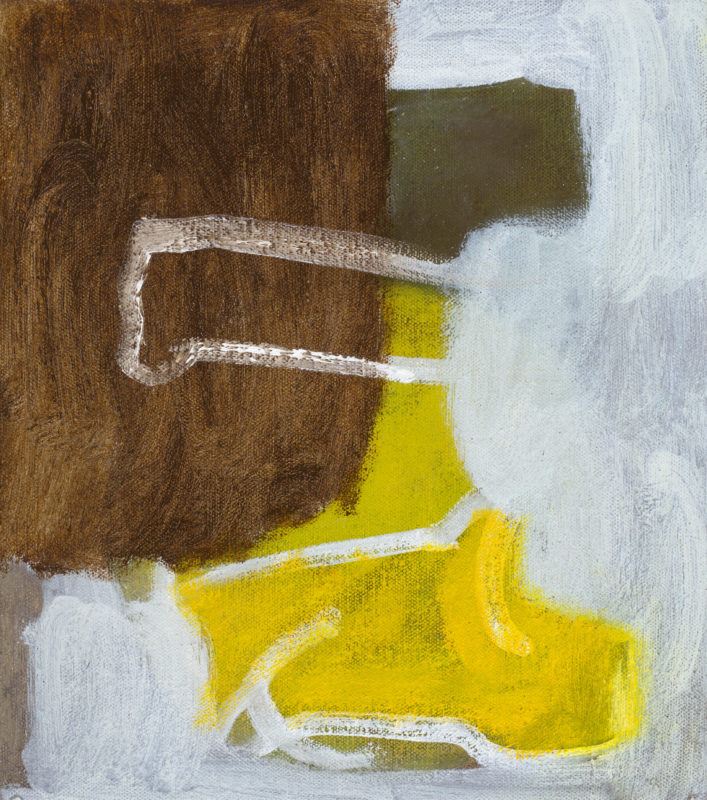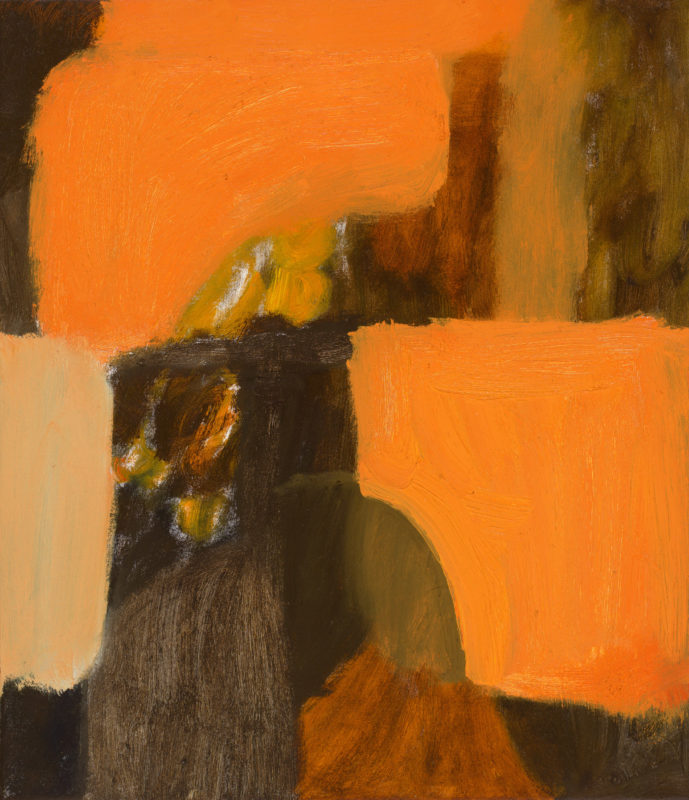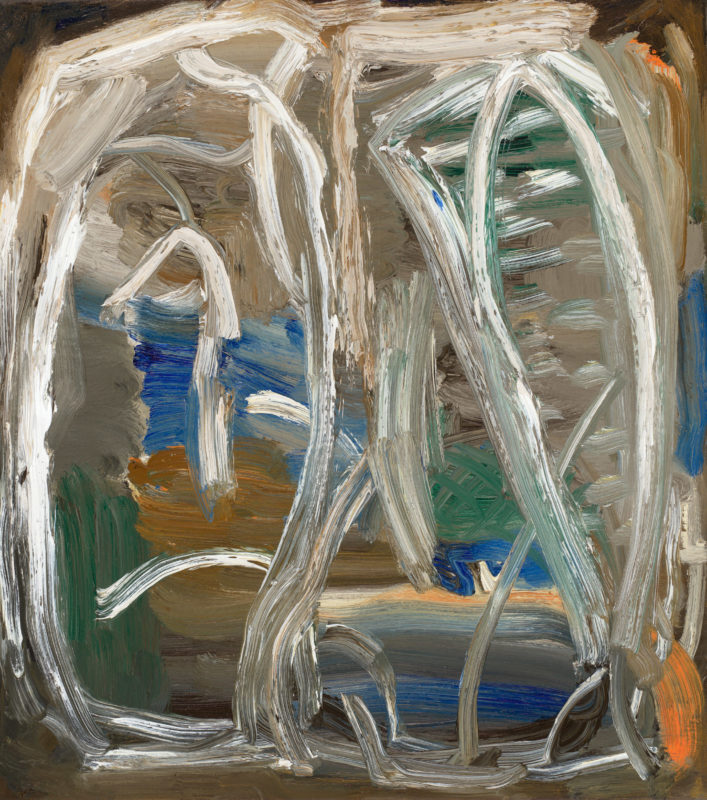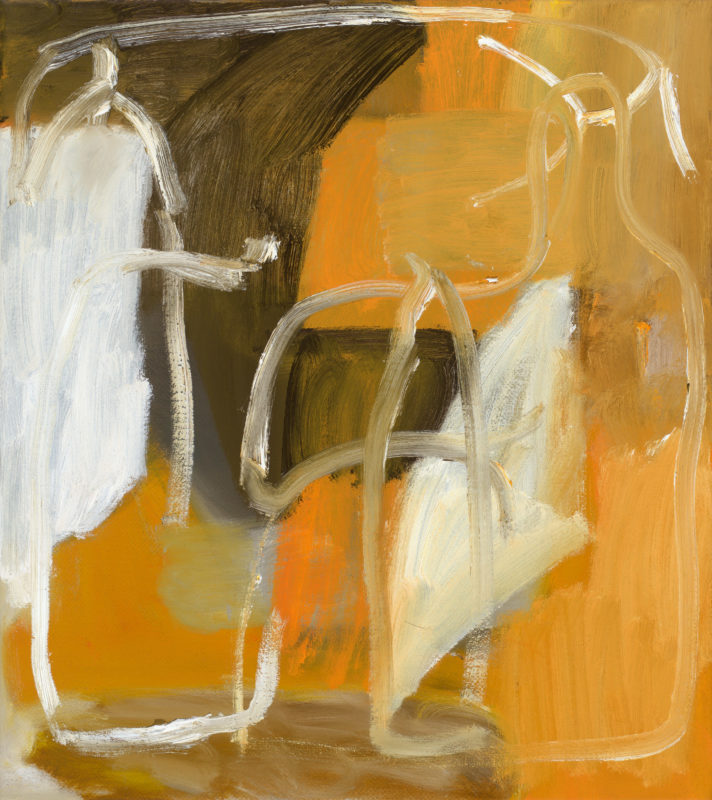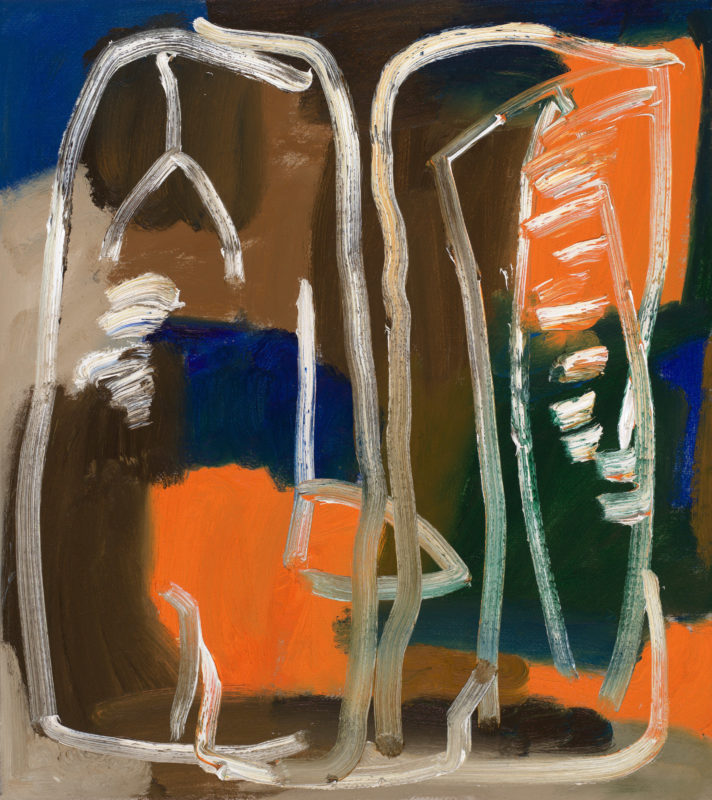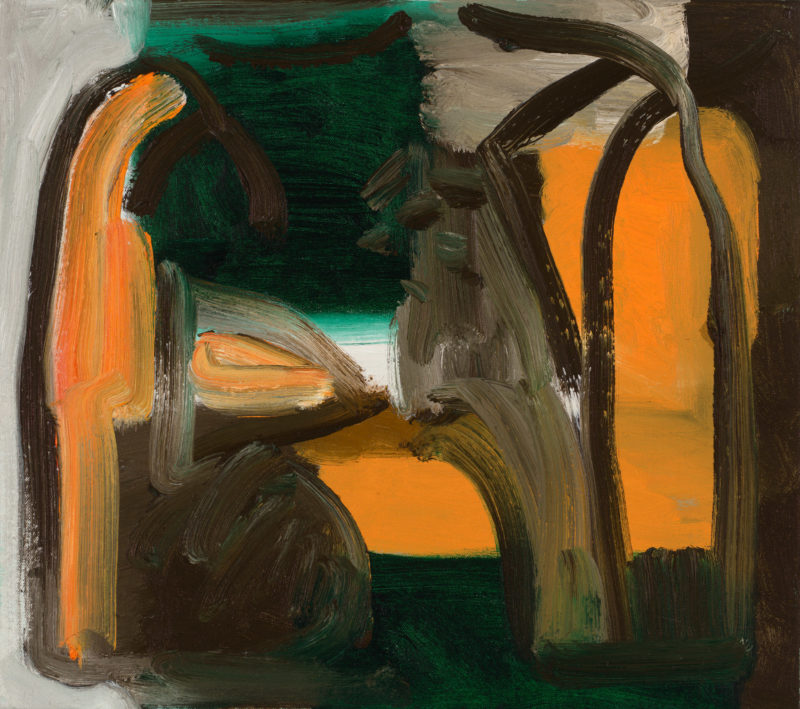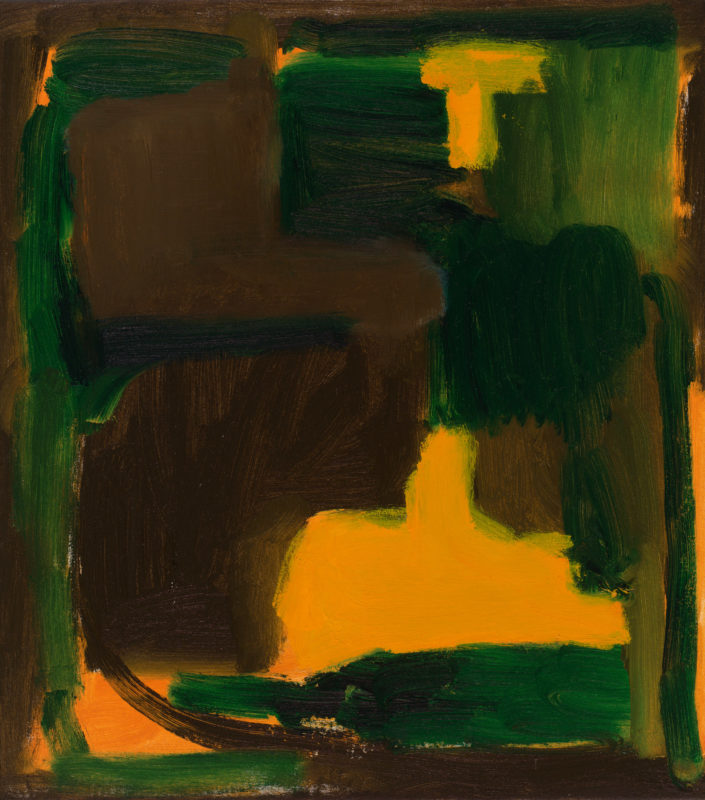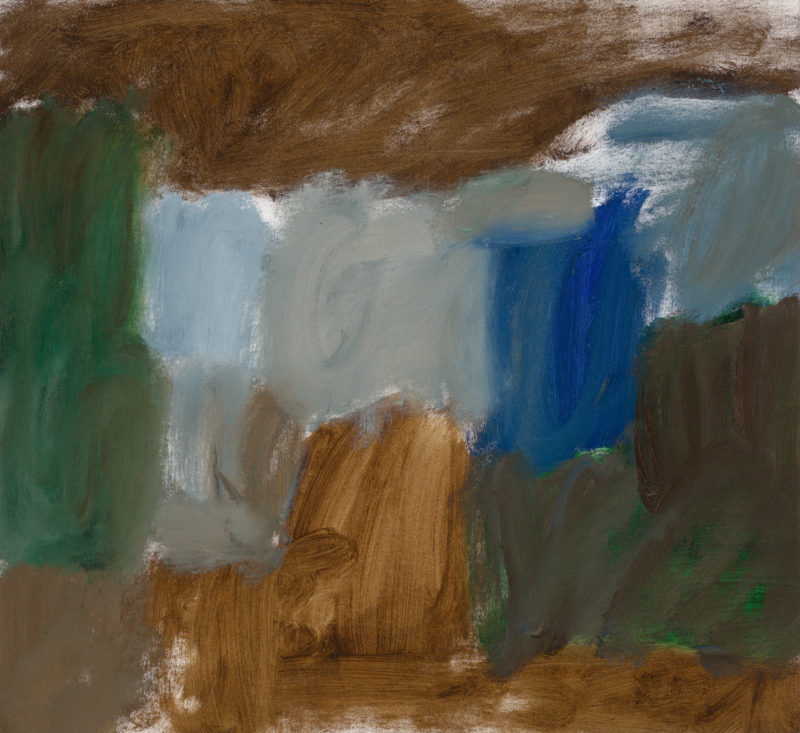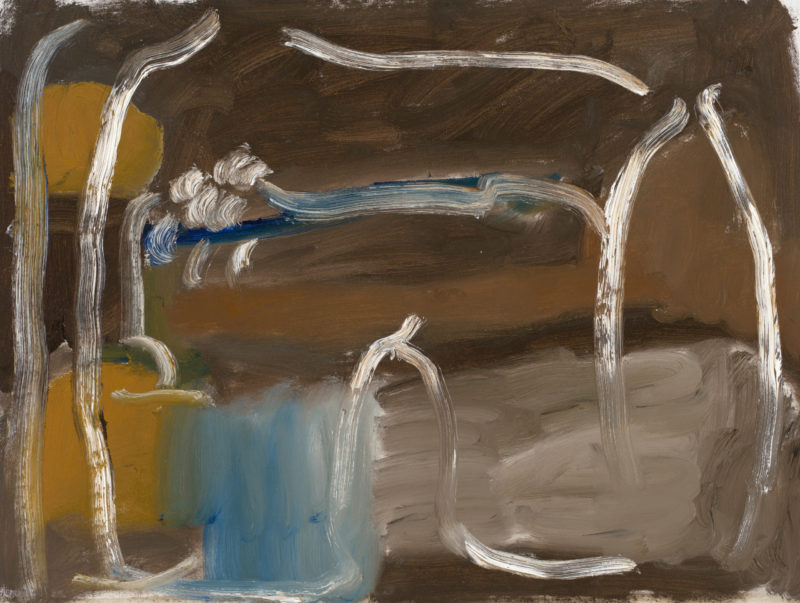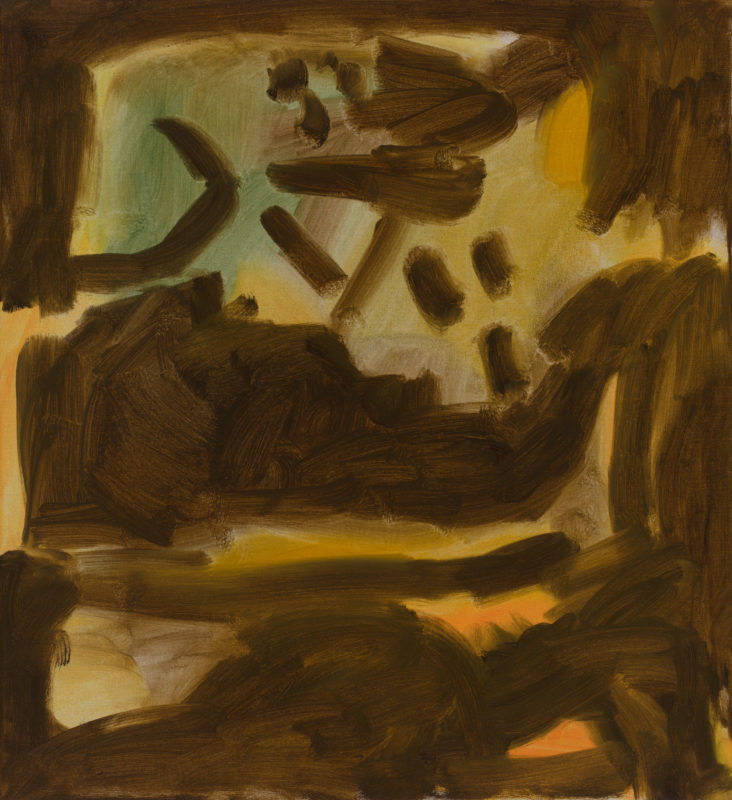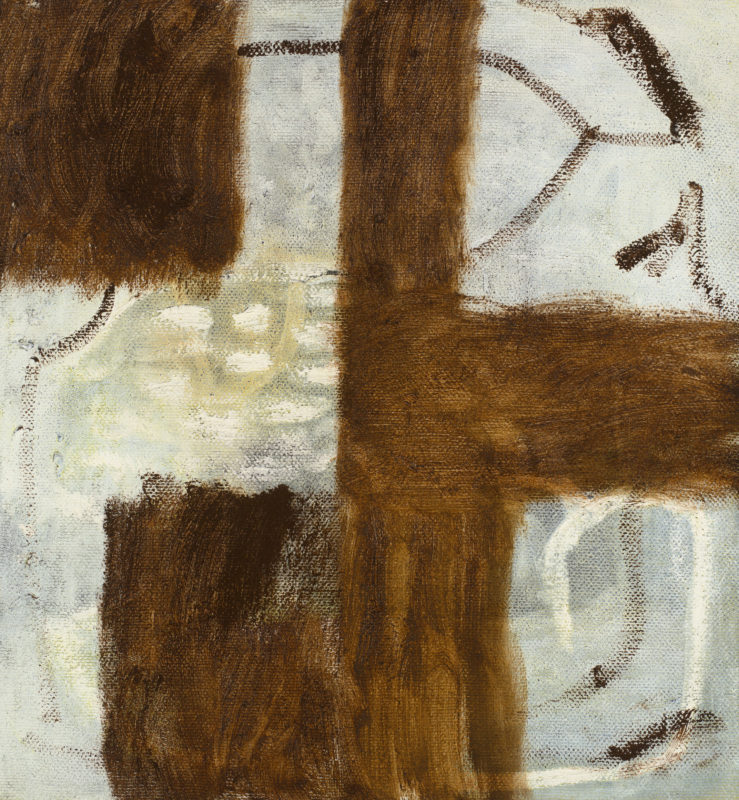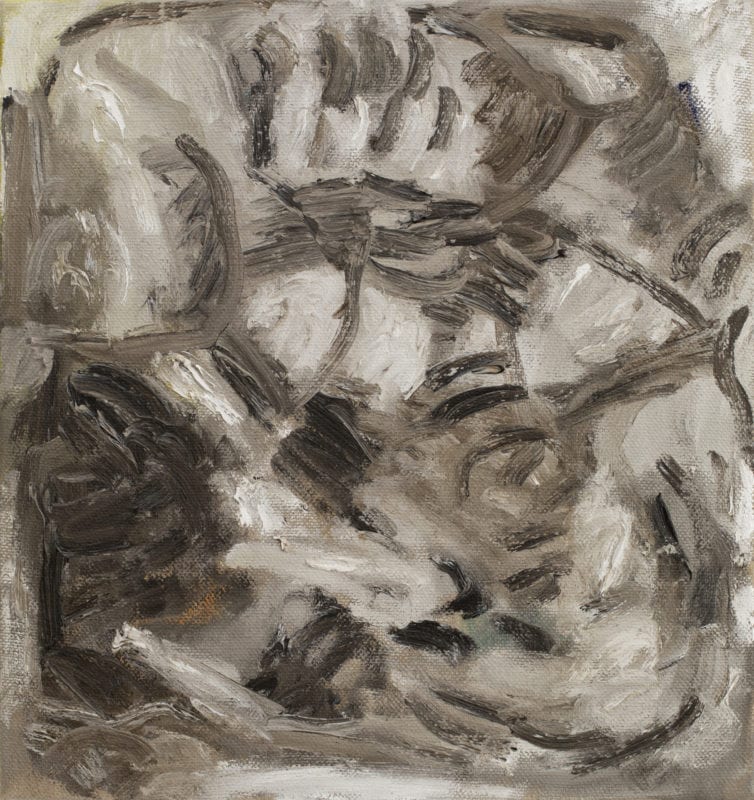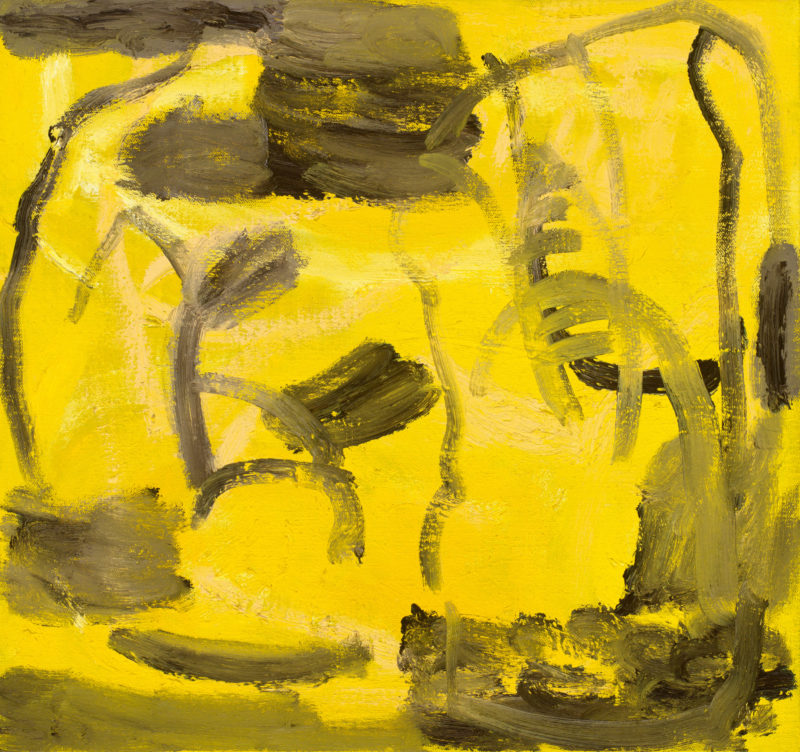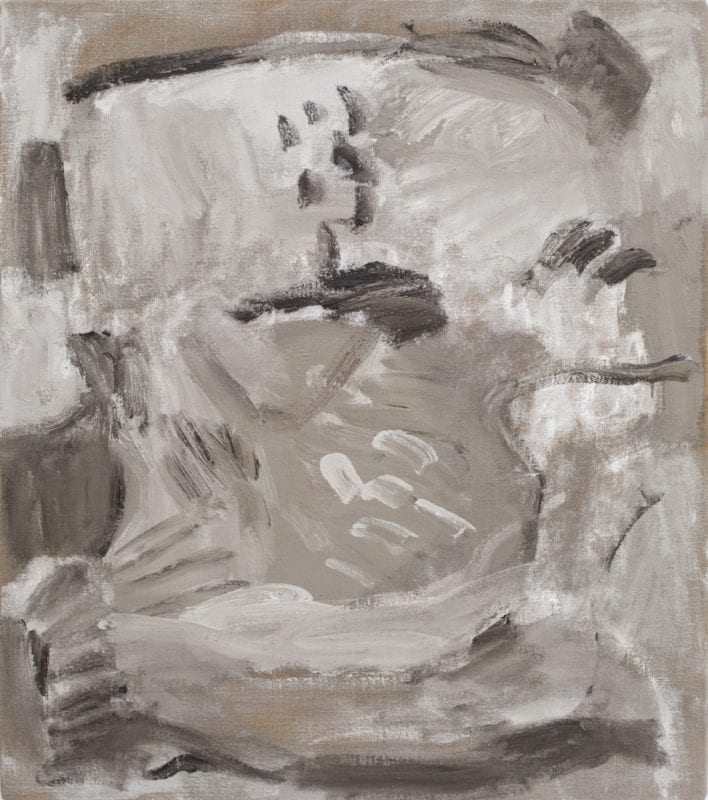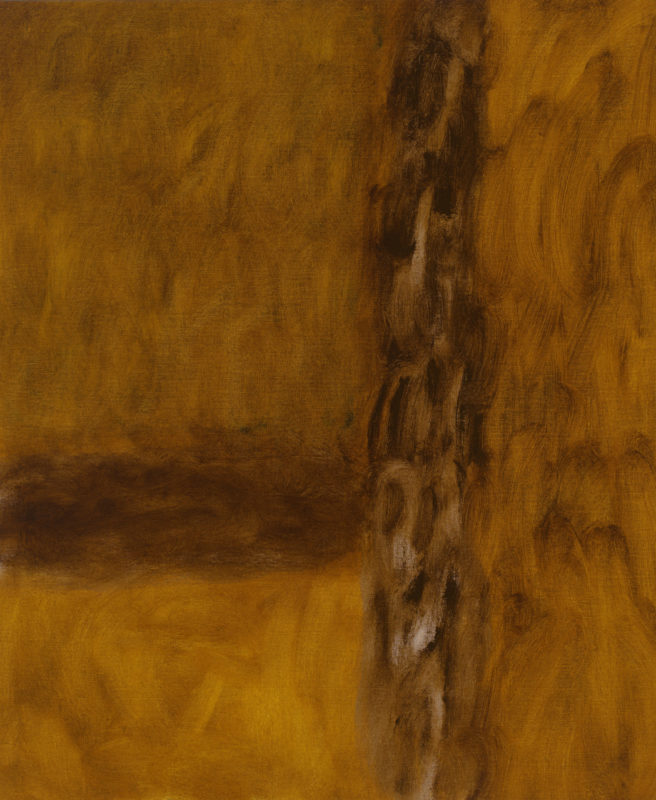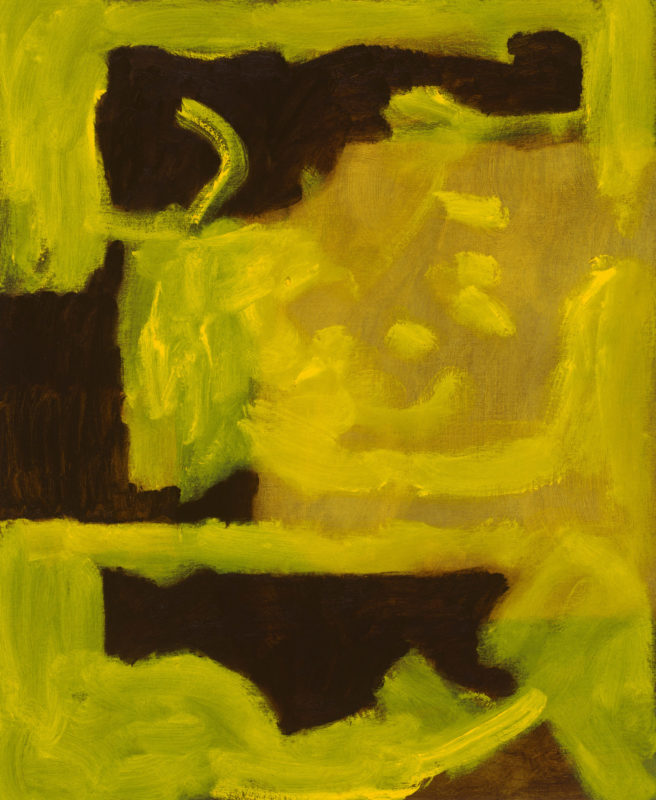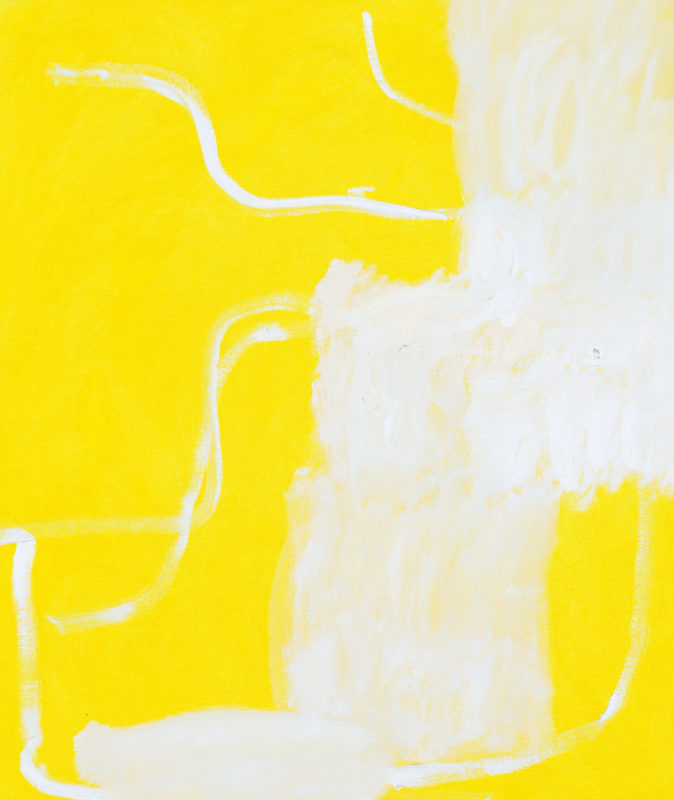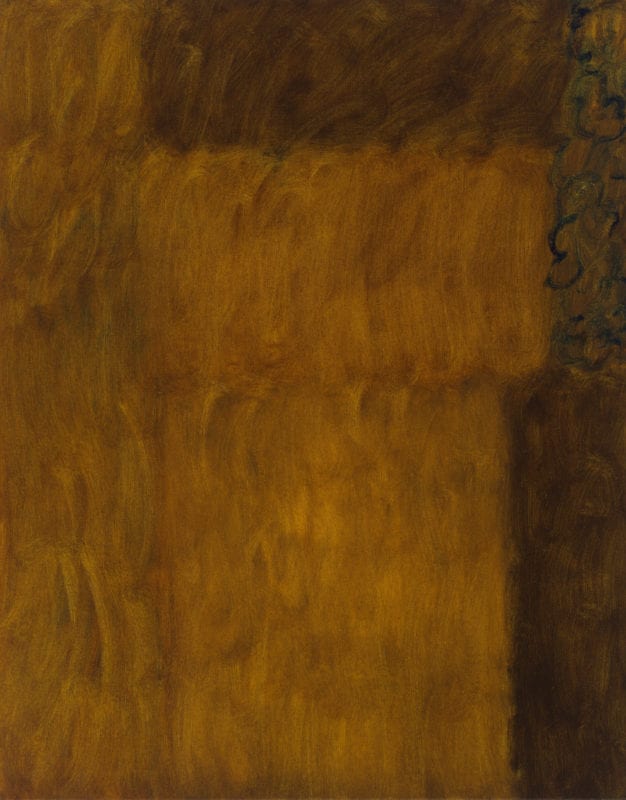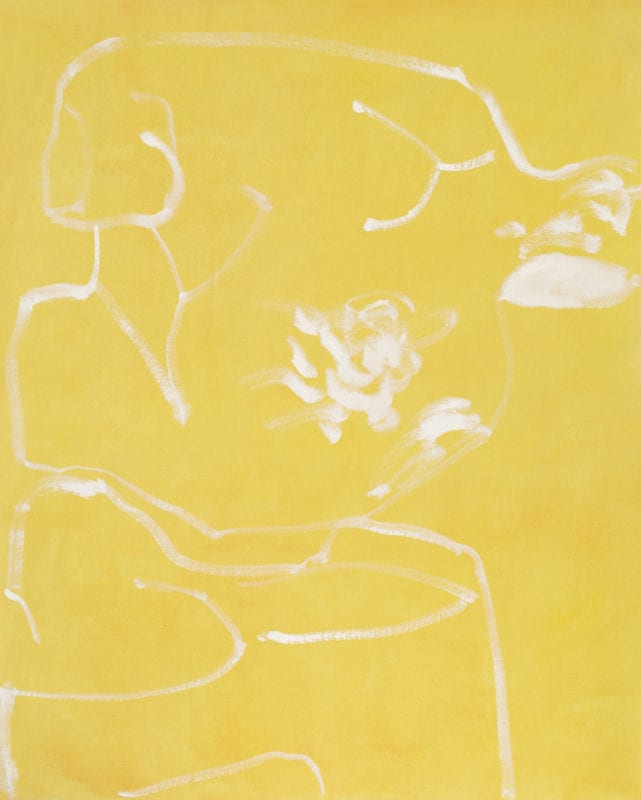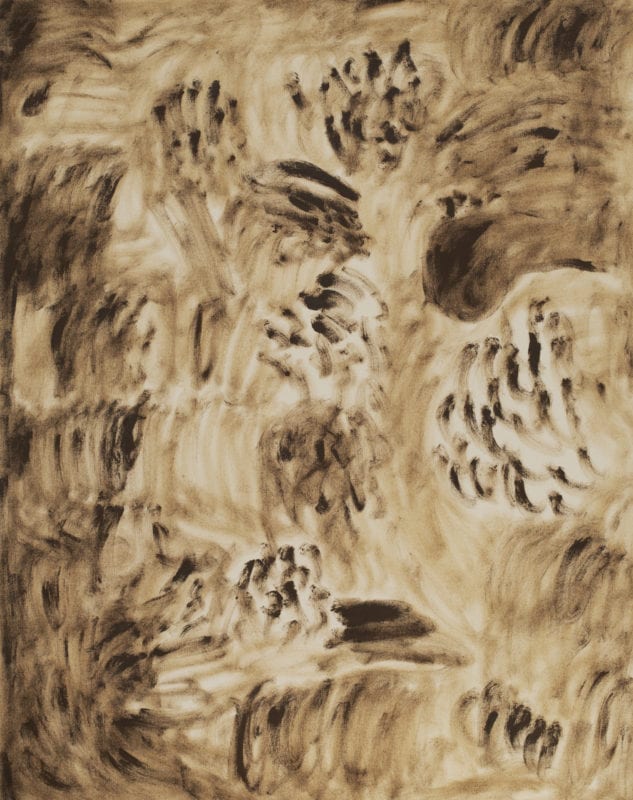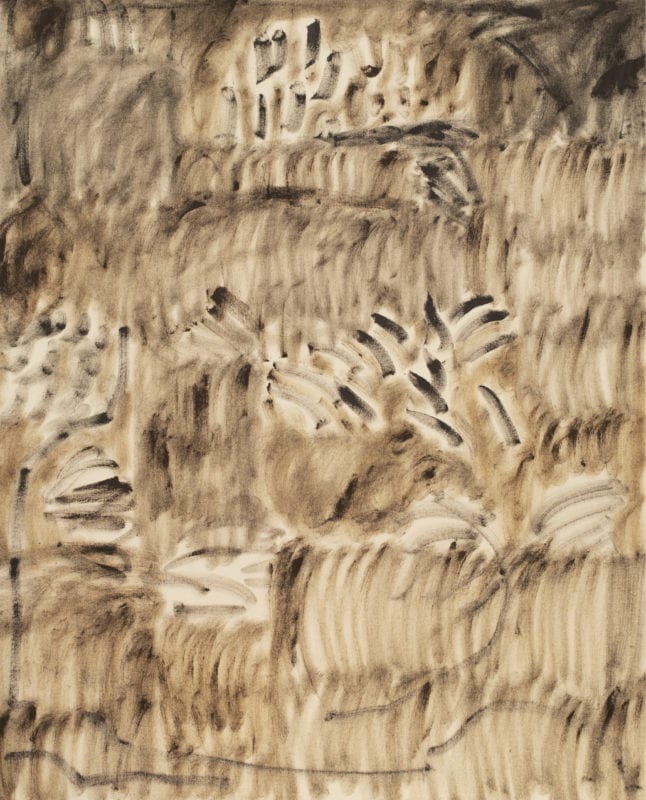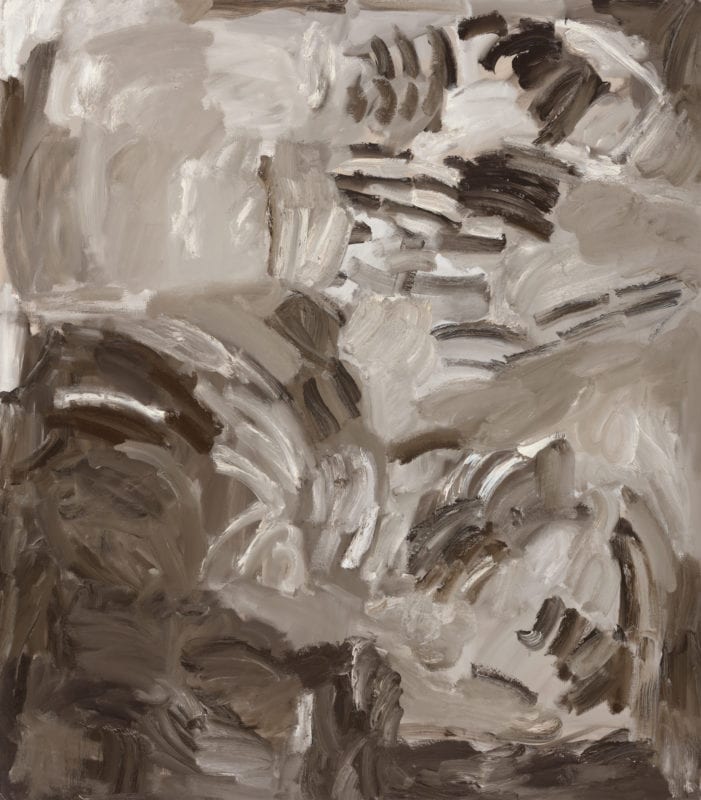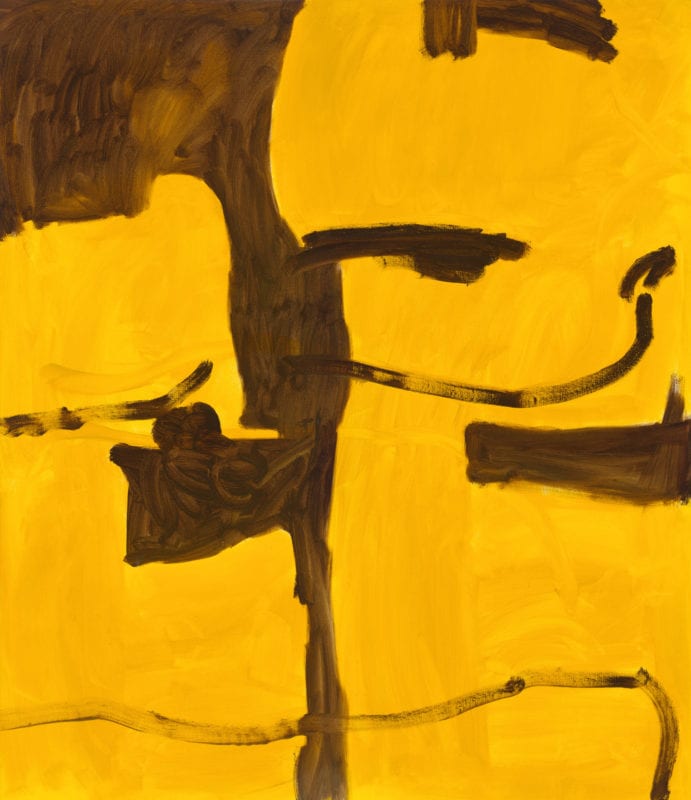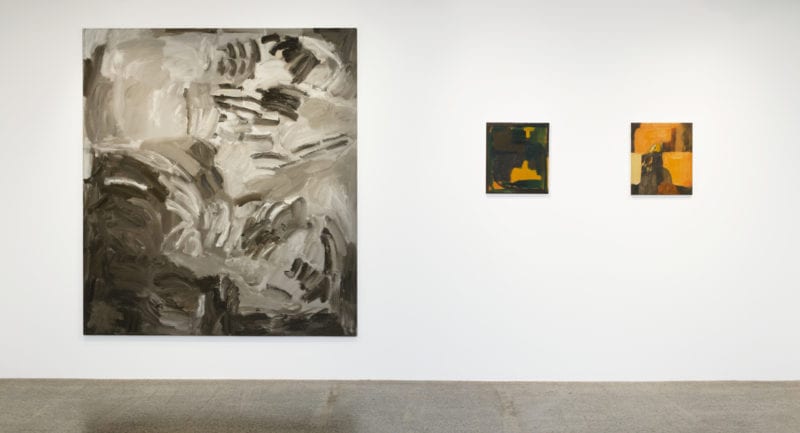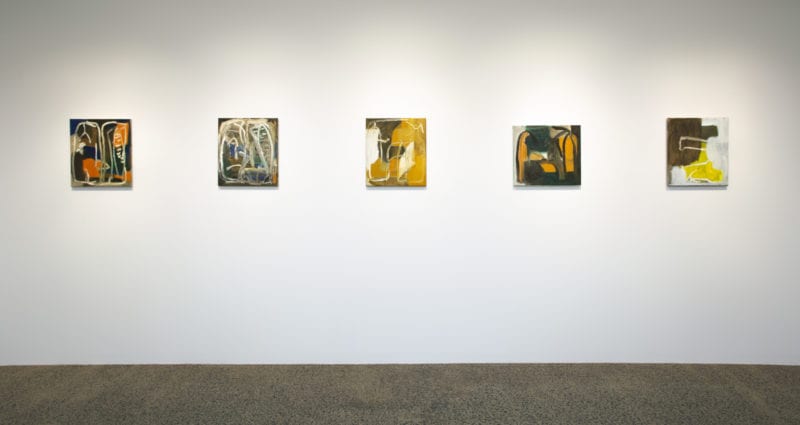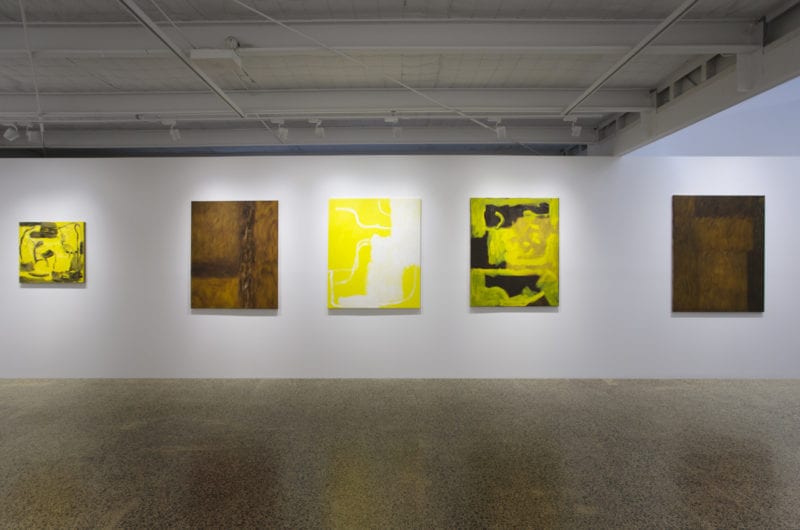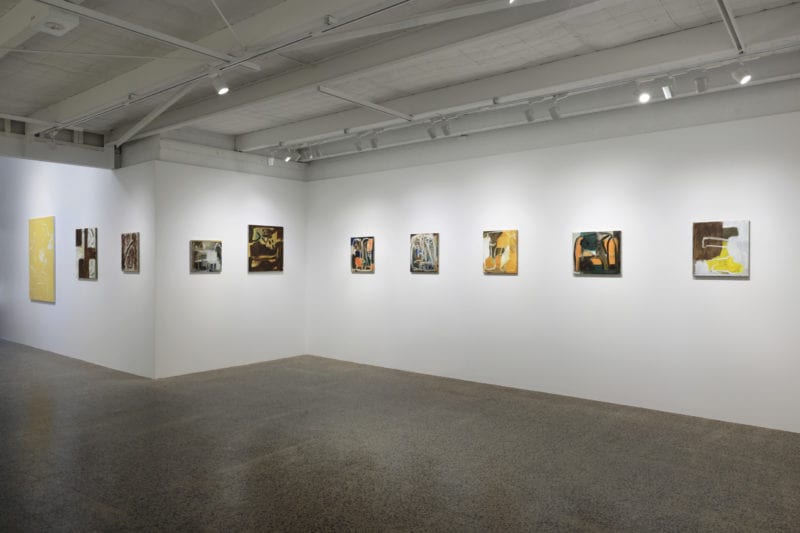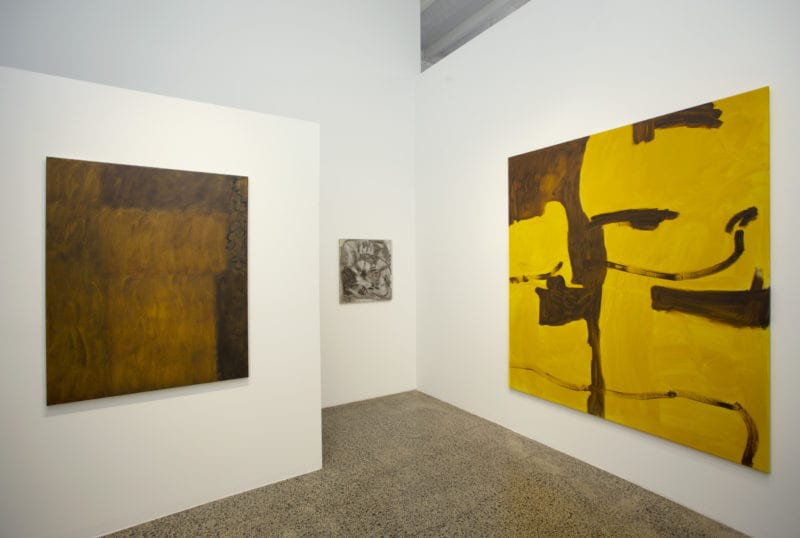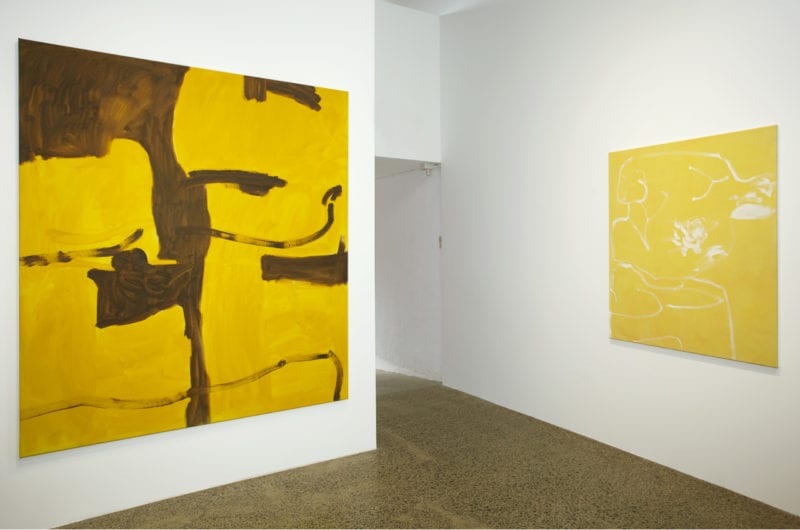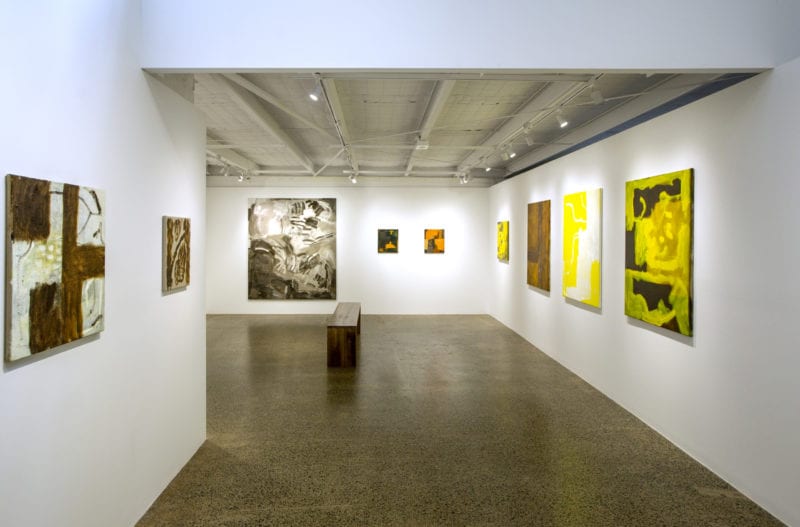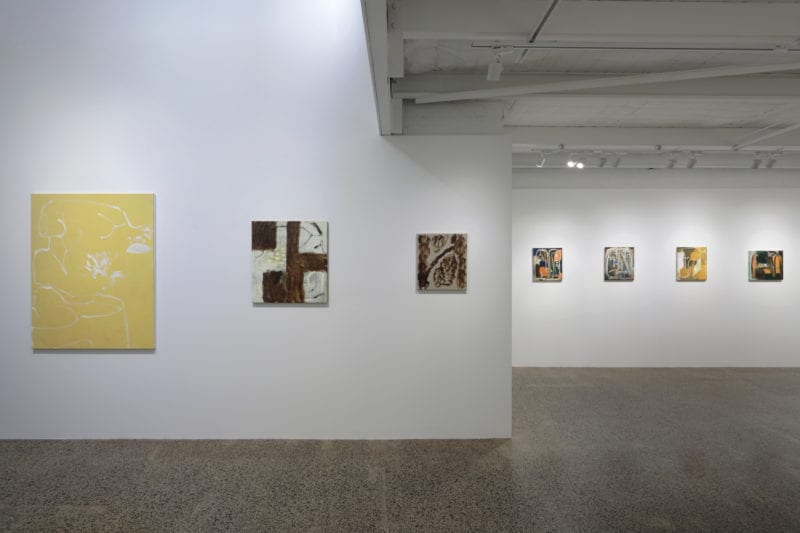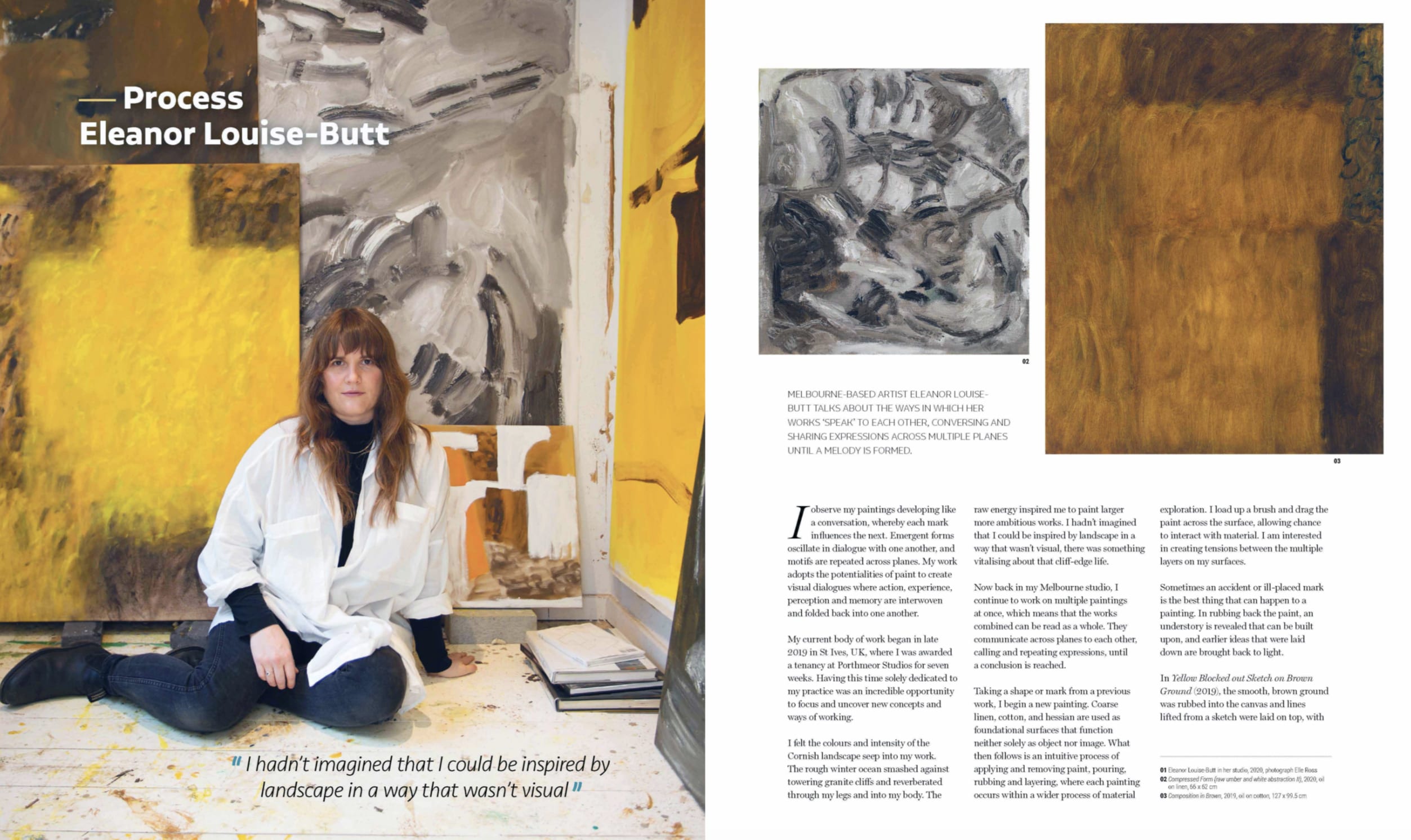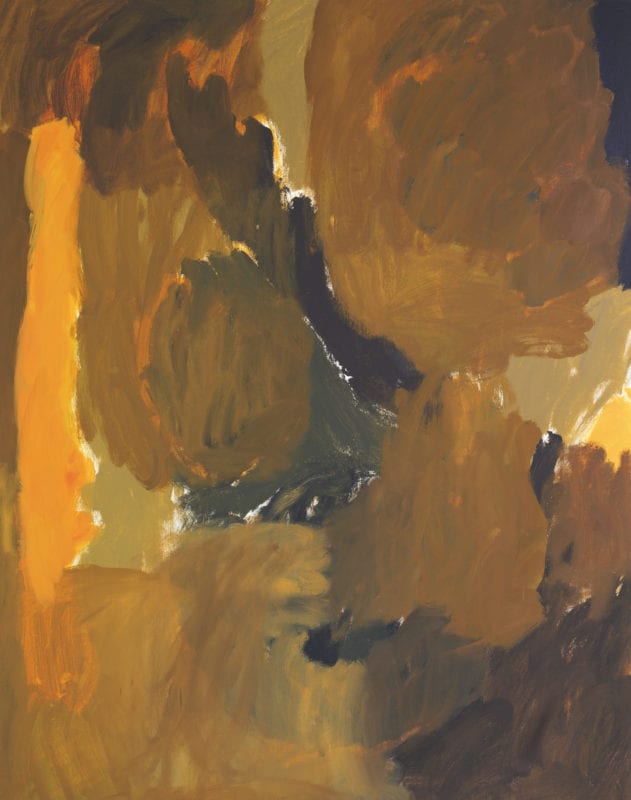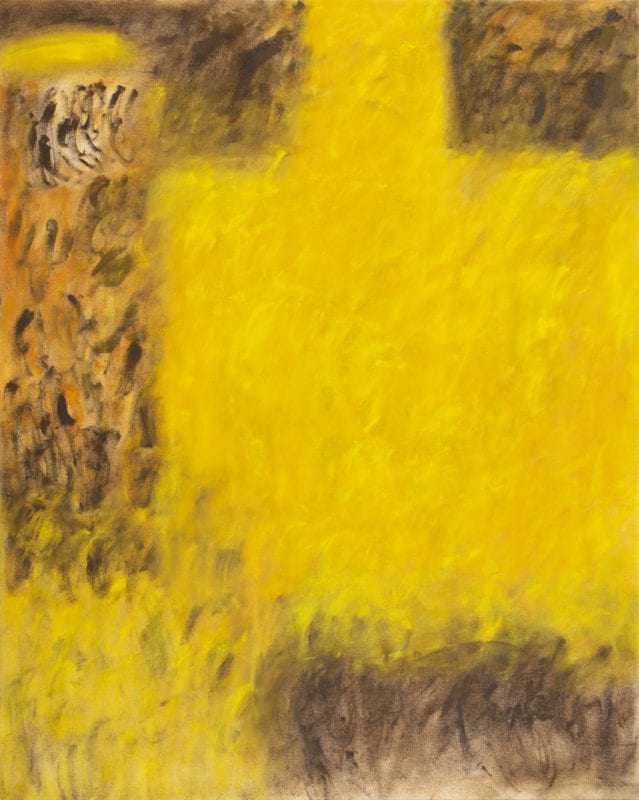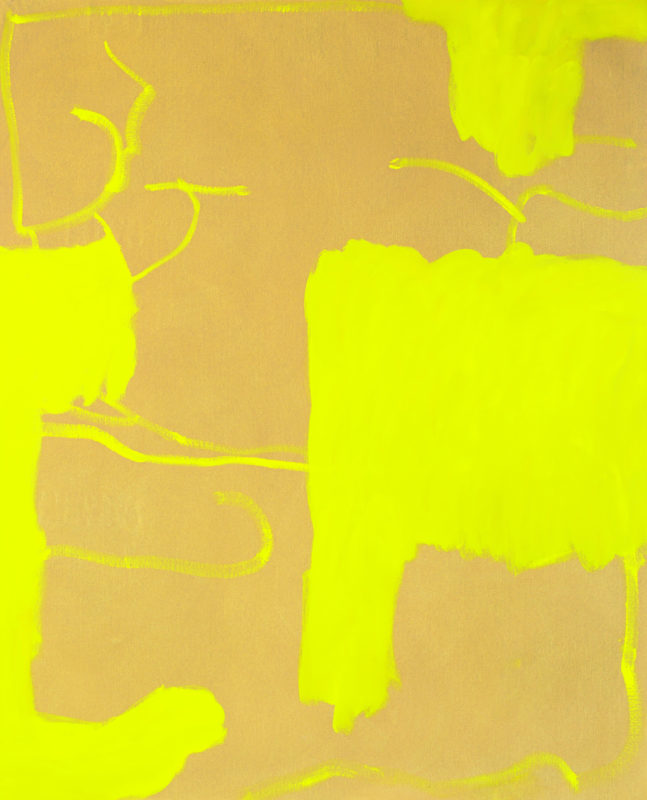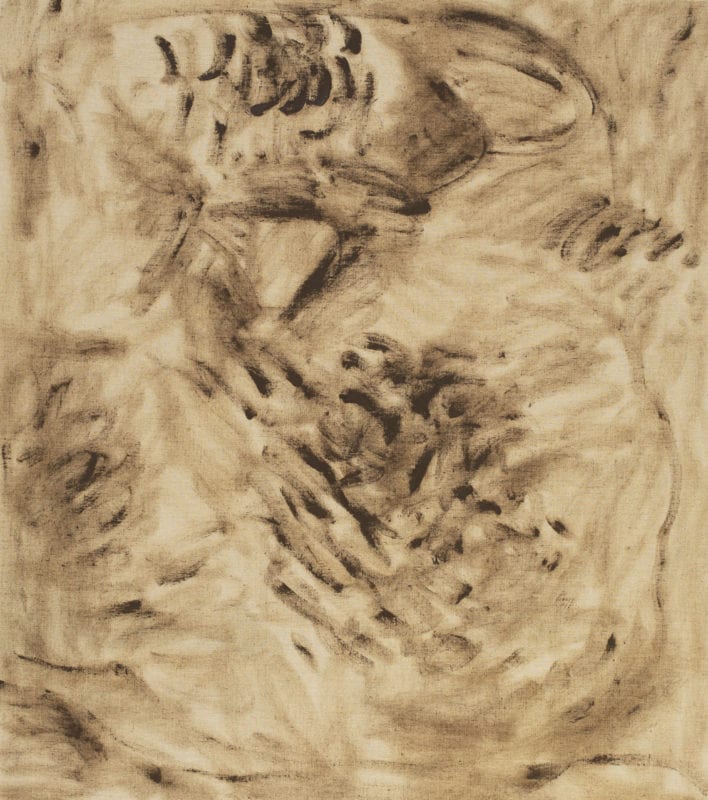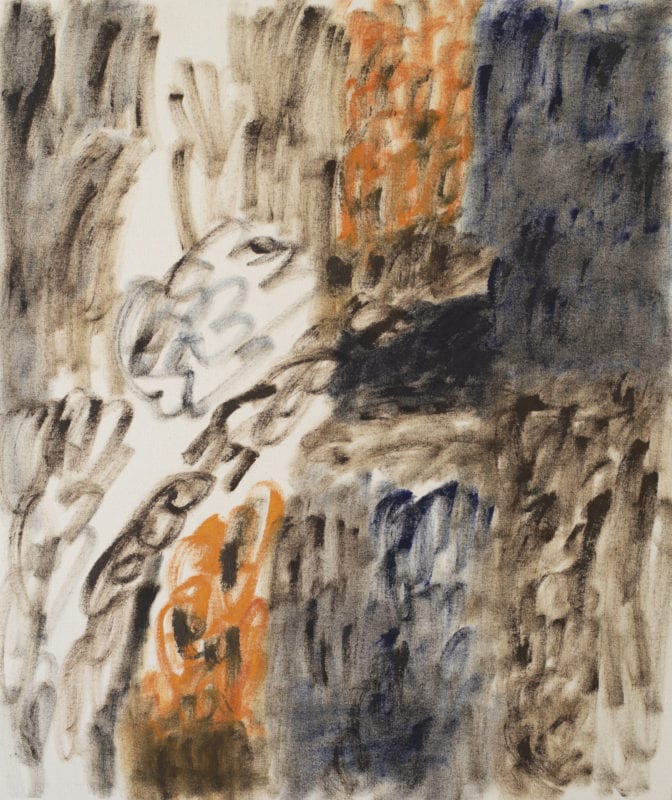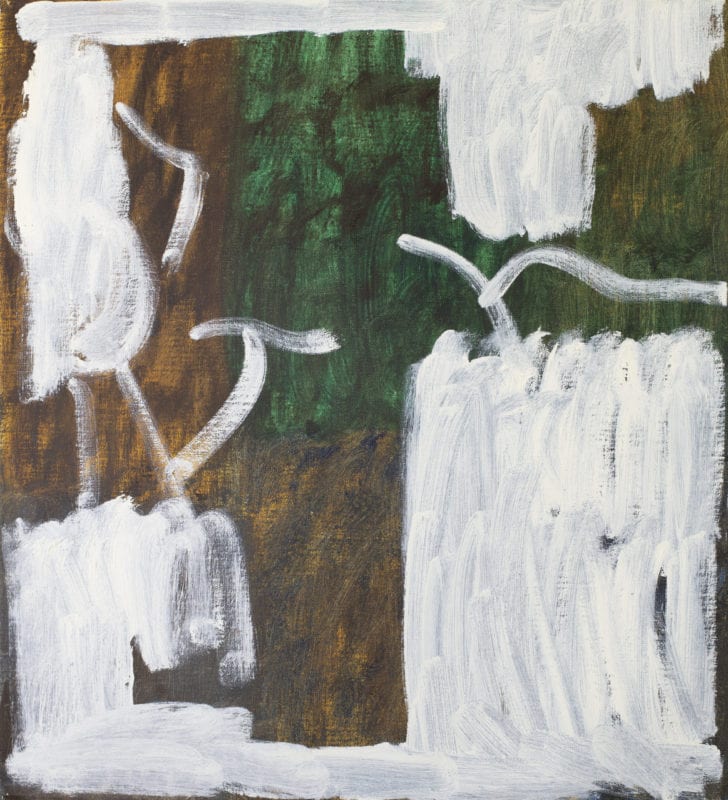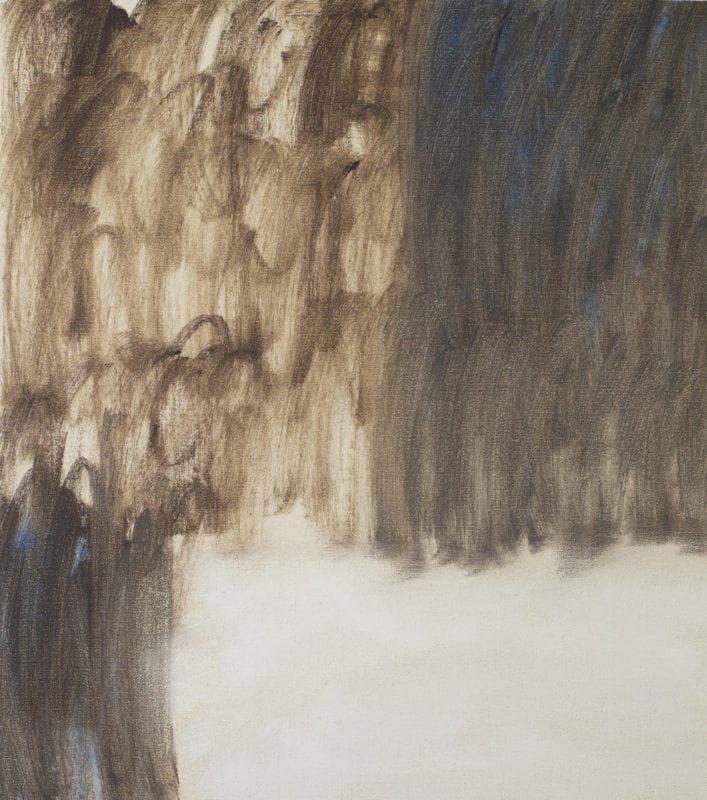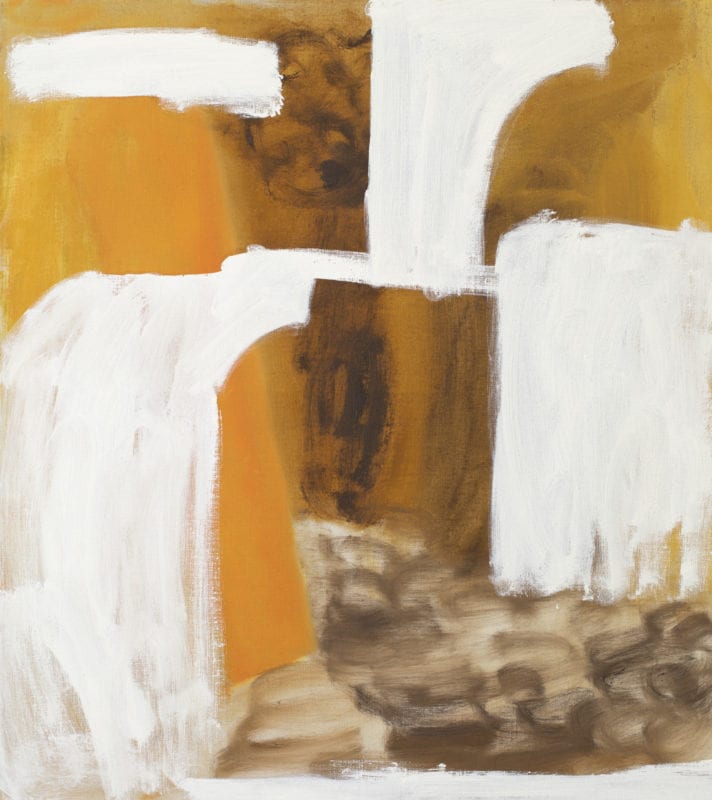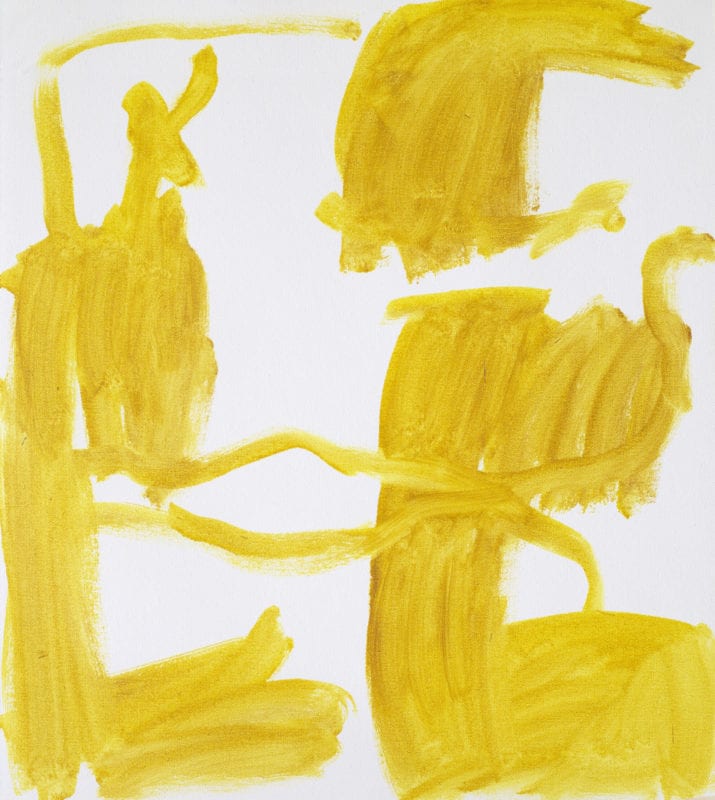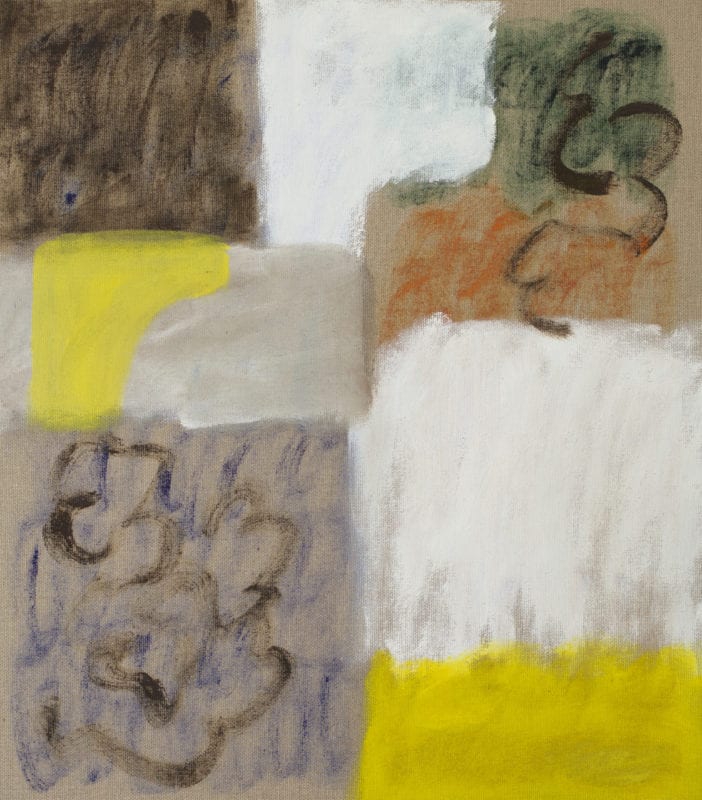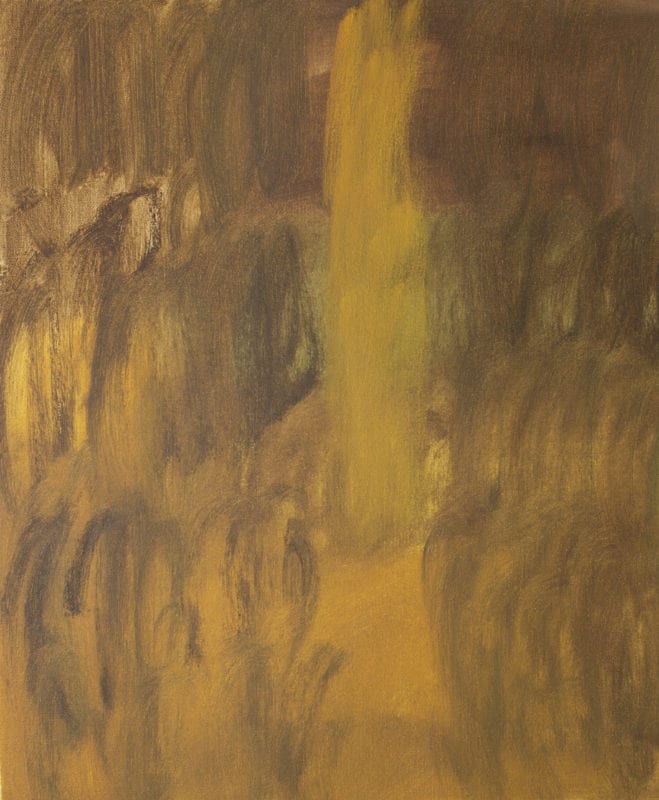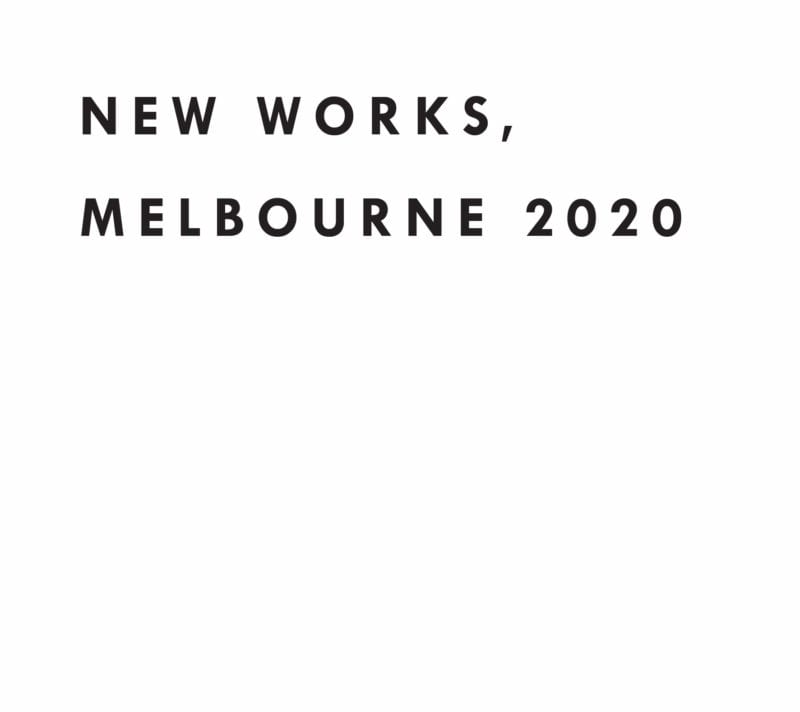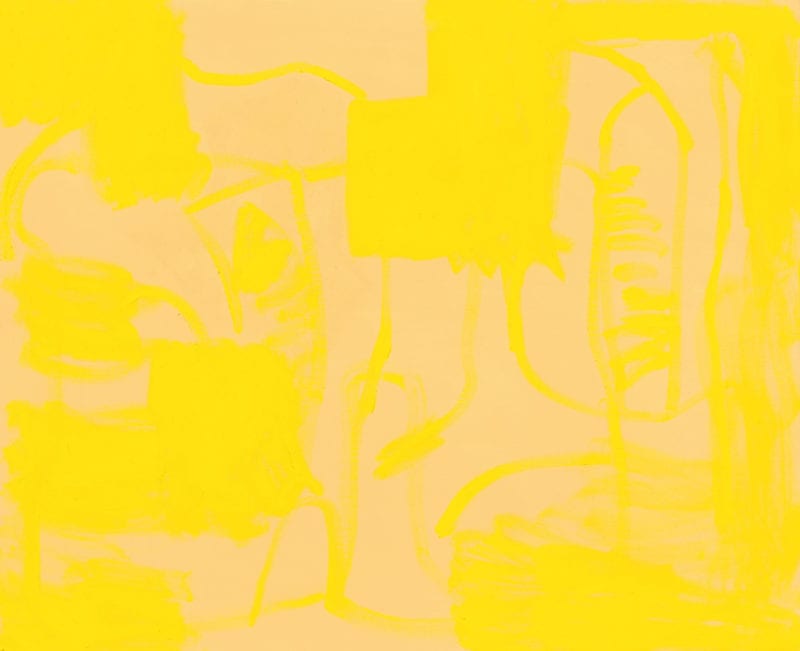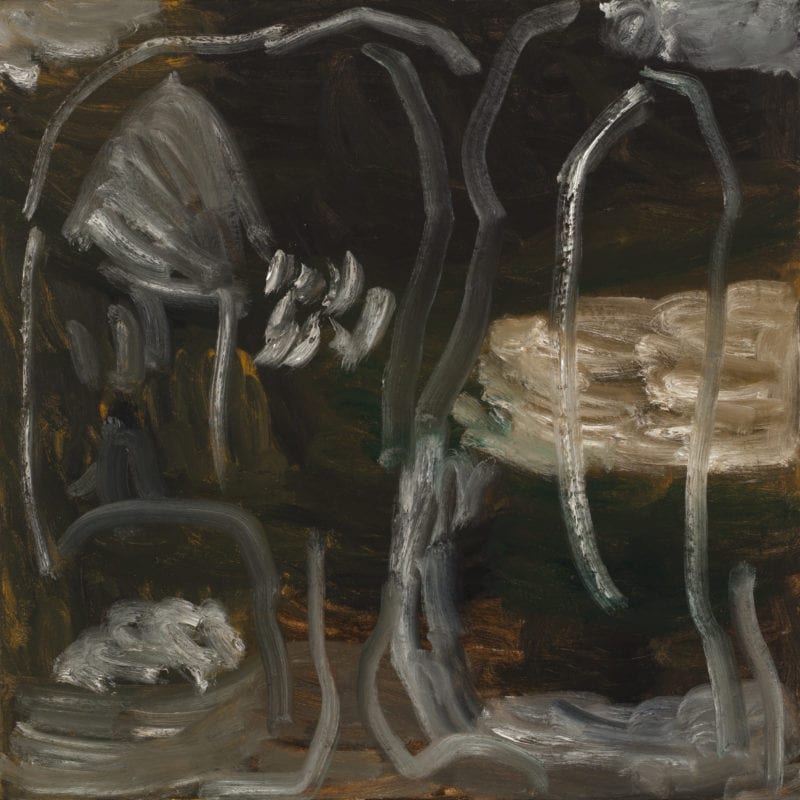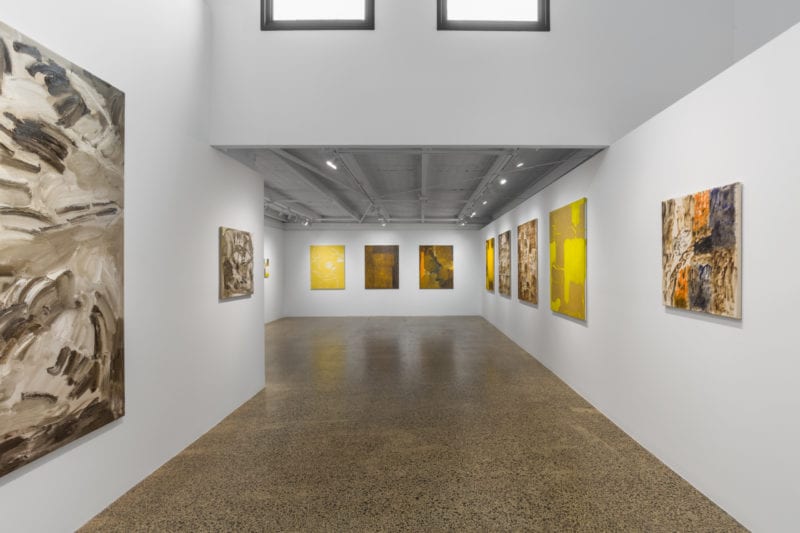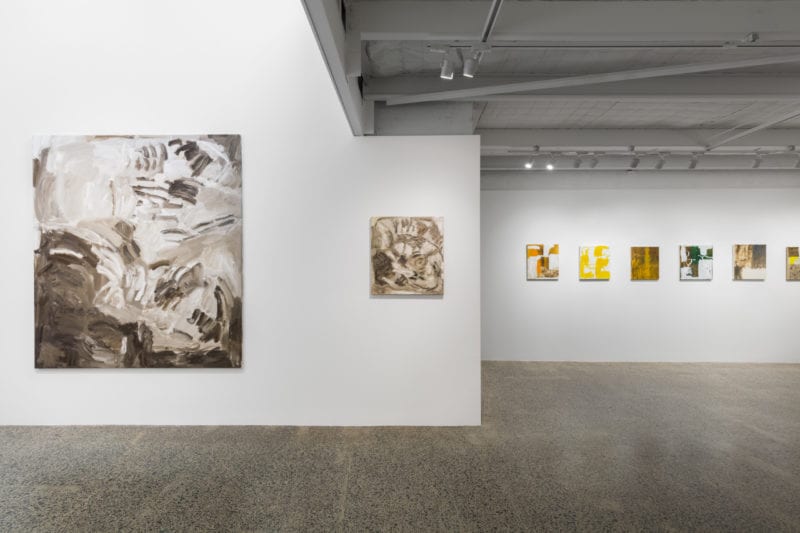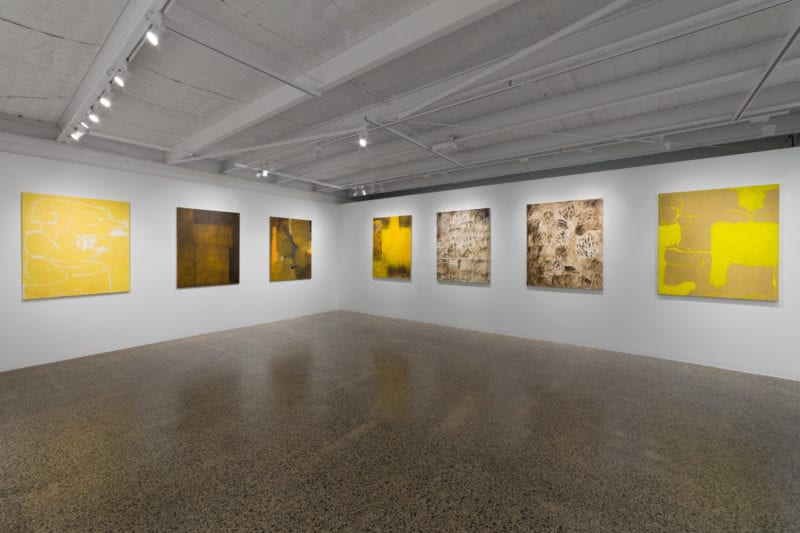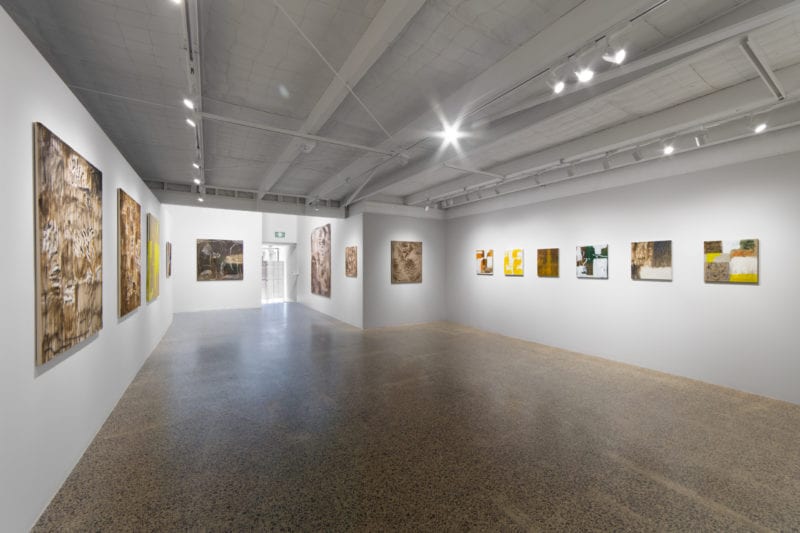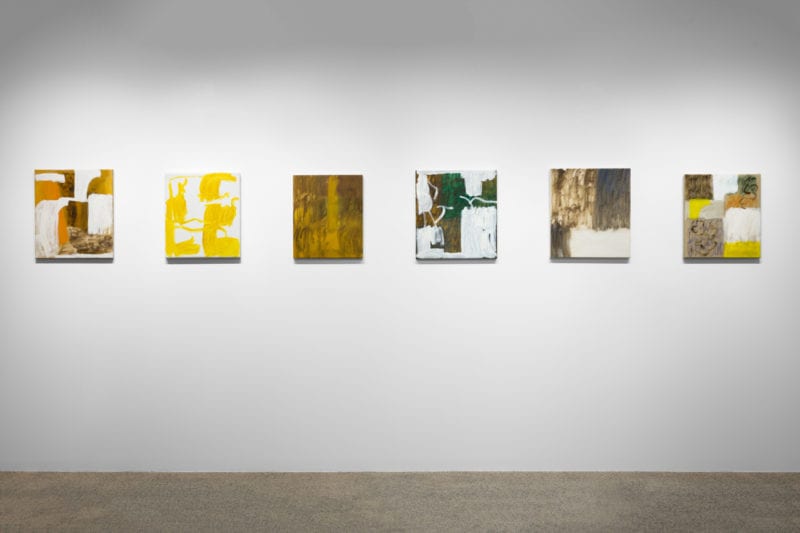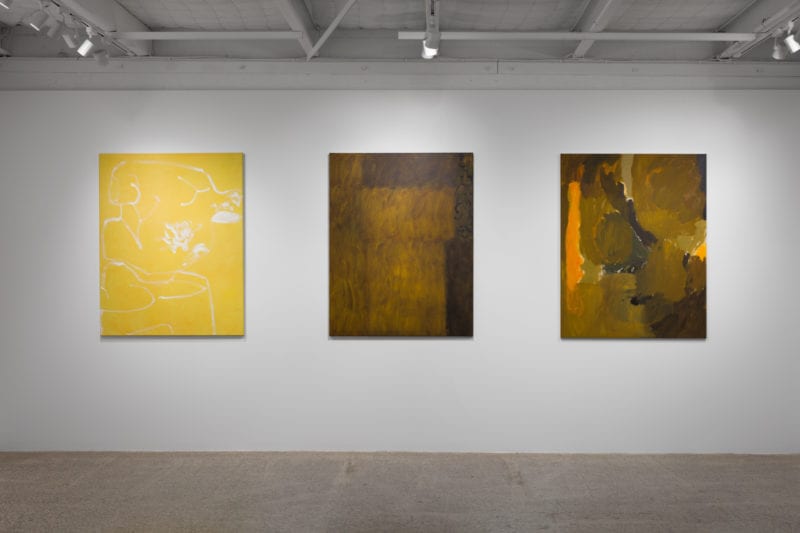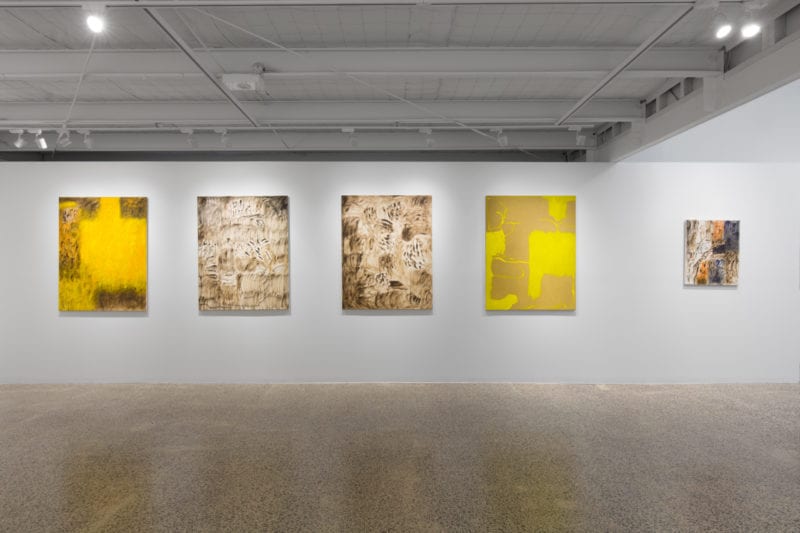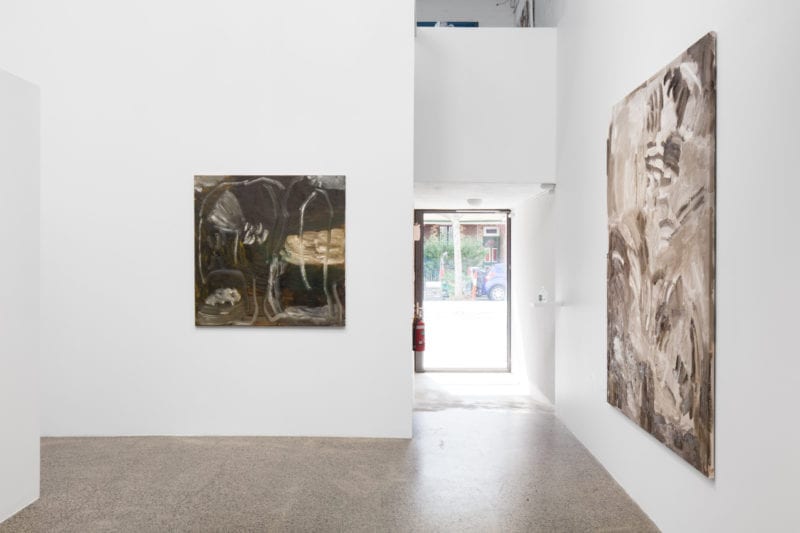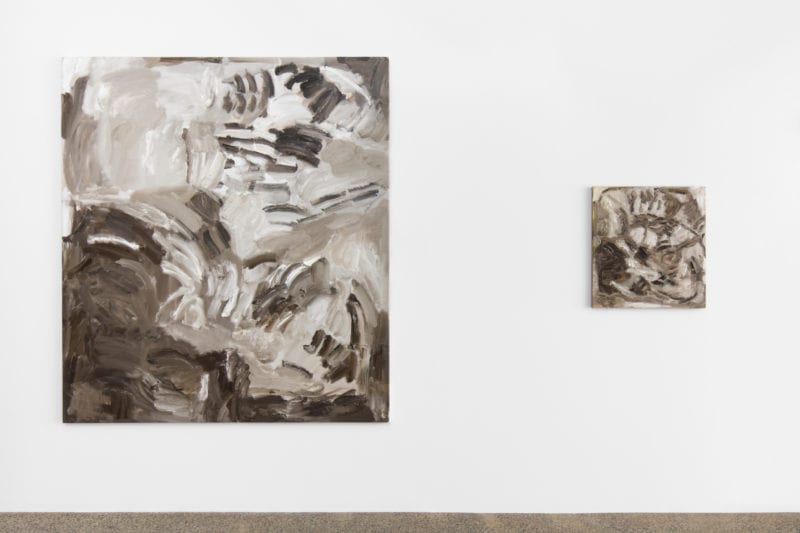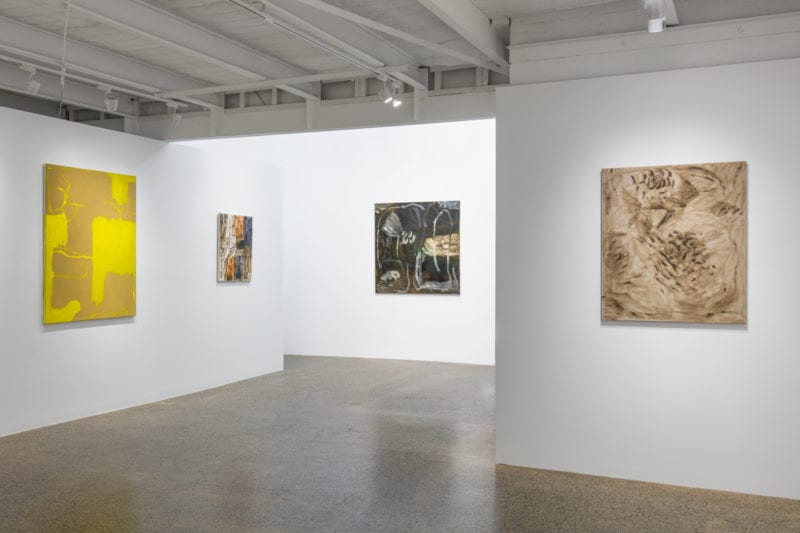ELEANOR LOUISE BUTT
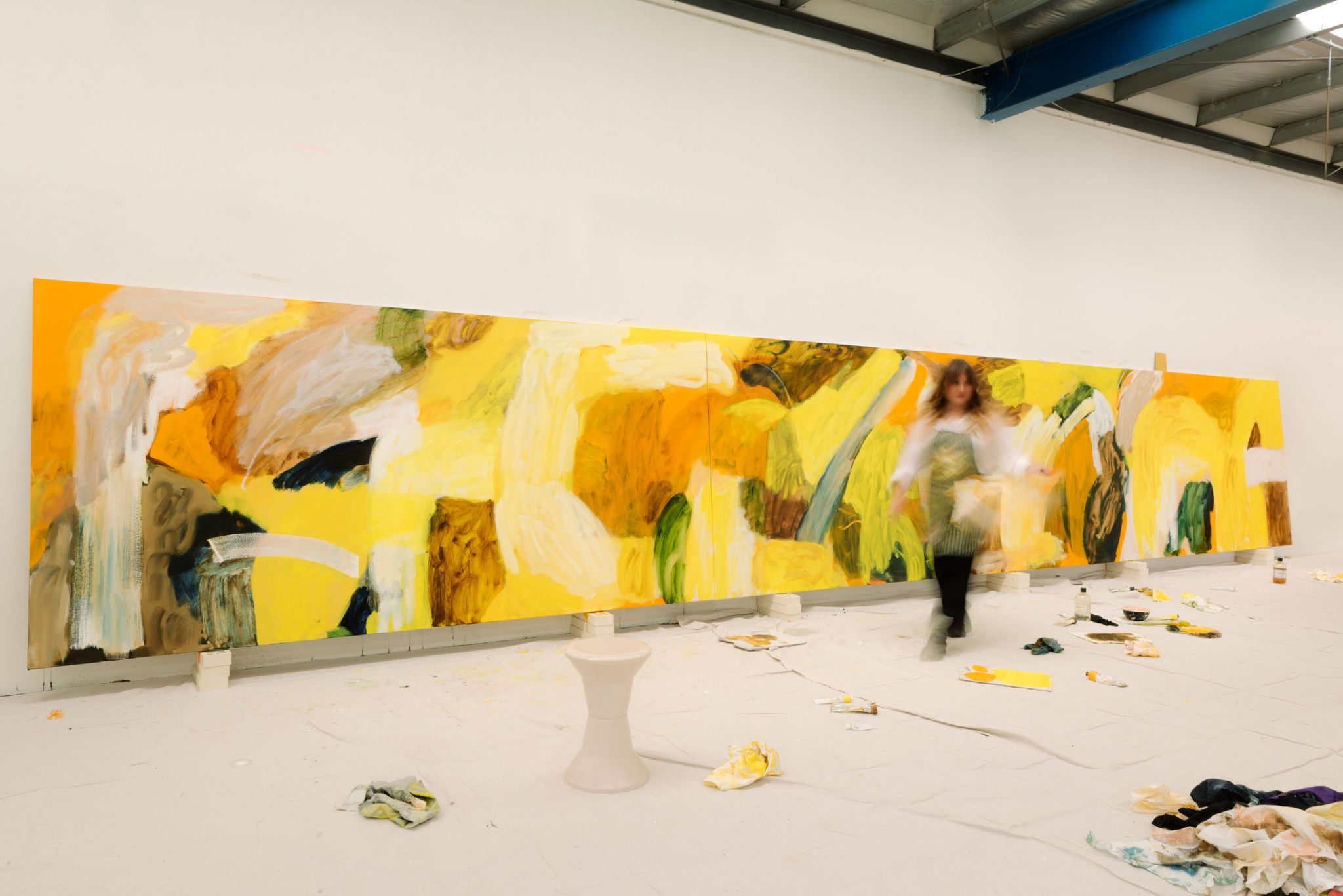
BIOGRAPHY
Eleanor Louise Butt has held solo exhibitions in Melbourne, Sydney and the UK since 2014 and has been included in group exhibitions in Melbourne, Geelong, Sydney and Denmark since 2009. She has an Honours degree from the Victorian College of the Arts (2013).
Eleanor was the 2019 recipient of a tenancy at Porthmeor Studios, St Ives, Cornwall, UK - the first female Australian artist in the studios’ 140 year history. She has been awarded the Muswellbrook Art Prize for Painting (2024) and the George Hicks Award (2012). Eleanor has been a finalist in the Waverley Art Prize (2023), the Bayside Acquisitive Art Prize (2023), the Omnia Art Prize (2023), the Muswellbrook Art Prize (2023), Art Macquarie Group Emerging Artist Prize (2016) and the M Collection Art Award (2016). She was a member of the c3 Contemporary Art Space Curatorial Committee.
In 2021 Eleanor painted a 10 meter commissioned work for Her Bar, Melbourne. Her work has been included in the Thames and Hudson publication 'Australian Abstract' by Amber Creswell Bell (2023) and profiled in Thalia Magazine (US), Art Collector Magazine, Artist Profile, ABC Radio National, Reflektor as well as online and print design publications.
Eleanor's work is held in the collections of Artbank; the Museum of Contemporary Art, Sydney as well as private collections in Australia, United Kingdom, United States, Sweden, Copenhagen, and New Zealand.
ARTIST CV
DOWNLOAD PDF
WORKS
CONTACT GALLERY FOR PRICE INFORMATION

Eleanor Louise Butt 'Music and Trees' 2021 oil on cotton 1.6 x 10 m
Artwork commissioned by HER BAR, 270 Lonsdale St, Melbourne
ALL THAT WHICH SINGS
17 SEPTEMBER TO 8 OCTOBER 2022
As the image pulls me deep inside of it, a special kind of silence descends, trapping me in its dark spaces and channels of light; releasing its secrets as it carries me across surfaces and down through layers. And then that eternal struggle, as I try to pull back from its hold (its trance-inducing revelry, its devilry).
Eleanor Butt’s painting/drawing/making/moulding…
A hang.
A new formation.
An event.
Addition / Deletion.
Playfulness.
Surprise.
The decisions are precious (precise),
yet endlessly fallible—
Each image possesses a catalysing power so that even in the midst of a series/a grouping, the singular painting exists as a singular event concealed within a larger one. I start to think of each work as monad-like in its way. ‘Simple substances’ is how Leibniz described the monad in 1714: (i) The Monad…is nothing more but a simple substance that enters into composites—simple, that is, without parts. (ii) And there must be simple substances, since there are composites; for the composite is nothing more than a collection, or aggregate, of simples.”[1] Is this how we can identify a method, a discernible mode of practice across a body of work, this whole (completeness) as an elemental particle of a larger composite, which then enters into a greater whole (a universe perhaps).
Eleanor produces multiple works concurrently. A gesture from one painting could be the starting point for the next, or it may move onto a drawing, or a bronze casting. Intense moments of screaming, wrenching, and surprise, and then the pace softens and pointy-points of lightness rise up. Dips. Peaks. Vibrations… accompanying the work are distinct experiences of time (temp)—
temperament
temperature
temporary
contemporary…
And we get the impression that a new nervous system is being super-imposed over our own, subjecting it to frequent, minimal shocks and spasms. In this way, a lethargic and barren sensorium is forced to reawaken.[2]
These beautiful words were written by Robert Calasso about the 19th century poet, Charles Baudelaire. As soon as I read them, this perfect image, this wonderous syntax (feelings of inadequacy and envy for the writer), I was flipped straight into the affective experience of standing in front Eleanor’s paintings. And then there is that urge to see worldly references in painterly structures: can we escape that mysterious memetic drive that seems to infiltrate our ‘looking’? I was struggling to situate a nagging reference in one of Eleanor’s large paintings, yet unnamed. I was drawn to turbulent expanses of dark turquoise, streaks of bright white and muddy fields of brown. I was in a rough sea. But the analogy also felt ‘off’…
I saw (by pure chance) a similar reference; an arial image of a Basque sea that had the same palette as Eleanor’s painting. It was the opening to the TV series, Hondar ahoak [Mouths of Sand], and the first episode was titled, “Salt and Diesel”; the beauty of the sea corrupted by the world’s most notorious fuel.[3] It is the kind of sensible skirmish between beauty/not beauty that Eleanor plays with in her work, the way she dodges the sentimentality that can overpower some images.
In the middle of developing these thoughts, I asked Eleanor for the work’s title. It immobilised me at first — I make a soft green pillow for your head (2022).[4] The Basque thriller is based on a beautiful old seafaring tale that says if a person betrays the secrets of the sea, by repeating them on land, their mouth will fill with sand. I feel intensely the shame of the writer who tries to betray the speechlessness of the image. What hubris to try to enter into its secrets.
Dr Jan Bryant
<artprogramme.org>
September, 2022
[1] Gottfried Wilhelm Leibniz, [1646–1715] The Monadology, 1714, (trans.) Robert Latta, 1898.
[2] Roberto Calasso (trans.) Alistair McEwen, La Folie Baudelaire (UK: Penguin Books, Random House, 2013) 18
[3] Hondar ahoak (2020) Basque, directors: Koldo Almandoz, Angel Aldarondo, cinematography by Javier Aguirre Erauso, 200 mins., Colour.
[4] Eleanor Butt, I make a soft green pillow for your head (2022), Oil and synthetic polymer on cotton, 168cm x 198cm, 2022
OPENING SPEECH
TAI SNAITH, 17 SEPTEMBER 2022
EXHIBITION PRESS
THE DESIGN FILES
AN ARTIST’S HOME BURSTING WITH HER OWN BEAUTIFUL GOLDEN-TONED PAINTINGS
STUDIO VISIT
If Eleanor Louise Butt’s expressive paintings look familiar, it’s because the artist has already made her colourful mark on the local and international art scene.
We featured Eleanor back in 2020, (when she was on residency in Cornwall, UK!) but you might also recognise her signature abstract strokes and use of yellow hues from the beautiful mural in Melbourne’s HER BAR!
More recently though, Eleanor has been holed up at her home and studio amongst the forest of the Dandenong Ranges, filling her house with canvases for her new exhibition, ‘All that which sings’.
Artist Eleanor Louise Butt describes her paintings as visual ‘dialogues’, weaving memory and story into her energetic brushstrokes.
‘The initial stroke of paint is akin to an opening sentence in a conversation, from there the rest will flow,’ Eleanor explains. It’s not always easy, and sometimes the outcome is unexpected, but there’s always a sort of ‘resolution’.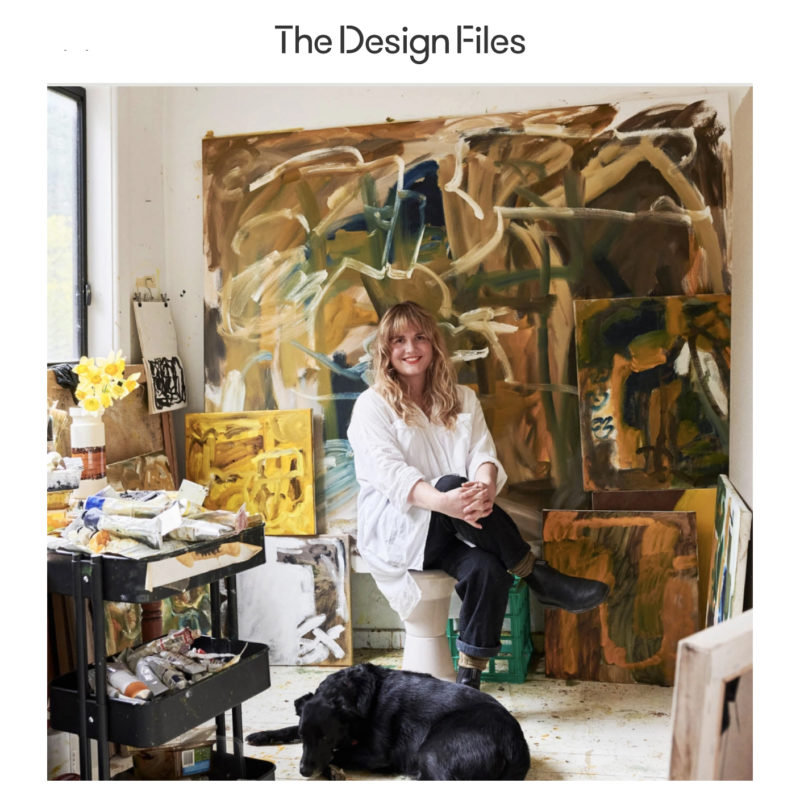

‘Some works take weeks or months to complete, and others might be done in a few hours – each work is different. I don’t pre-plan my works so each is a mystery that unfolds with the process,’ she adds. This intuitive, back-and-forth process has dominated the artist’s life in recent months, as she’s worked towards her upcoming solo show at Melbourne’s Nicholas Thompson Gallery.
Eleanor works from her home and accompanying studio in Kallista, spending hours shuffling between multiple paintings at a time, often listening to her 40-plus hour playlist of music to help her get in a ‘painting frame of mind’. Everything from vintage books to daffodils are meaningful references dotted around her space, integral to her process.
‘[My studio] has wonderful afternoon light,’ Eleanor says. ‘The large window overlooks our garden and the mountain ridge above us. I love that my practice is so integrated with our daily lives. Wet paintings hang on the walls of our living spaces to dry, and I can step in and out any time of day or night.’
And after working on ‘All that which sings’ for the entirety of this year, the artist’s home is now completely full of paintings! The works showcase Eleanor’s distinctive, gestural painting techniques, which consist of layering oil paint onto canvas with brushes, rags and even directly from the tube. It makes for a body of work that is uniquely emotive – in large part thanks to her distinctive yellow colour palette. Varying hues of marigold, sunshine yellows and mustard are mixed with deeper, moodier tones in these artworks, which will appear alongside her sculptural works when the exhibition opens later this week.
‘The title piece is probably my favourite, but they all have their place,’ she adds. ‘I will miss living with these paintings as they’ve been slowly filling our home this past year.’ The showcase is wonderfully abstract, with poetic artwork titles that allow you to draw your own meanings from Eleanor’s intriguing and beautiful creations.
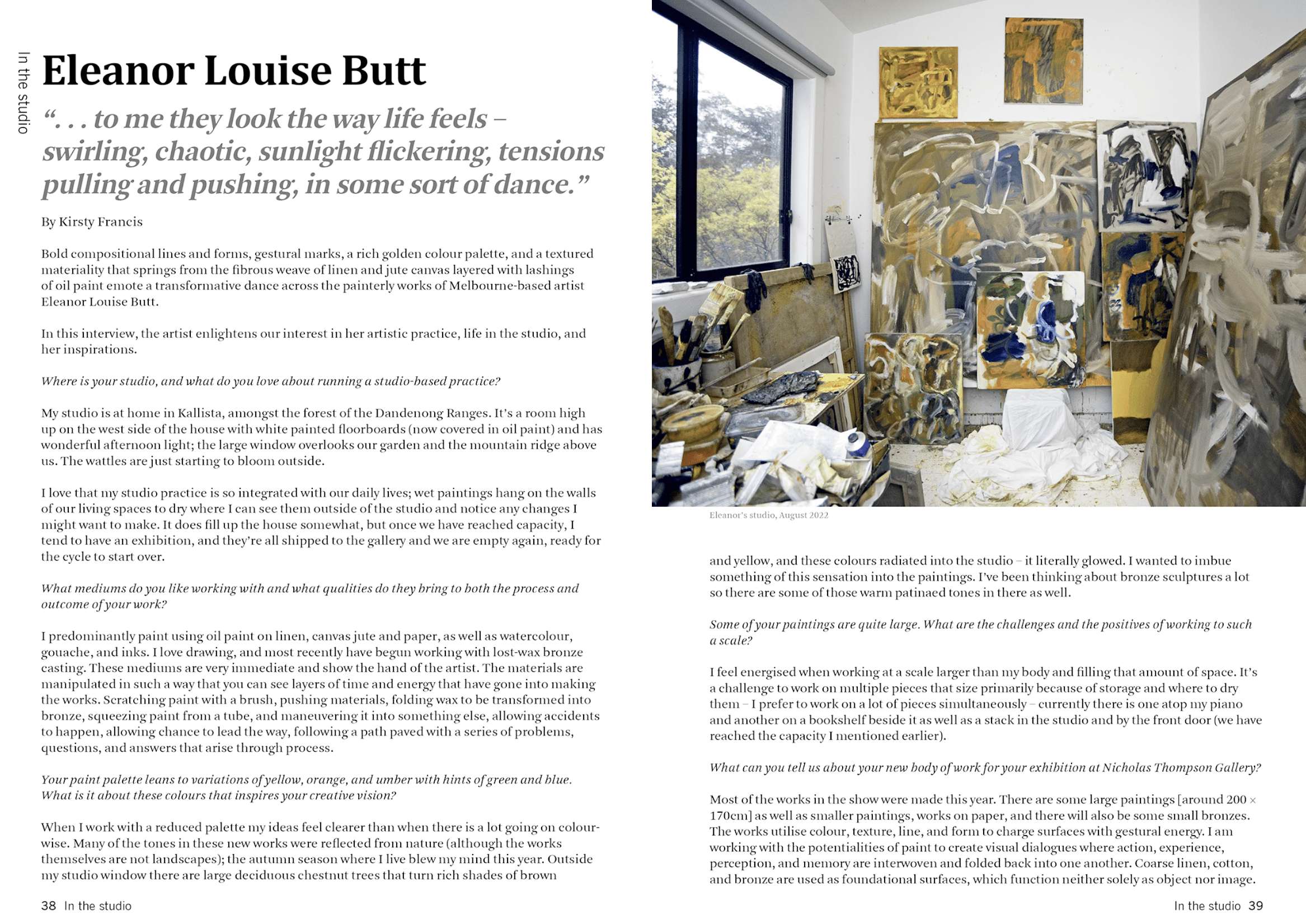

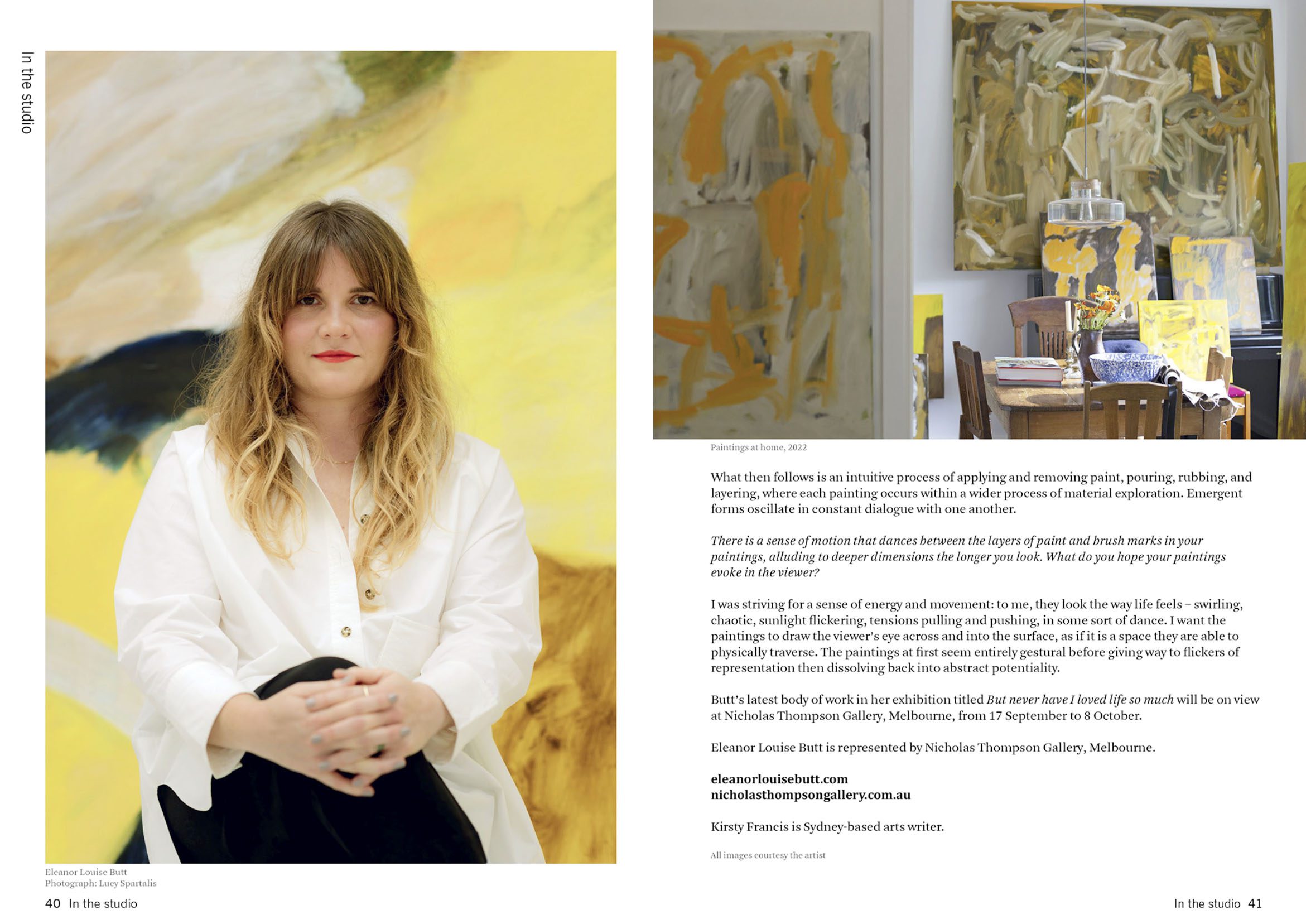

RECURRENT COMPOSITIONS
27 JANUARY TO 13 FEBRUARY 2021
EXHIBITION PRESS
ARTIST PROFILE ONLINE
Melbourne-based artist Eleanor Louise Butt talks about the ways in which her works ‘speak’ to each other, conversing and sharing expressions across multiple planes until a melody is formed.
I observe my paintings developing like a conversation, whereby each mark influences the next. Emergent forms oscillate in dialogue with one another, and motifs are repeated across planes. My work adopts the potentialities of paint to create visual dialogues where action, experience, perception and memory are interwoven and folded back into one another.
My current body of work began in late 2019 in St Ives, UK, where I was awarded a tenancy at Porthmeor Studios for seven weeks. Having this time solely dedicated to my practice was an incredible opportunity to focus and uncover new concepts and ways of working.
I felt the colours and intensity of the Cornish landscape seep into my work. The rough winter ocean smashed against towering granite cliffs and reverberated through my legs and into my body. The raw energy inspired me to paint larger more ambitious works. I hadn’t imagined that I could be inspired by landscape in a way that wasn’t visual, there was something vitalising about that cliff-edge life.
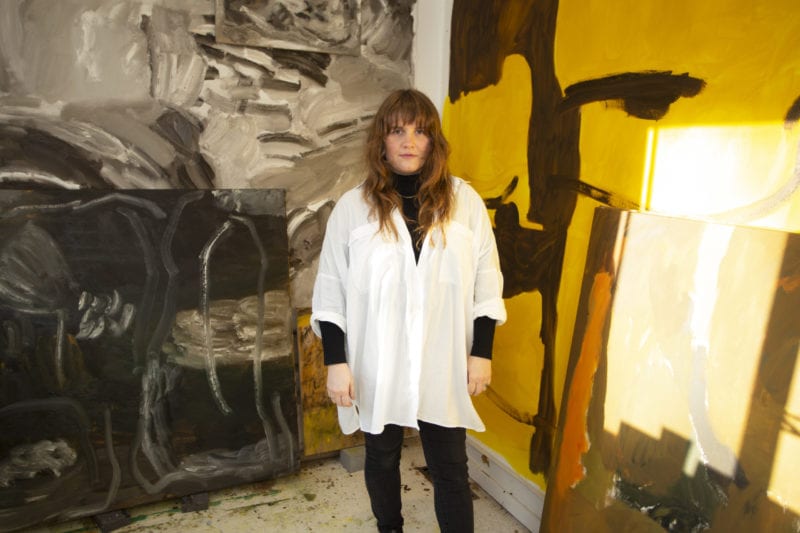

Eleanor Louise Butt in her studio, Melbourne, 2020. Photograph by Elle Ross
Now back in my Melbourne studio, I continue to work on multiple paintings at once, which means that the works combined can be read as a whole. They communicate across planes to each other, calling and repeating expressions, until a conclusion is reached.
Taking a shape or mark from a previous work, I begin a new painting. Coarse linen, cotton, and hessian are used as foundational surfaces that function neither solely as object nor image. What then follows is an intuitive process of applying and removing paint, pouring, rubbing and layering, where each painting occurs within a wider process of material exploration. I load up a brush and drag the paint across the surface, allowing chance to interact with material. I am interested in creating tensions between the multiple layers on my surfaces.
Sometimes an accident or ill-placed mark is the best thing that can happen to a painting. In rubbing back the paint, an understory is revealed that can be built upon, and earlier ideas that were laid down are brought back to light.
Composition in Brown, from Porthmeor (2019) is a scaled-up re-working of a smaller work. I was interested in contradictory representations of growth and compression, and in drawing out a glowing resonance from within the painting. The browns echo the bracken of the moors I had been walking though daily in Cornwall. There are loose flowers down the right hand side of this painting, a nod to the borders of Bonnard’s paintings, an artist whose work has been a significant influence on my own practice.
Scale and strong solid forms repeated from previous paintings are employed in Large Abstraction in Brown and Yellow (2020). Originally this painting was going to be yellow on a white ground, but the negative space needed the dark anchor of the brown. A large brush loaded with brown paint and dragged across the surface allowed chance and material to charge the lines with tension.
I have been keeping a journal of sketches, which has provided fresh entry points for beginning new paintings. These pencil sketches are the source of the pared-back painting palette of Compressed Form (raw umber and white abstraction II) (2020). Built-up energetic line-work, reminiscent of a sculptural form with heavily gouged lines, resulted in an impasto surface bulging with brown and white.
I don’t attempt to say everything in a single work, rather I focus on allowing my paintings to speak together across multiple planes.
PORTHMEOR STUDIO 5 PAINTINGS
19 AUGUST TO 6 SEPTEMBER 2020
EXHIBITION PRESS
EXHIBITION REVIEW BY TAI SNAITH FOR 'ART ATTACK' ON 3RRR 'SMART ARTS' PRESENTED BY RICHARD WATTS, 3 SEPTEMBER 2020:
CLICK TO LISTEN ONLINE
'ARTIST PROFILE' ISSUE 52, PROCESS p 124-126
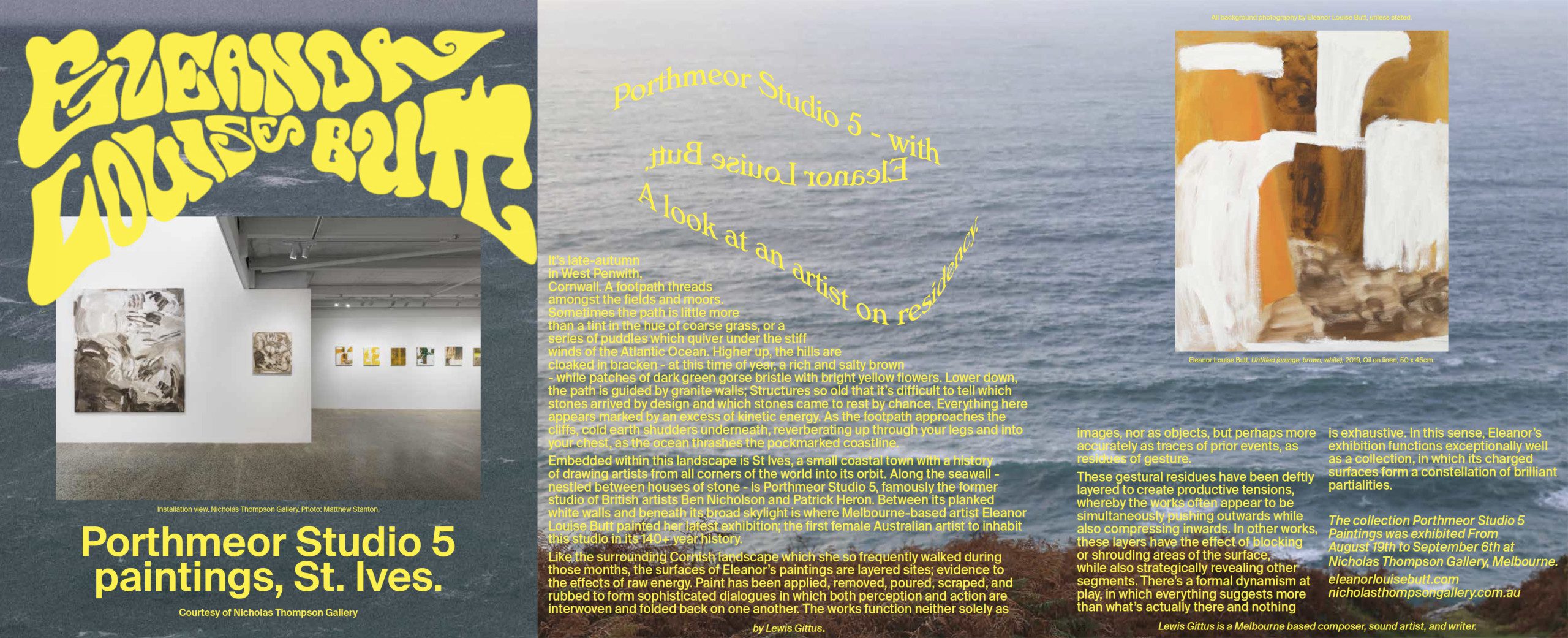

EXHIBITION FOREWORD
The paintings in this exhibition began life in Porthmeor Studios, where the Atlantic meets the Napoleonic-era sea wall that has – so far – stopped the waves reclaiming the famous little port of St Ives. Or before then, really – before Eleanor Louise Butt made her 11,000-mile journey from Melbourne to Cornwall, when Porthmeor was still a destination of the mind, a compass-point. Because, wherever artists travel, they bring with them – as natives of the inner landscape – at least as much imaginative territory as they discover. That’s no reason never to venture abroad, however. Ben Nicholson, one of Porthmeor Studio 5’s best-known previous occupants (the other was Patrick Heron, to whom he handed it on), believed that an artist will always find the influences they need. Porthmeor – the place, the space, the history – was somewhere that Butt sensed would have meaning for her work. I think she was right.
There’s the huge studio itself, clad floor-to-ceiling in white planks and panels like the hold of a modernist ark, with its vast cinematic skylight. Underneath are cellars where fishermen clatter and swear as they did when the sea wall was built. But the studio space has never been used by anyone but artists. Over the past few years, since the building was saved at renovated, it has become a palimpsest of practice. By the door hangs a tiny sculpture fashioned from a twist of citron rind. A note pencilled by Nicholson on the wall, maybe seventy years ago, has been carefully not painted over. On one level, it must be daunting, setting up in a place where many artists have worked before you. But perhaps, too, the experience is like that of a pianist entering a rehearsal room. Why else would you be here?
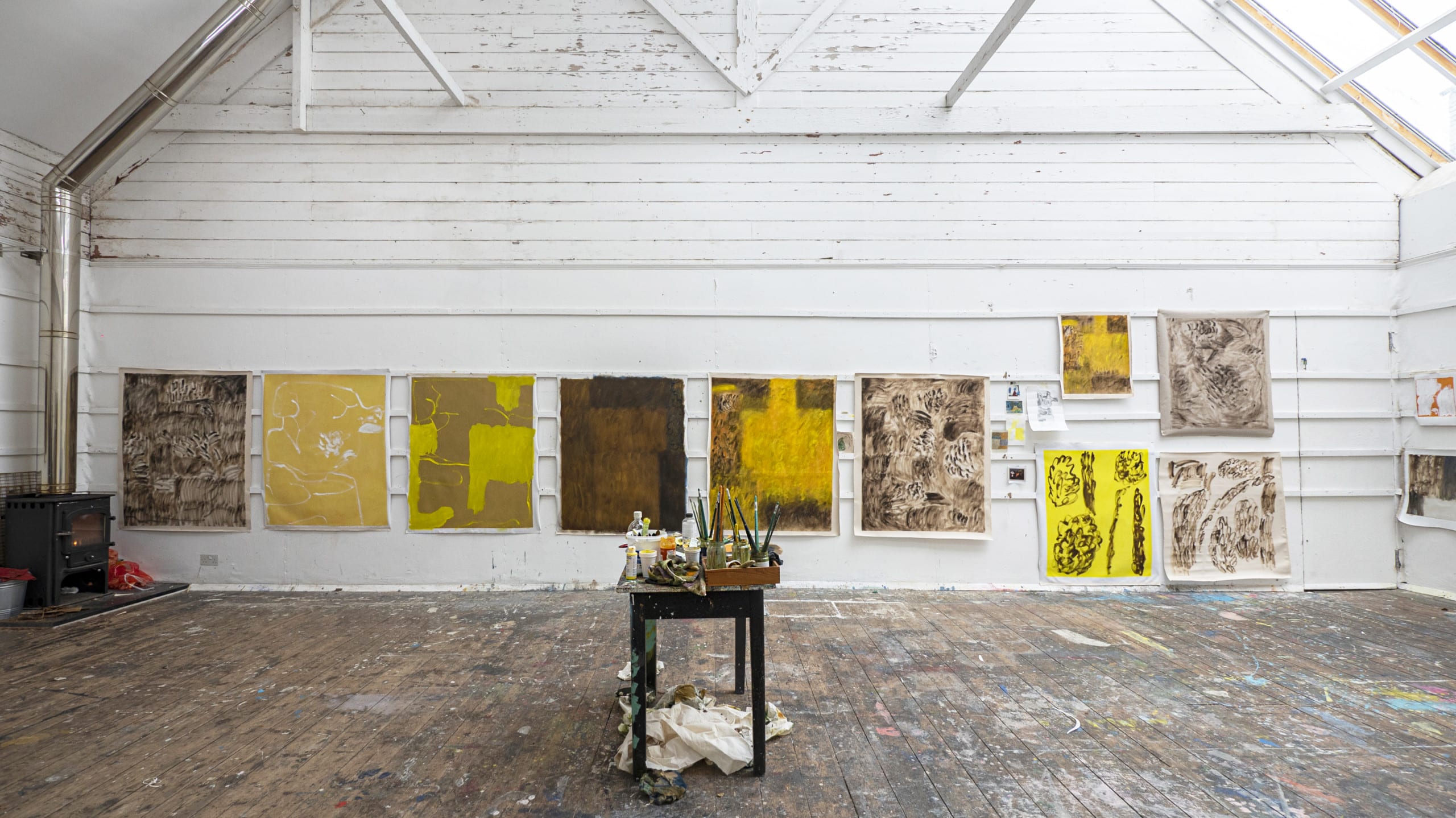

Porthmeor Studio 5, St Ives, Cornwall UK. Photograph by Alban Roinard, 2019
And there’s the environment, of which the sky alone is present to the artist in Studio 5, but which draws the eye – the whole attention – as soon as you step outside. Porthmeor is the name of a beach (porth meaning cove and meor big in the old Cornish language), an arc of bright sand between two greenstone headlands. Westwards, the cliff path threads through gorse and boulders, defunct tin mines and moorland streams towards Land’s End.
Some of the paintings in this show I saw in their earliest stages in Porthmeor Studios seven or eight months ago. Butt spoke of her admiration for Heron and his abstract language of colour, and of Bonnard (whom Heron had championed in the unreceptive greyness of postwar Britain). And this made sense, especially of the yellows flowering here and there around the studio walls. One time – a twilit December day when groundswell, wind and rain were on full blast – we happened to meet on the coast path, not far from Clodgy Point (another earthy Cornish place-name), which has become the title of a painting.
This winter landscape, its colours and atmosphere, resonate through Butt’s new body of work – the shadowy bronze of last year’s bracken, the drenched greens, browns and greys of the cliffscape, yet underneath, beyond, the push and pulse of the sea-light. I think of these sensations as very specific to the place. Maybe they could be imagined. But on the evidence of these paintings, I’d say they were worth the travelling and the bringing home.
EXHIBITION ESSAY
In its modernist incarnation, abstraction (exemplified by abstract expressionism) was framed as a declaration of the artist’s authentic self, articulated by the application of unbridled and rapid gestures upon the canvas. Now that the project of modernism has all but been buried, the question remains – what is at stake in abstraction? Eleanor Louise Butt’s contemporary take on the style refutes the outdated logic that painting should operate as a faithful representation the artist’s psyche. Yet, at the same time, Butt’s work is also a personal account of her individual experience. If these paintings act as a record of her 2019 tenancy at Porthmeor Studios in St Ives, then they are written in a broader language of anti-modernist abstraction that encompasses less of a direct transference from artist to canvas and more of a strategic process of selective exposure.
It should be emphasised that Butt’s choice of abstraction is not a tool for alienating viewers. Instead, the paintings modestly acknowledge the impossibility of absolute representation - representation that even more illustrative mediums, such as photography or sculpture, still fail to capture. Indeed, this is in line with what affect theorists have continued to remind us in recent years, that absolute representation is an essentially impossible task. As such, viewers are presented with mnemonic approximations of Butt’s experience of St Ives and greater West Penwith. This includes the reverberations created in the artist’s body by the powerful waves of the Atlantic ocean thrashing into St Ives’s high granite cliffs (Untitled (brown, blue and orange sketch), 2019), which Butt translates through the use of short, linear brush strokes in combination with a palette dominated by brown and orange. As such, the landscape steps in as a surrogate for Butt’s memory, and Butt’s works operate as a double abstraction of the singular and phenomenological to the collective and visual.
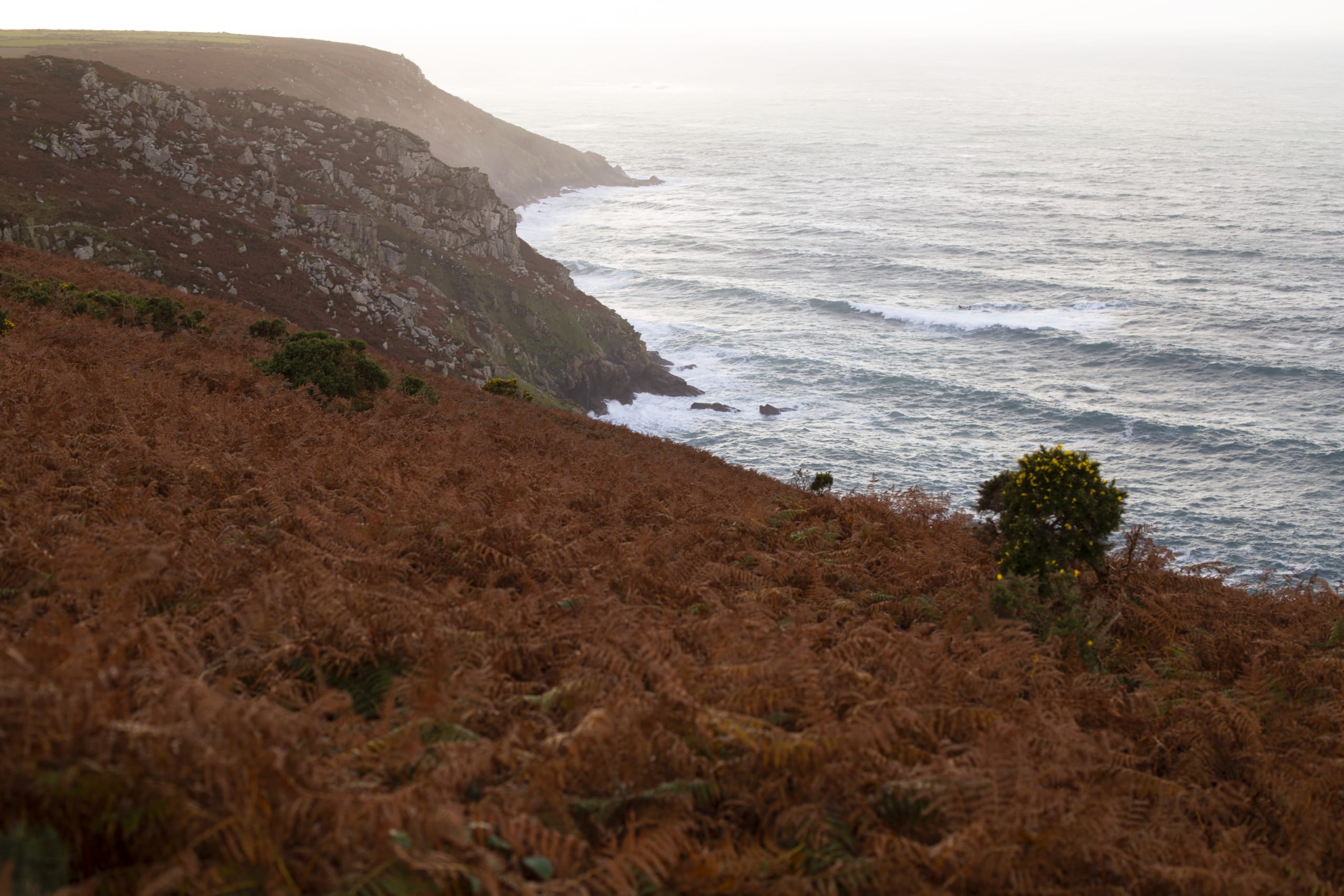

Trevean Cliff, near Morvah, Cornwall UK, 2019
Working contra modernist abstraction’s desire to lay everything bare, Butt will often finish her works with blocks of colour that shroud certain portions of the painting. In Untitled (green, orange, white), 2019, for example, the artist has overlayed an earthy base composition with a series of uneven white blocks that obstruct our vision of the work’s underlayer. Interestingly, this white layer acts as a framing mechanism, exaggerating that which is not covered. Butt treats the artwork as a journal –but one in which only select memories are shared with her viewing public. This formal technique might be understood as a reaction to the oft repeated argument that to make a memory public is to immediately open it up to the “invasions of public spectacles of sentiment and clichés”, the result of which is a dulling of the singular, subjective moment.1 The blocking seen in Butt’s paintings visually fragment her subjectivity to protect it from complete objectivisation from the viewers’ gaze.
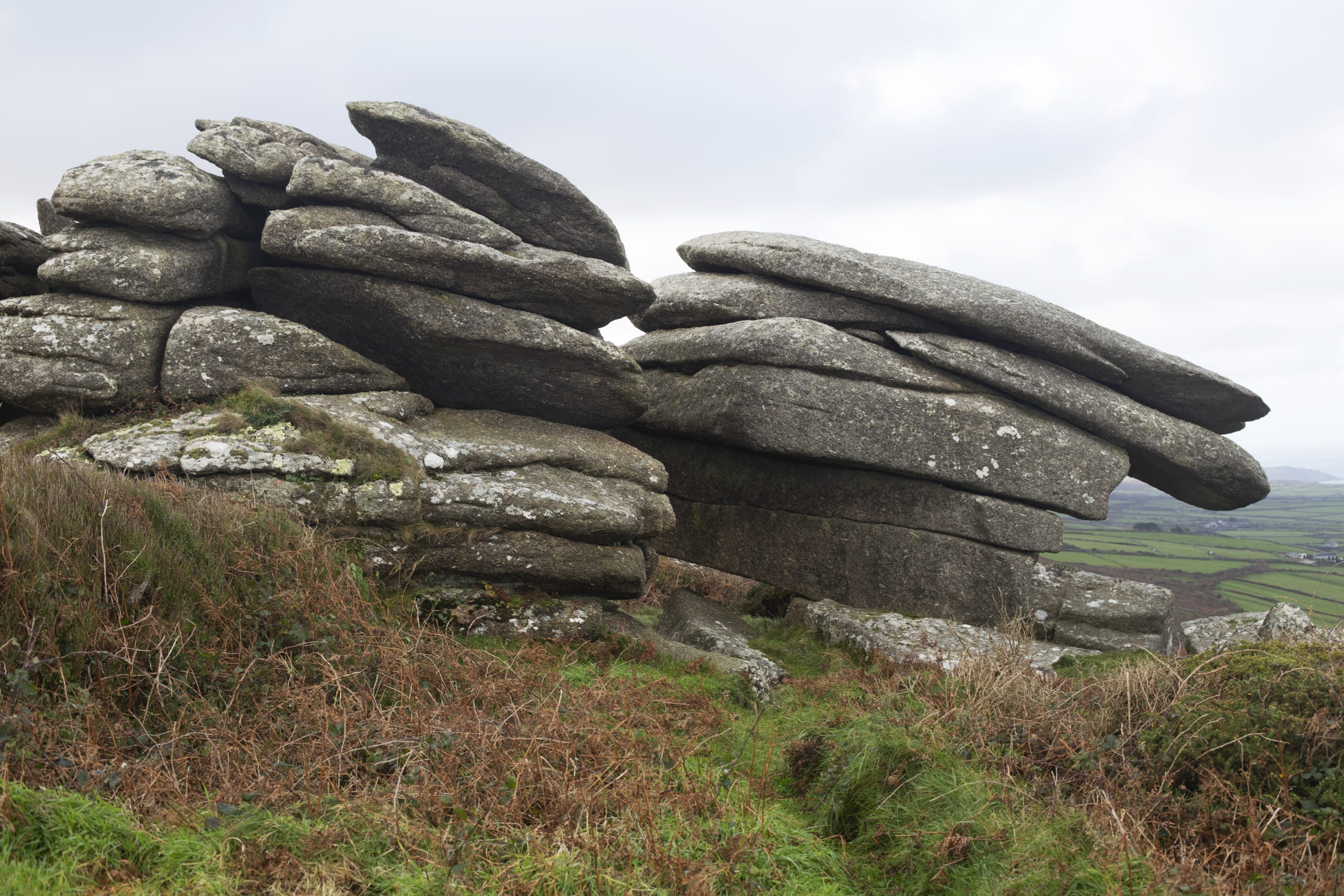

Boulders on the hill above 'Eagle’s Nest', Zennor, Cornwall UK, 2019
Butt’s very specific technique, in which she loads her brush with paint and drags it across the surface of the canvas, charges her paintings with tension - a kind of push and pull between transparency and opacity. This action simultaneously applies new paint to the work while also leaving certain sections empty, thereby allowing what is beneath to show through. As much as Butt refuses to lay everything out in the open, her technique is one that does not erase, rather, it layers. The act of erasure suggests the removal of imagery, while Butt’s layering is really a technique for muddying what is there. The image is still there, only it has been largely altered by the addition of blocks and Butt’s repeated dragging of pigment across previous layers. In many cases, the blocks are varyingly transparent, meaning that strata beneath pierce through to the surface. This is demonstrated most clearly in Composition in brown, 2019. This painting’s yellow underlayer is transformed by the brown block (a nod to the bracken along the Cornish moors) that has been applied over the top. Yet the yellow is not erased. Instead, it is assimilated into the blocking, which results in a glowing effect that tips over into the visceral; one imagines that the underlayer has been compressed by the brown block and is forcing its way through to the surface.
Butt’s layering technique creates myriad mazes, which begin at the canvas’s base and end at the painting’s surface. The entanglement present in a single work is then mirrored on a macro-level between paintings. Butt creates several paintings at once and, as such, there are always a number of formal slippages — colour, line, texture — amongst her pieces. These slippages resemble a tangle of strands that eventually unravel to reveal a balance between works. Of course, any formal teasing out reflects the process of conceptual resolution in Butt’s practice, where the tension between subjective and objective representation eventually finds a balance. In the final analysis, the complexity of Butt’s painting lays in the work’s ability to operate contra a modernist definition of abstraction as total transference of the artist’s inner-being, while also creating a visual language that allows Butt’s audience to gain a broader impression of the artist’s situated experience.
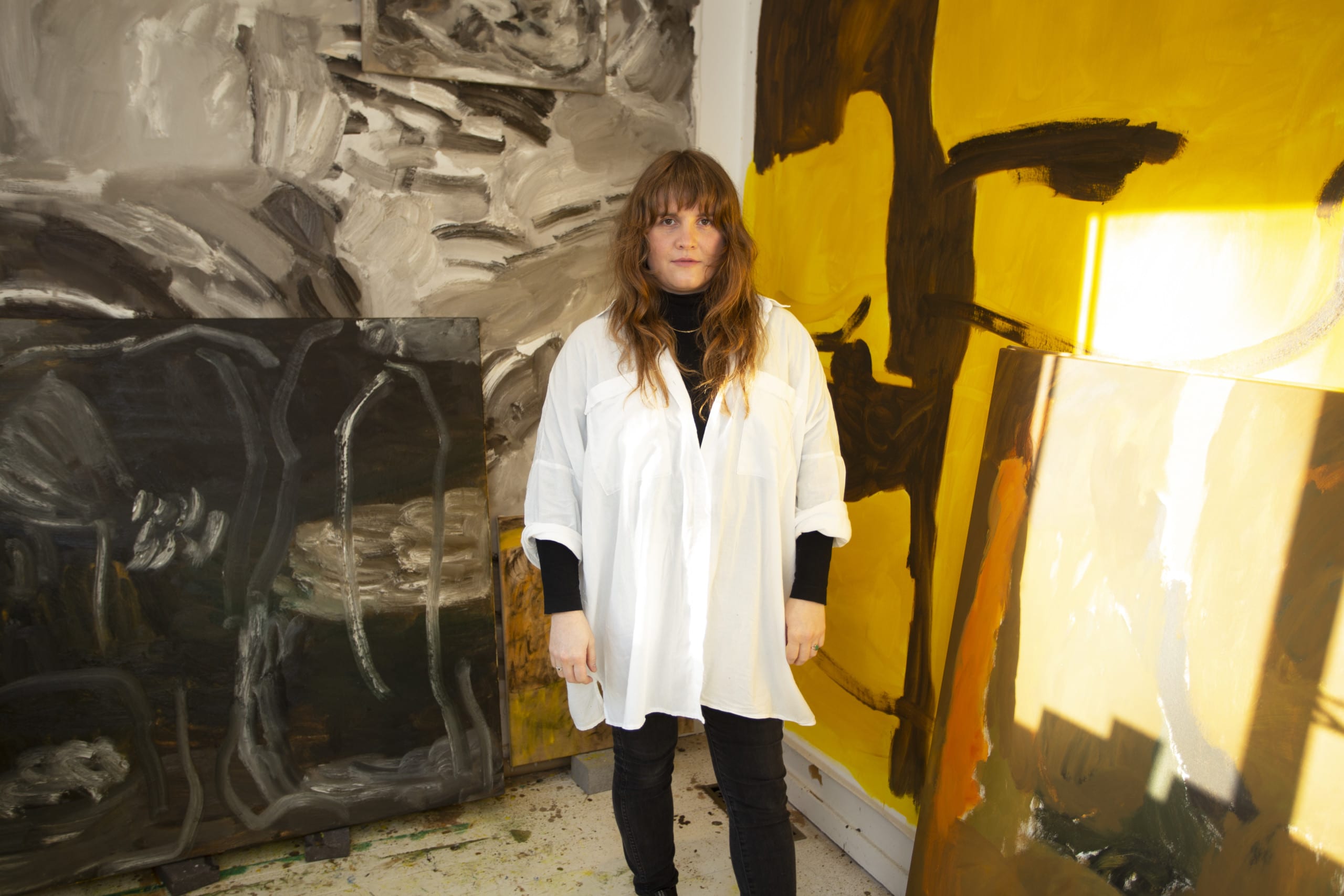

Eleanor Louise Butt in her studio, Melbourne, 2020. Photograph by Elle Ross
ARTIST STATEMENT
NEW WORKS, MELBOURNE 2020
In these new paintings, strong and solid forms were reinterpreted from preceding paintings and drawings.
I have been keeping a journal of sketches that provides fresh entry points to begin new paintings - these pencil sketches are the source of the pared-back palette of these works.
A large brush was loaded with paint and dragged across the surface, allowing chance and material to charge the lines with tension. The energetic line-work is suggestive of rough sculptural forms with deeply gouged contours. Bulging impasto surfaces developed, on which the emergent forms oscillate in dialogue with one another.
NEWS
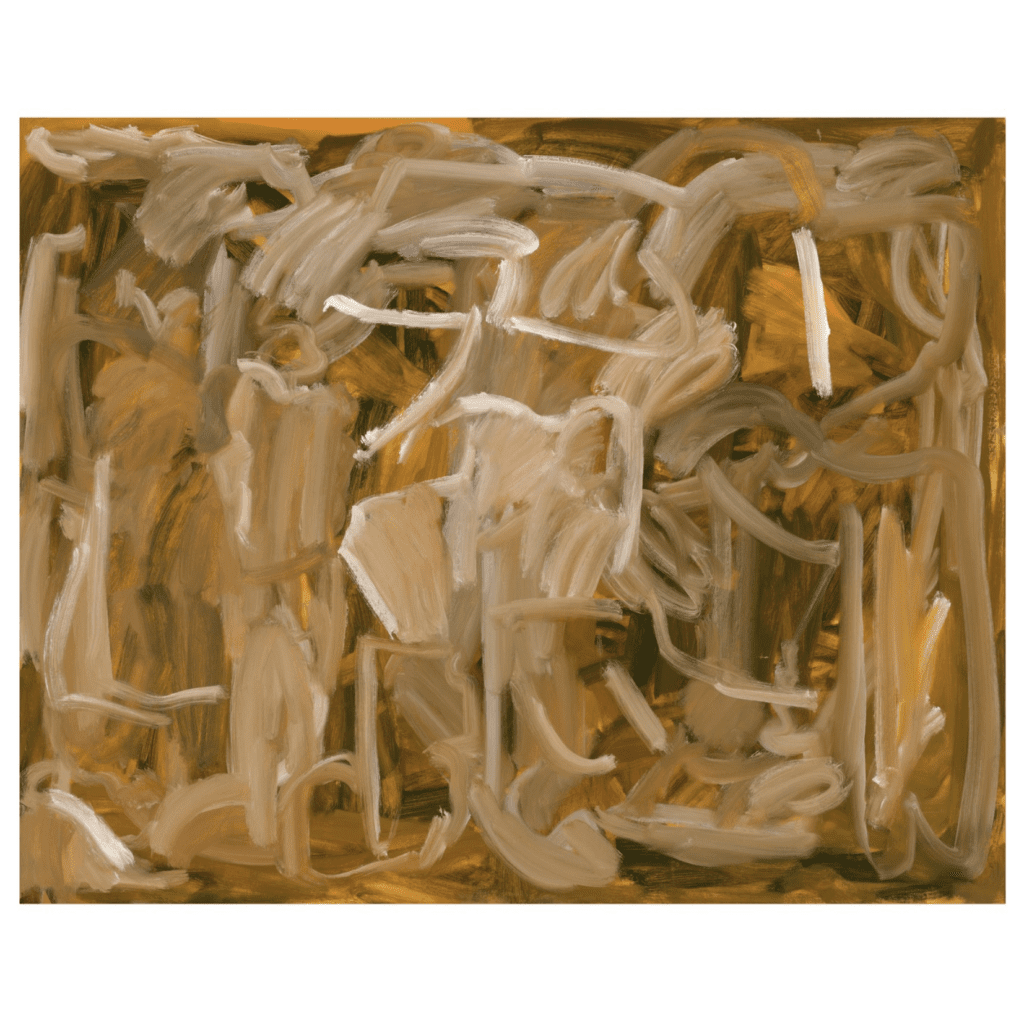
ELEANOR LOUISE BUTT FINALIST IN 2023 BAYSIDE ACQUISITIVE ART PRIZE
Eleanor Louise Butt is a finalist in the 2023 Bayside Acquisitive Art Prize with her painting ‘All that which sings’ . Established in 2015, the Bayside Acquisitive Art Prize is a celebration of contemporary Australian painting. The finalist exhibition brings together a broad range of artists, both established and lesser known, whose varied approaches to…
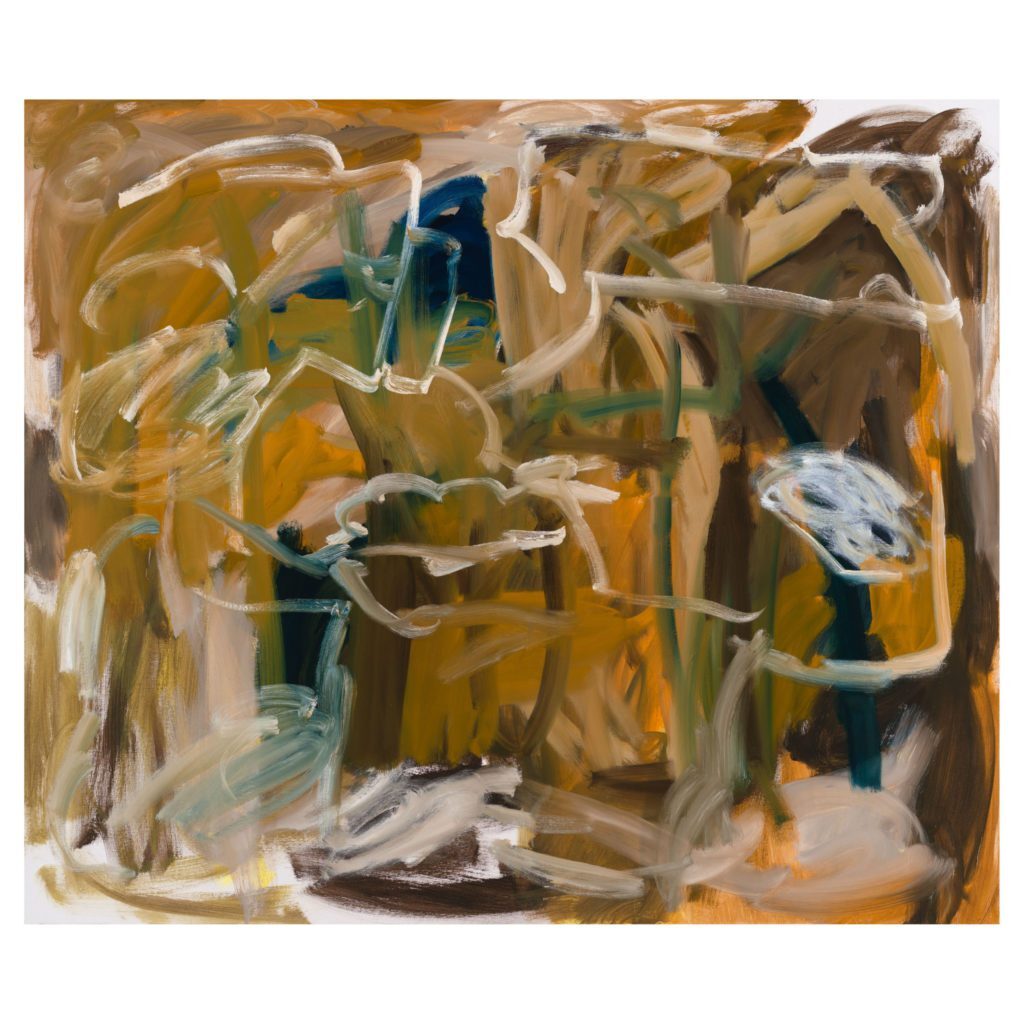
ELEANOR LOUISE BUTT FINALIST IN MUSWELLBROOK ART PRIZE 2023
Established in 1958, the Muswellbrook Art Prize is one of the most celebrated prizes for painting in regional Australia. Astute adjudication of the Prize over the years has yielded an excellent collection of modern and contemporary Australian paintings, works on paper and ceramics from the Post War period of the 20th Century and into the 21st Century,…
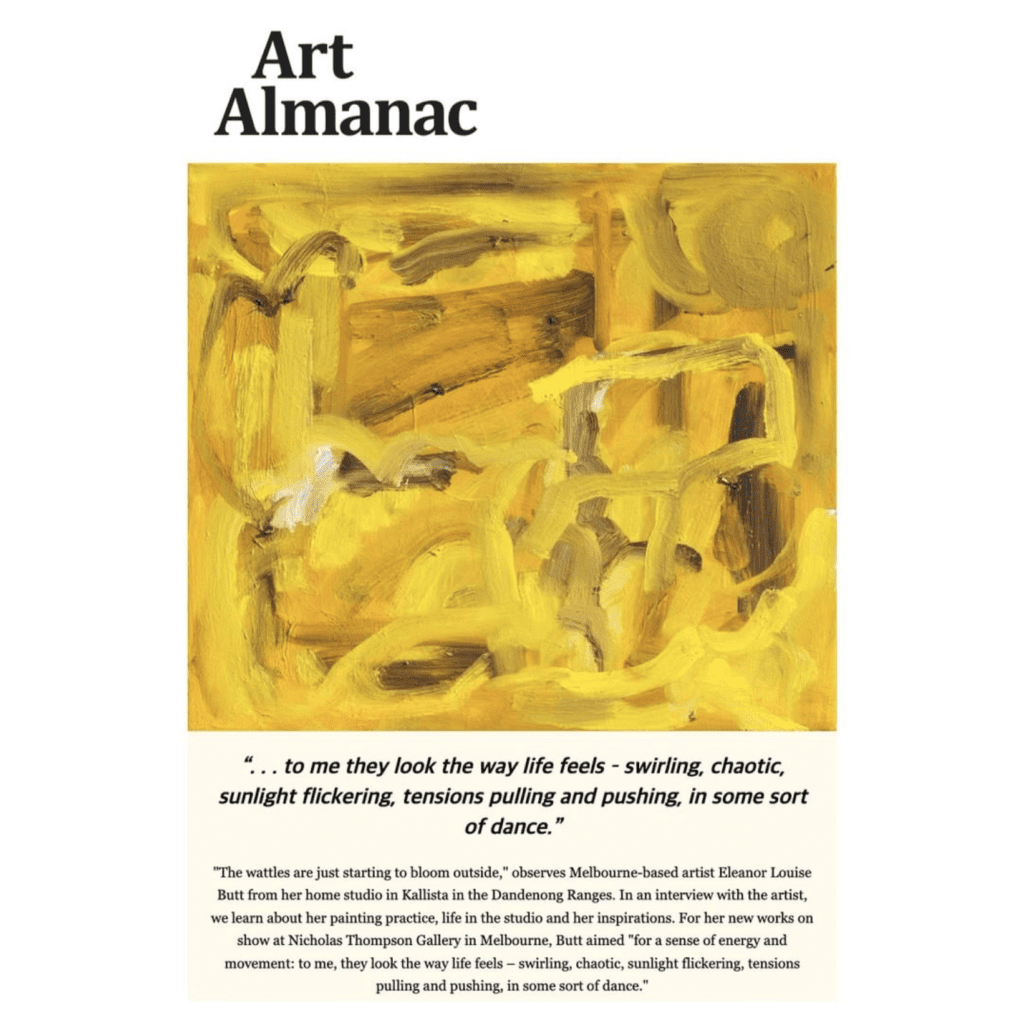
ELEANOR LOUISE BUTT PROFILED IN ‘ART ALMANAC’ SEPTEMBER 2022
In the studio: Eleanor Louise Butt 15 September 2022 | Kirsty Francis SHARE “. . . to me they look the way life feels – swirling, chaotic, sunlight flickering, tensions pulling and pushing, in some sort of dance.” Bold compositional lines and forms, gestural marks, a rich golden colour palette, and a textured materiality that springs…
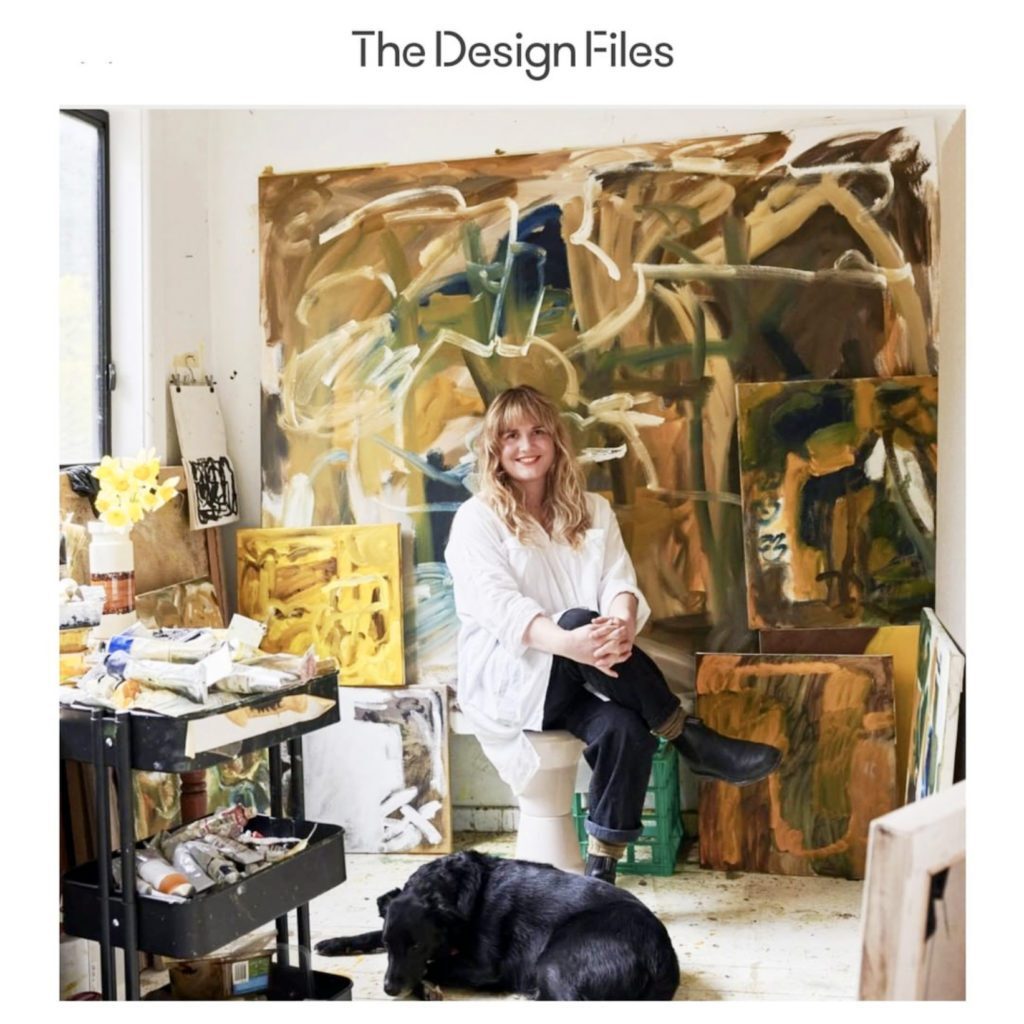
ELEANOR LOUISE BUTT FEATURED IN ‘THE DESIGN FILES’
An Artist’s Home Bursting With Her Own Beautiful Golden-Toned Paintings STUDIO VISIT If Eleanor Louise Butt’s expressive paintings look familiar, it’s because the artist has already made her colourful mark on the local and international art scene. We featured Eleanor back in 2020, (when she was on residency in Cornwall, UK!) but you might also recognise her…
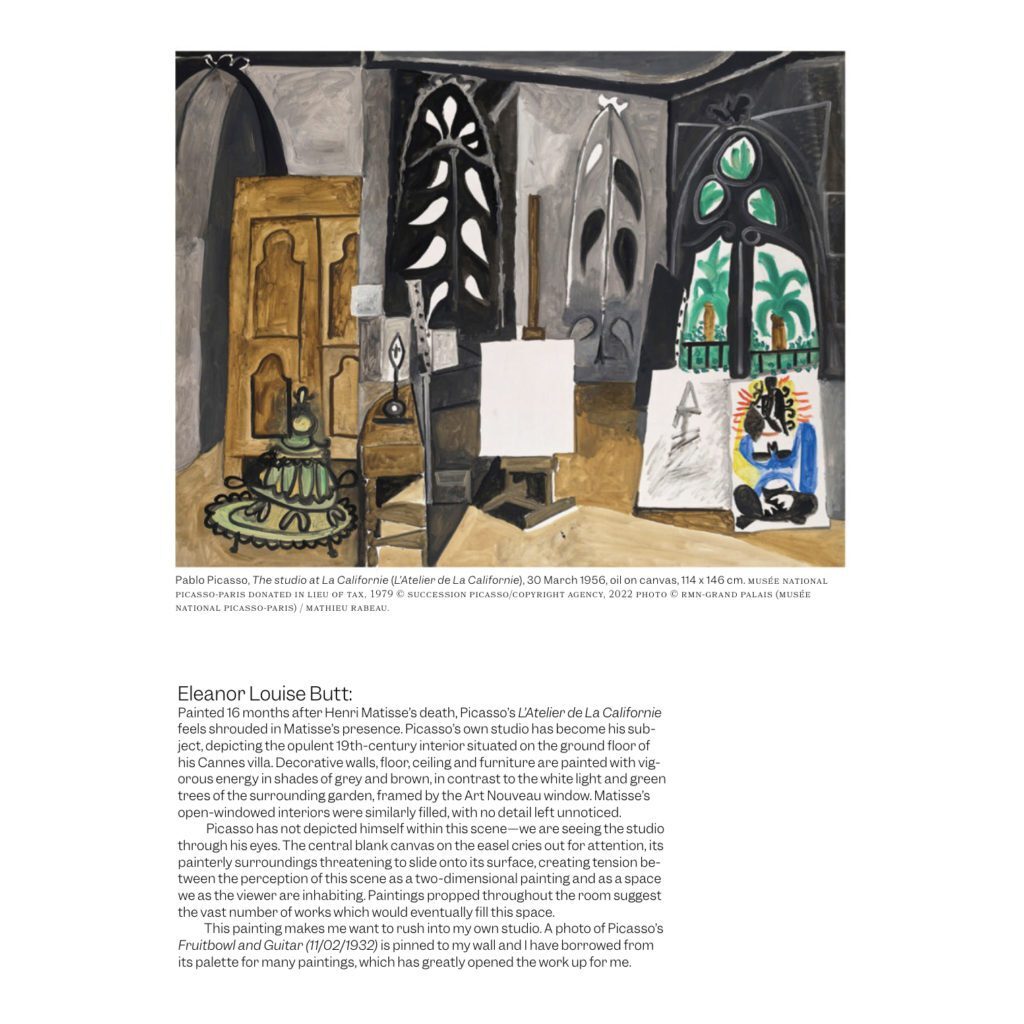
ELEANOR LOUISE BUTT ON PABLO PICASSO’S ‘THE STUDIO AT LA CALIFORNIE’ 1956 IN MAY/JUNE 2022 ISSUE OF ART GUIDE AUSTRALIA
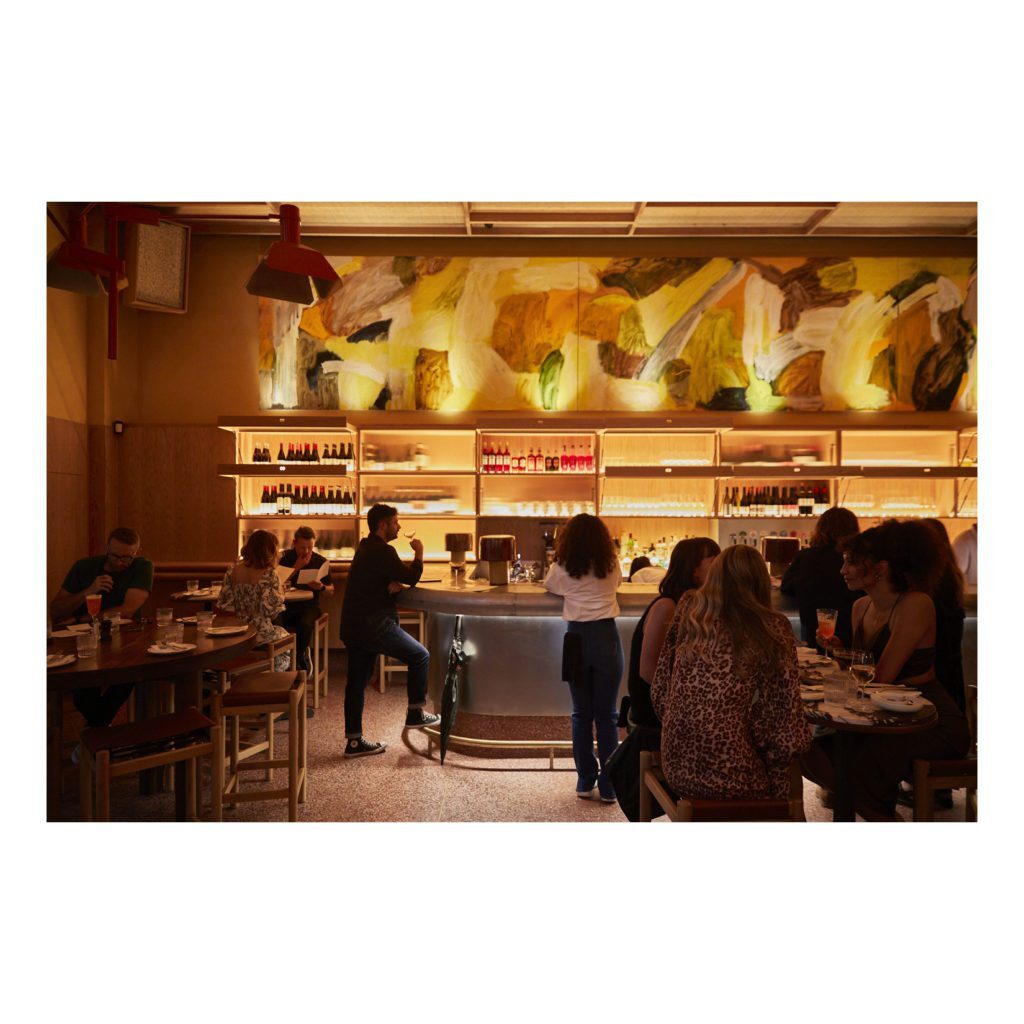
ELEANOR LOUISE BUTT’S 10 METRE COMMISSIONED WORK ‘MUSIC & TREES’ ON VIEW AT HER BAR, MELBOURNE CBD
Eleanor Louise Butt’s ten metre commissioned work ‘Music and Trees’ can now be viewed installed at the newly opened HER BAR in Lonsdale Street, Melbourne . “During the spring of 2021 I travelled through a forest daily to get to the studio where I made this painting. The light shone through the new leaves and…
- « Previous
- 1
- 2
- 3
- Next »
